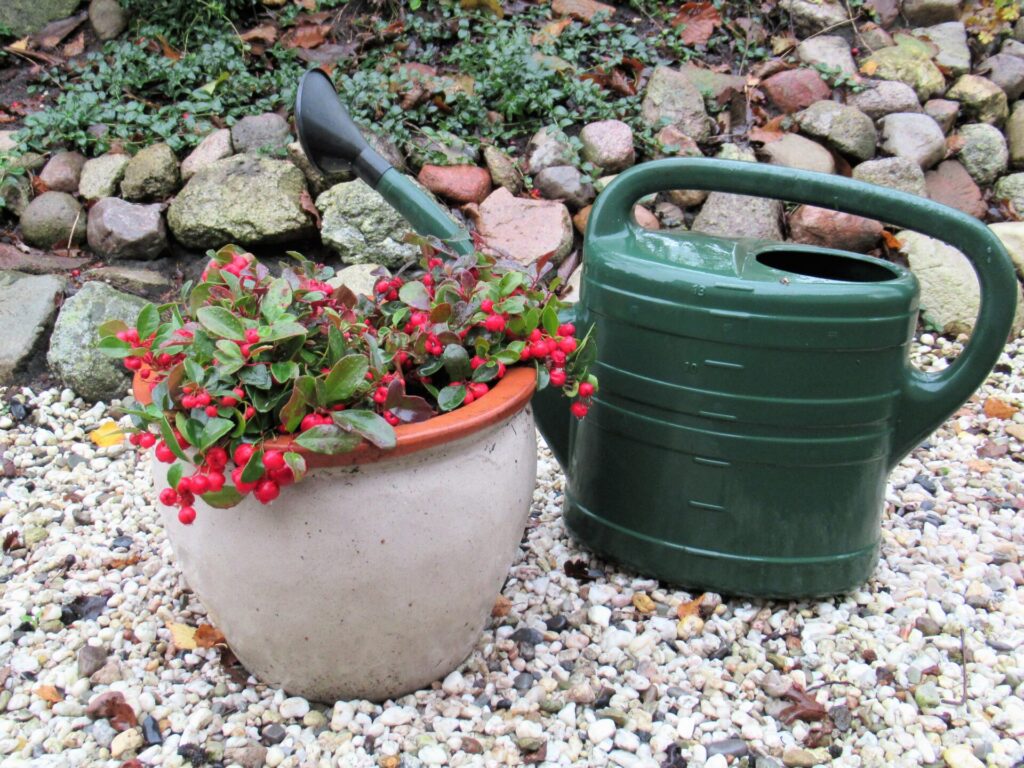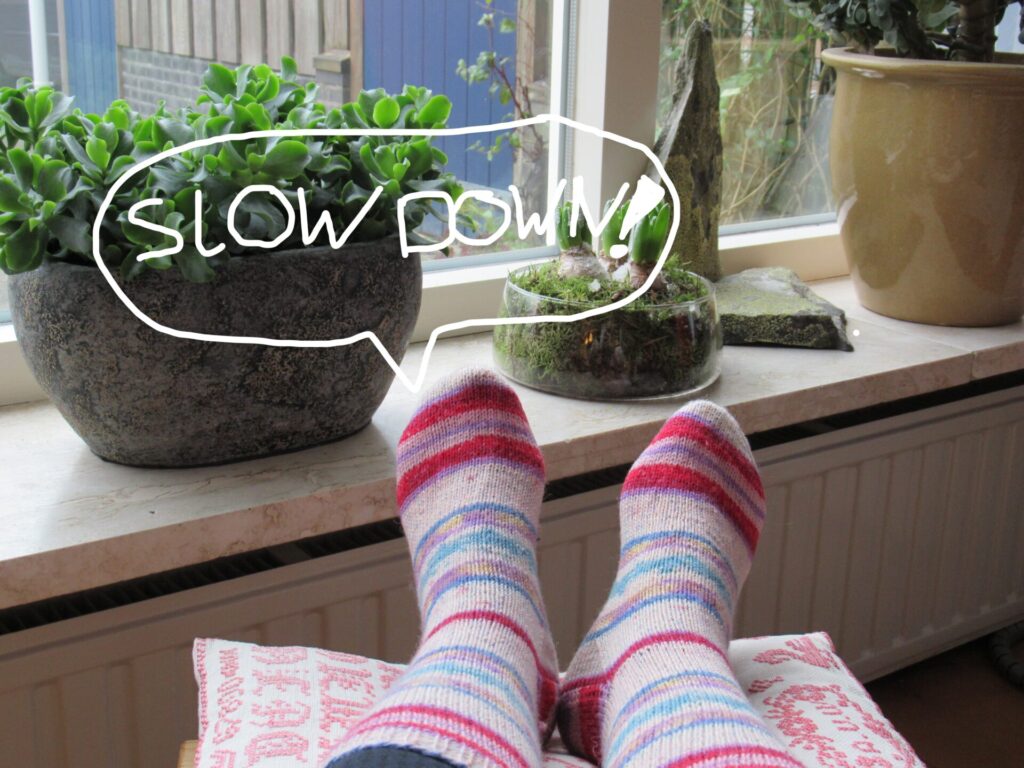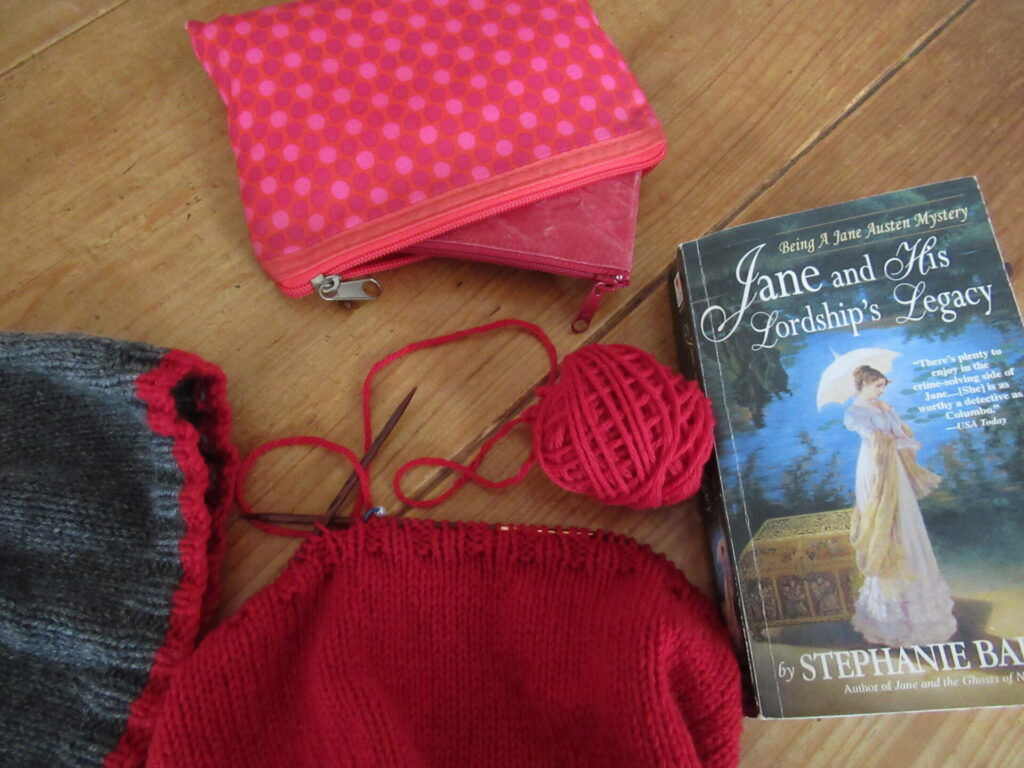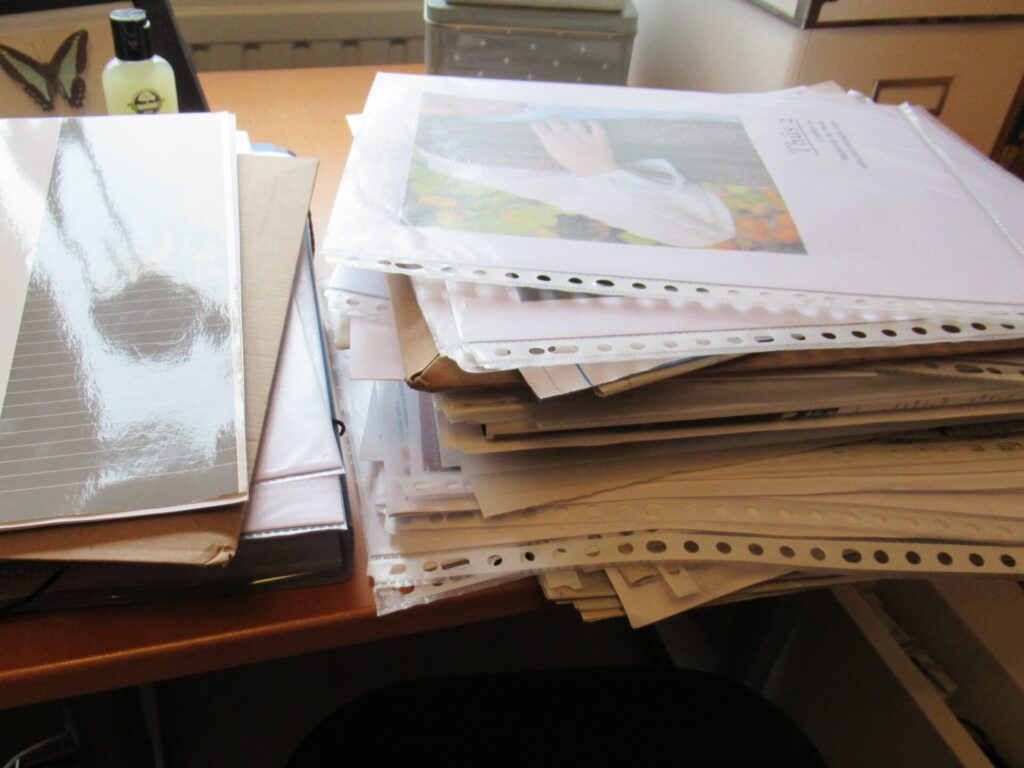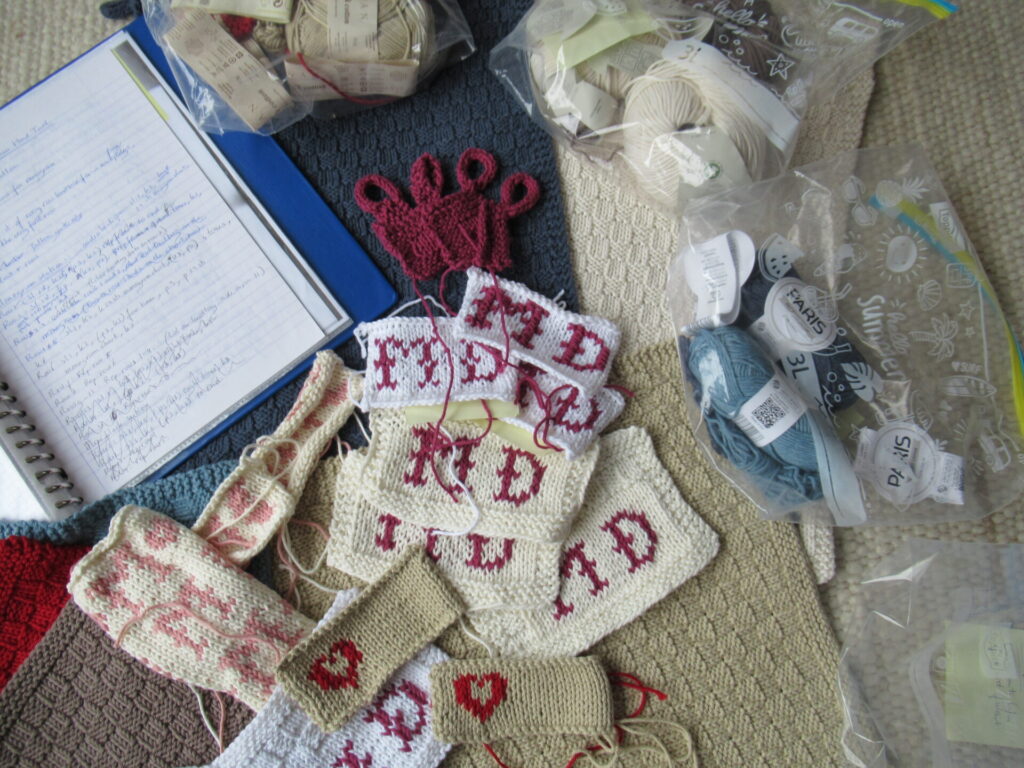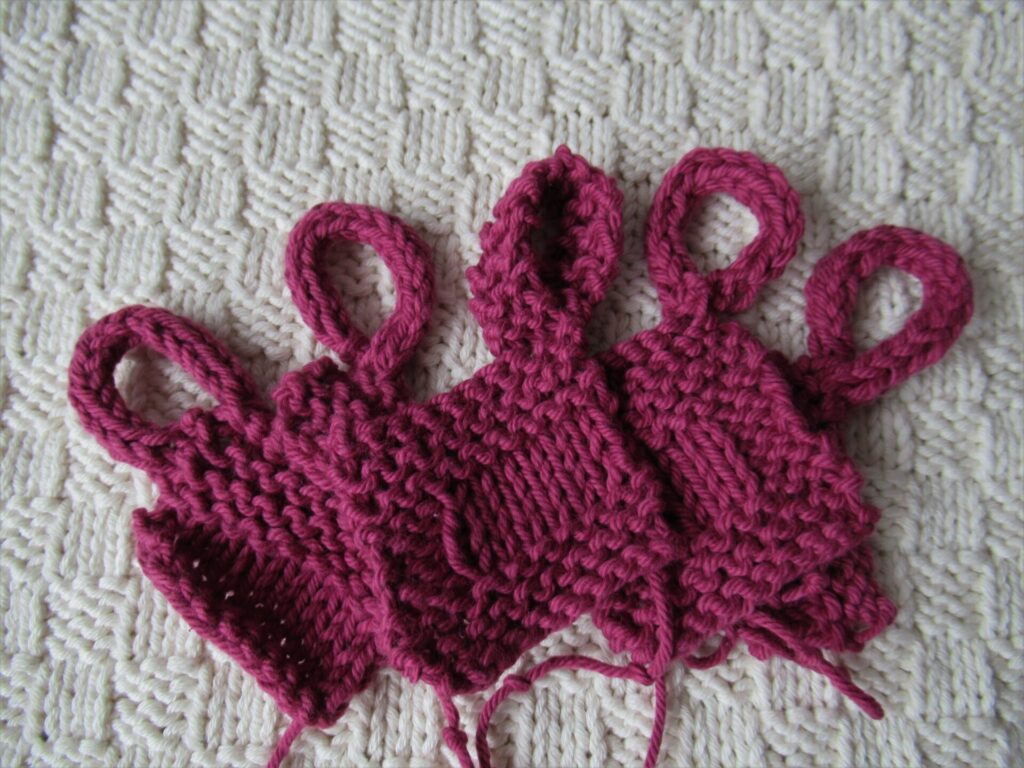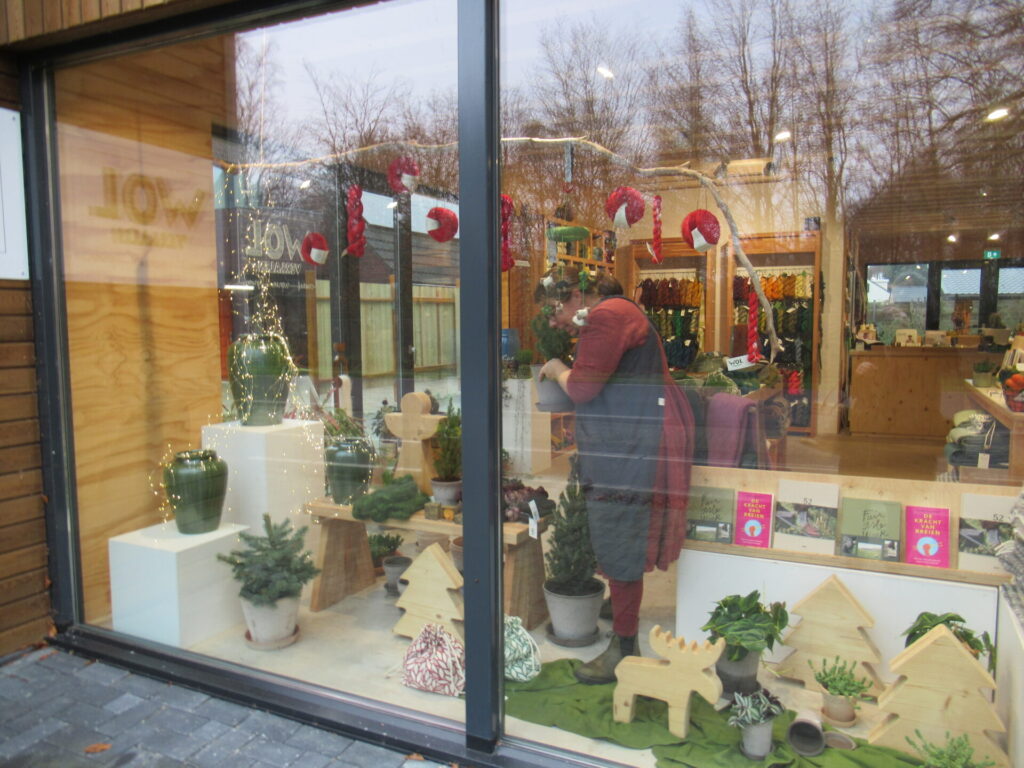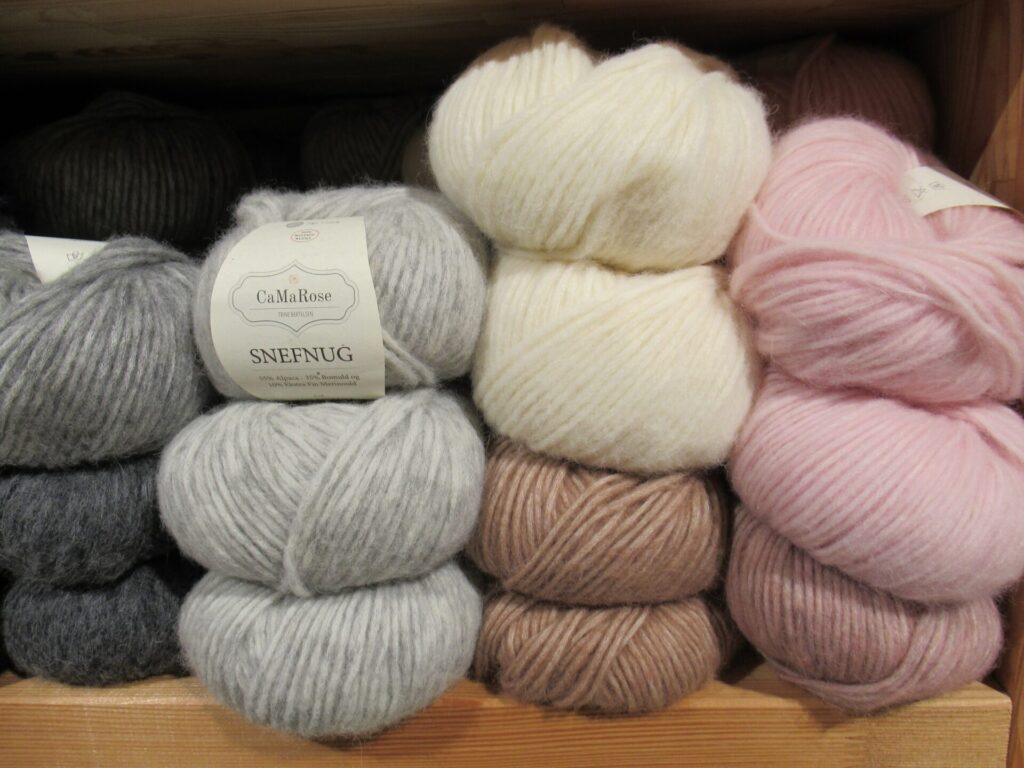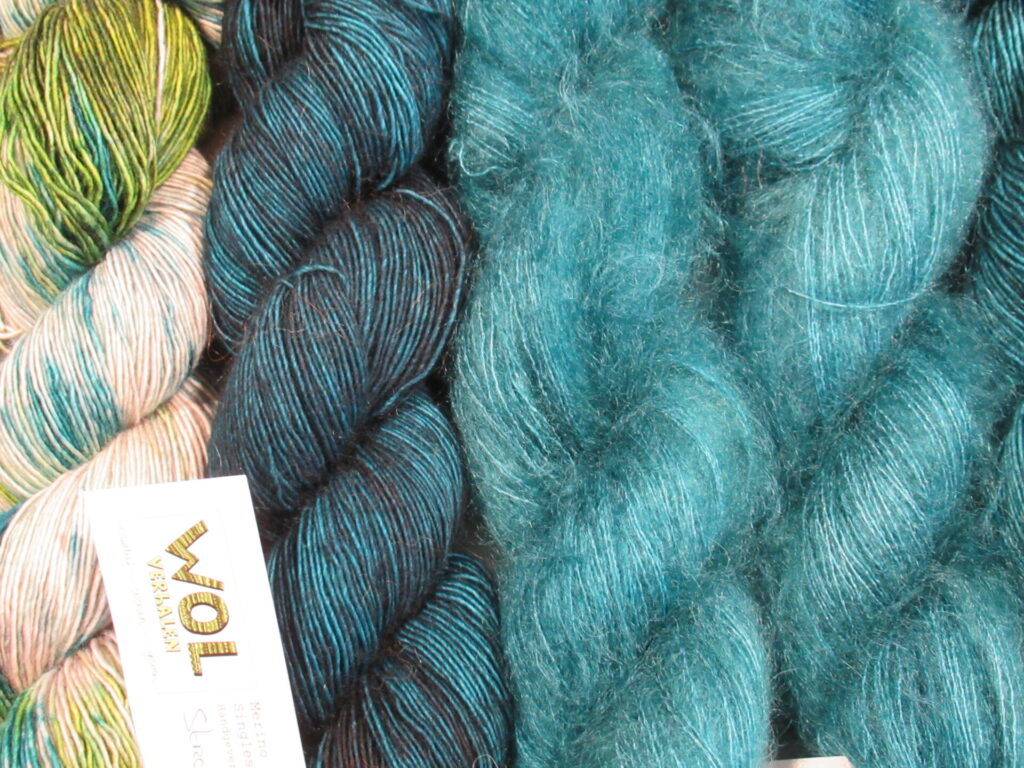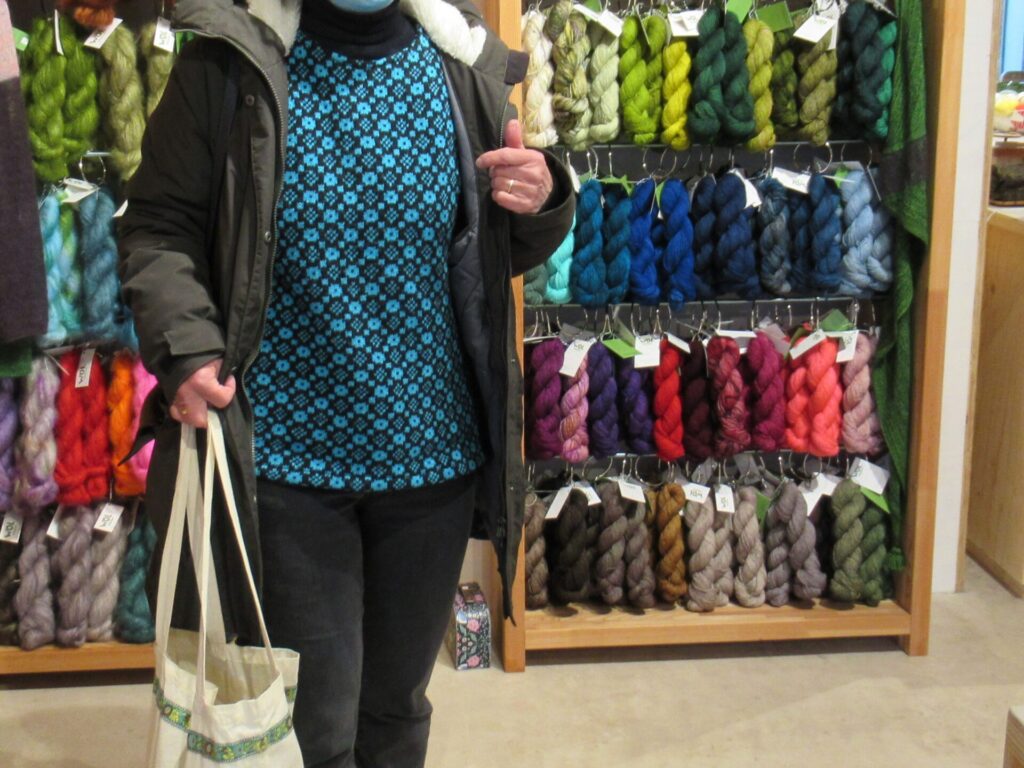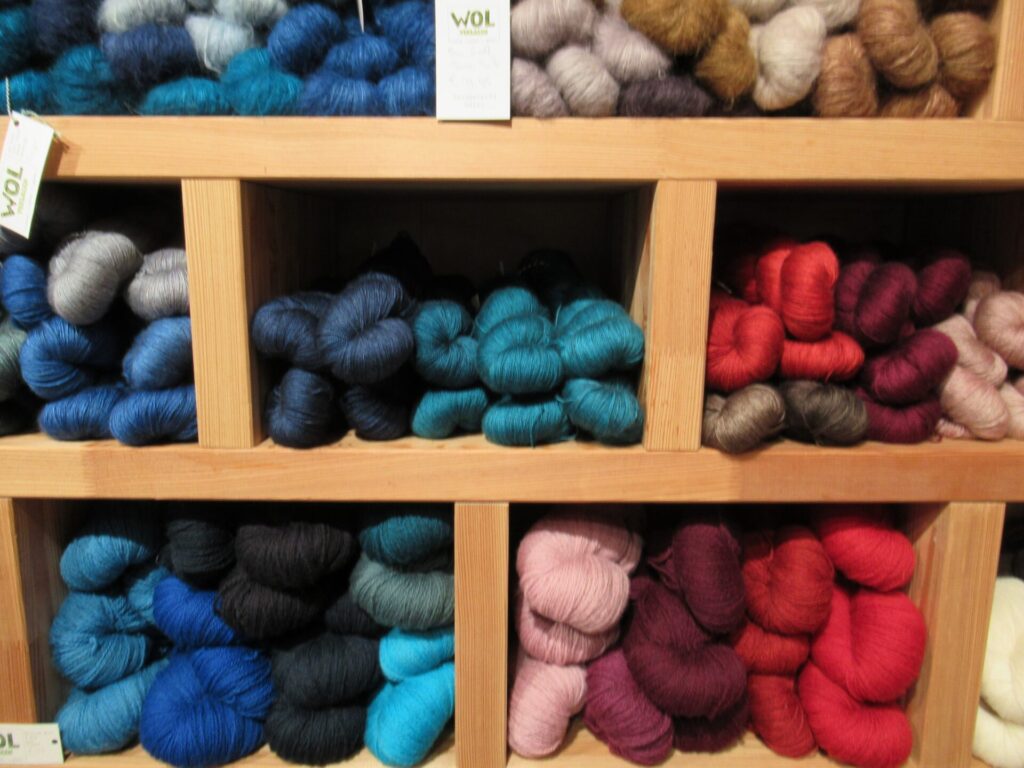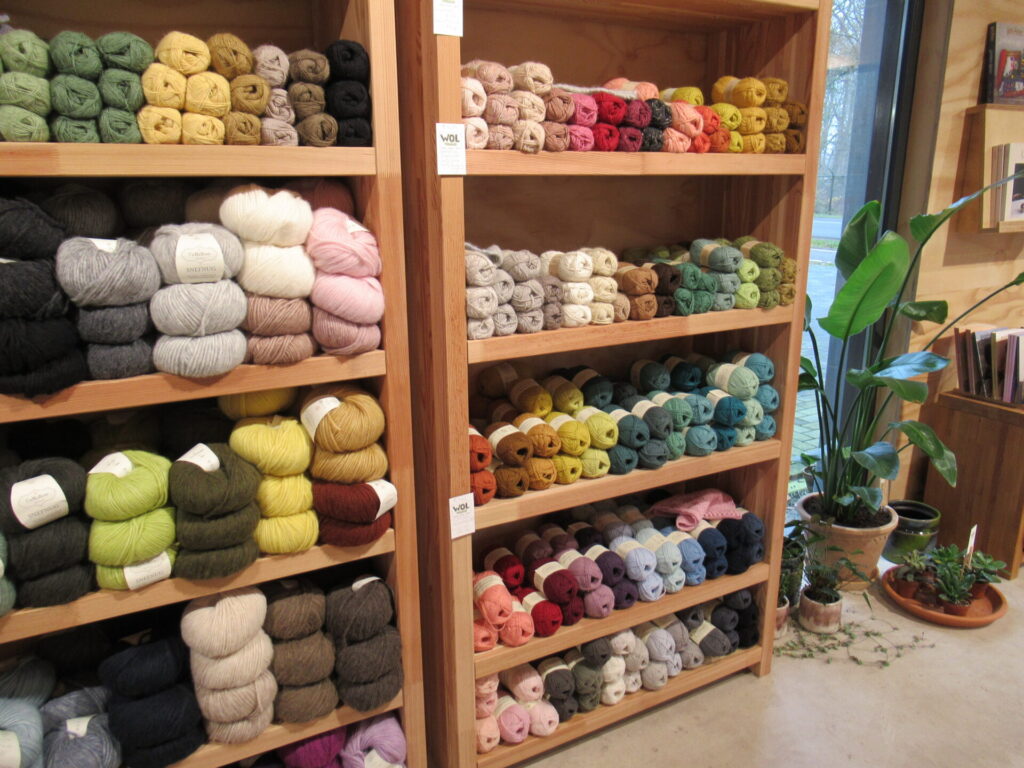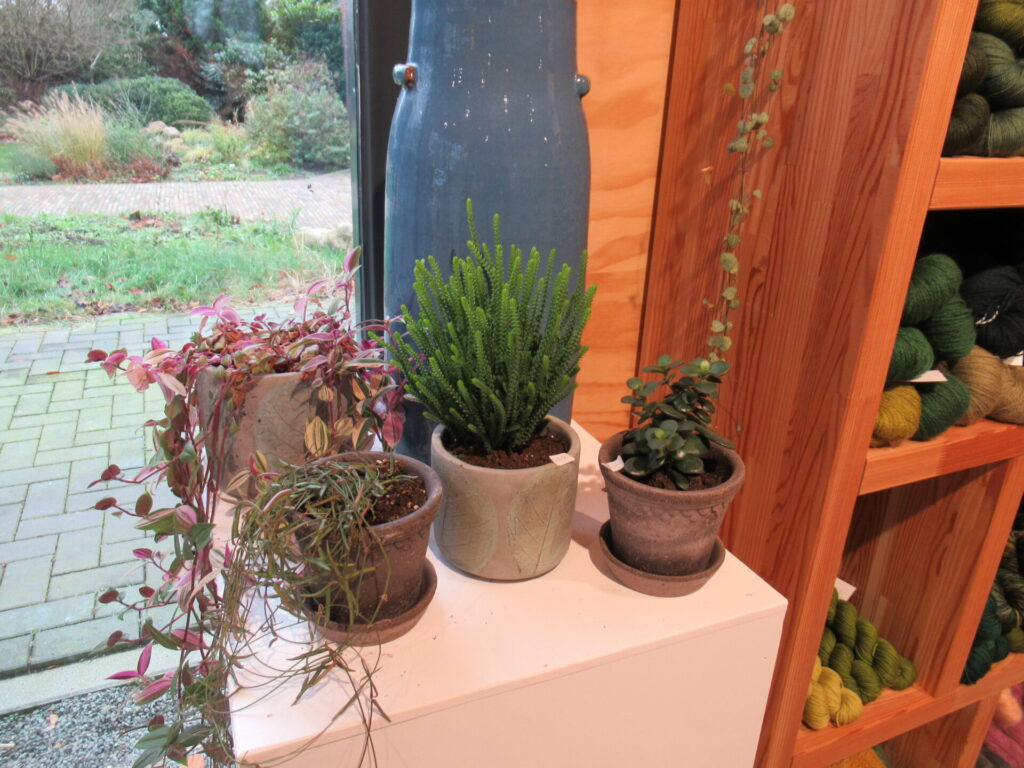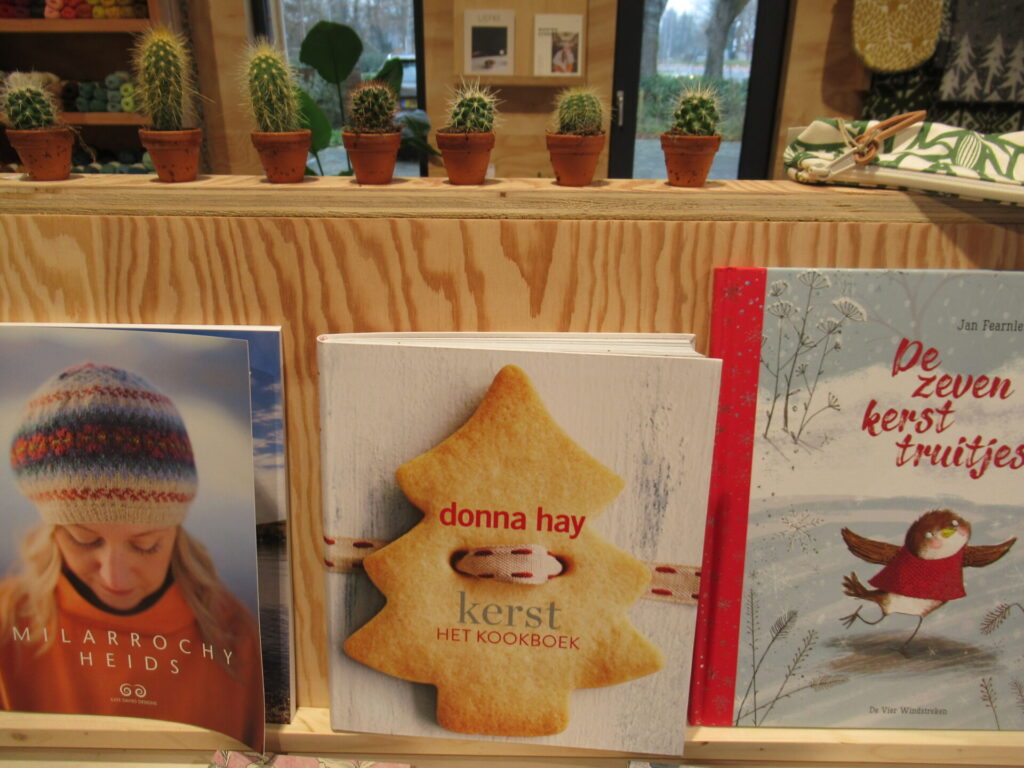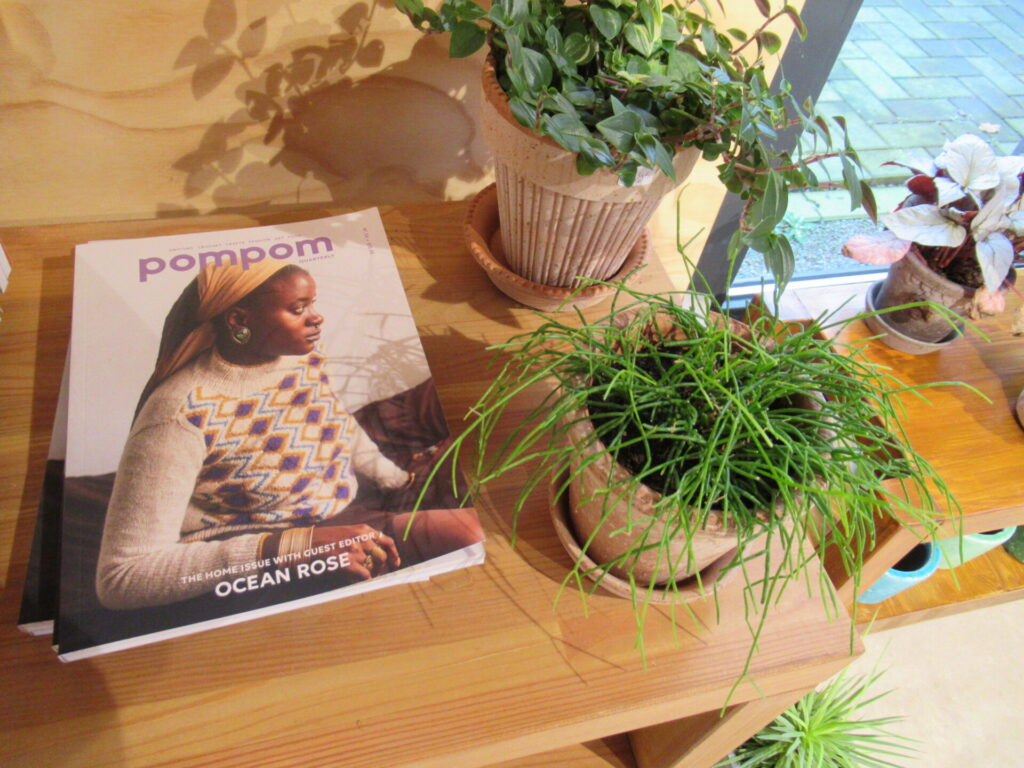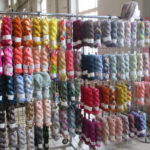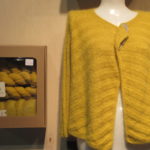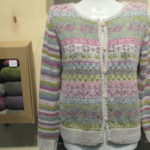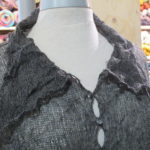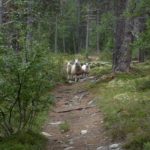shopping
Farmers’ Market 2020
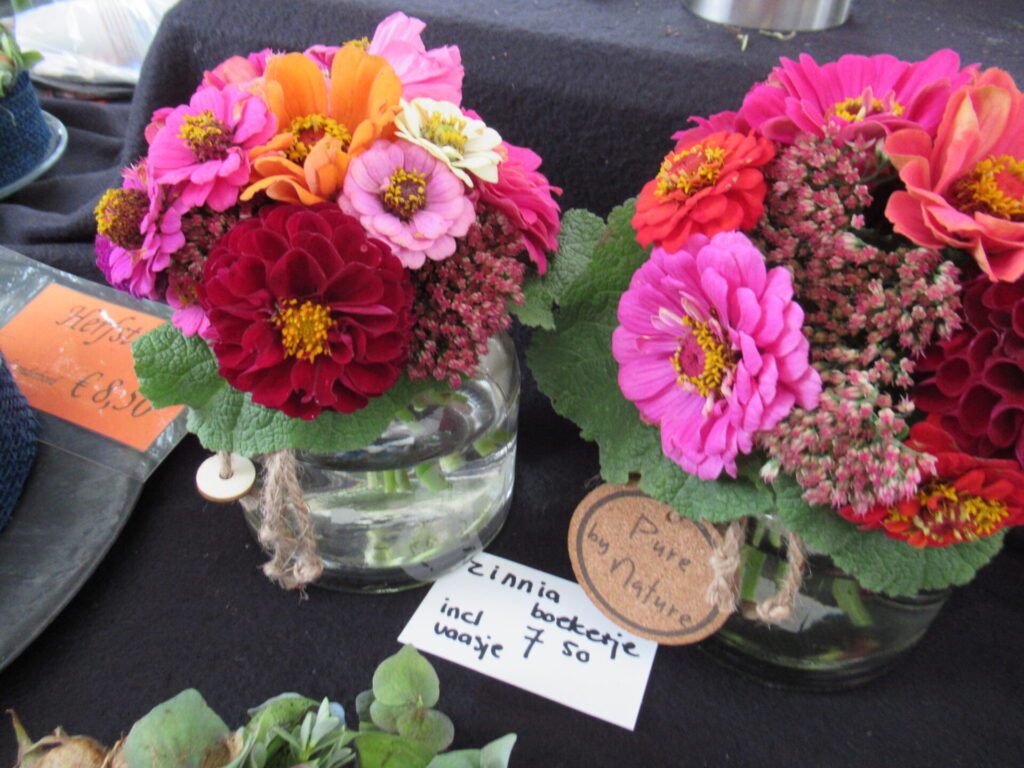
Hello!
First of all, thank you so much for all of your kind comments about my Thús 2 scarf, here and on Ravelry. If you’re going to knit it, I hope knitting it will bring you as much pleasure as it did me.
Today, I’m taking you along for some outdoor shopping. A visit to our nearest Farmers’ Market is one of the highlights of the month for me. Normally, it is held once a month from spring through autumn, with an extra Christmas edition in December. This year, it didn’t start until the summer, and there isn’t going to be a Christmas Market, but I’m glad that we’ve been able to go a few times.
Apart from the late start, several other things were different, too. The singer with her guitar was absent, the stalls were spaced out a little more, and there were red-and-white tape and arrows for managing the ‘crowds’.
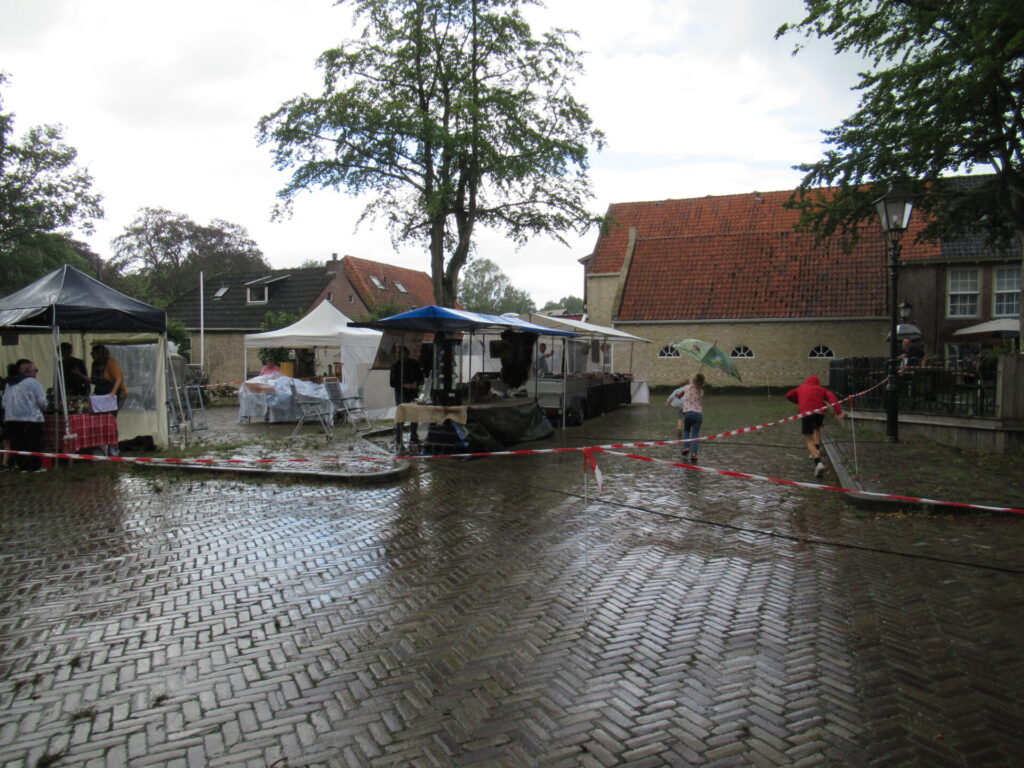
It was raining when I took this picture, and there are usually a few more people strolling around, but this market never attracts anything remotely like a crowd. Still, it’s good to be on the safe side.
Other than that, it was the same enjoyable place, with the same friendly people and the same attractive wares.
One of the things we always buy here is cheese. The ones below are made from cow’s milk with chives (left) and fenugreek (right).
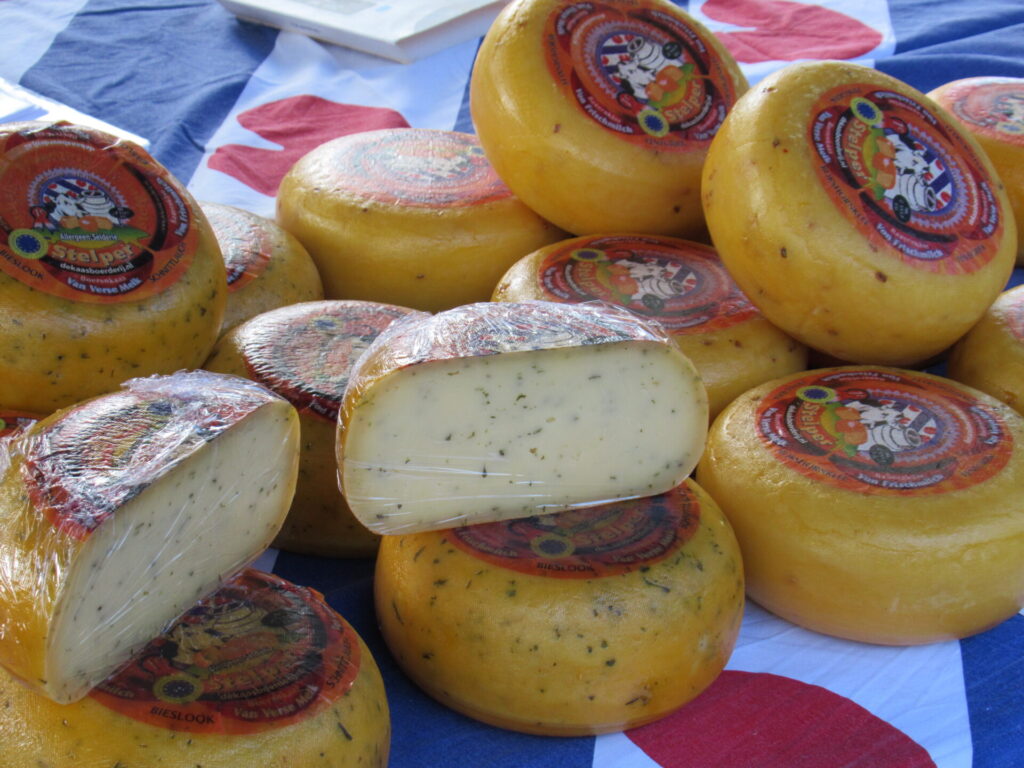
Our favourites are Doetie’s goat’s cheeses. She makes different varieties – harder ones that have been left to mature for a while…

… and soft, fresh ones that cannot be kept long (they never are in our house anyway). The heart-shaped ones below on the left are like a mild brie and the grey ones on the right have a layer of ashes on the outside and are sharper.
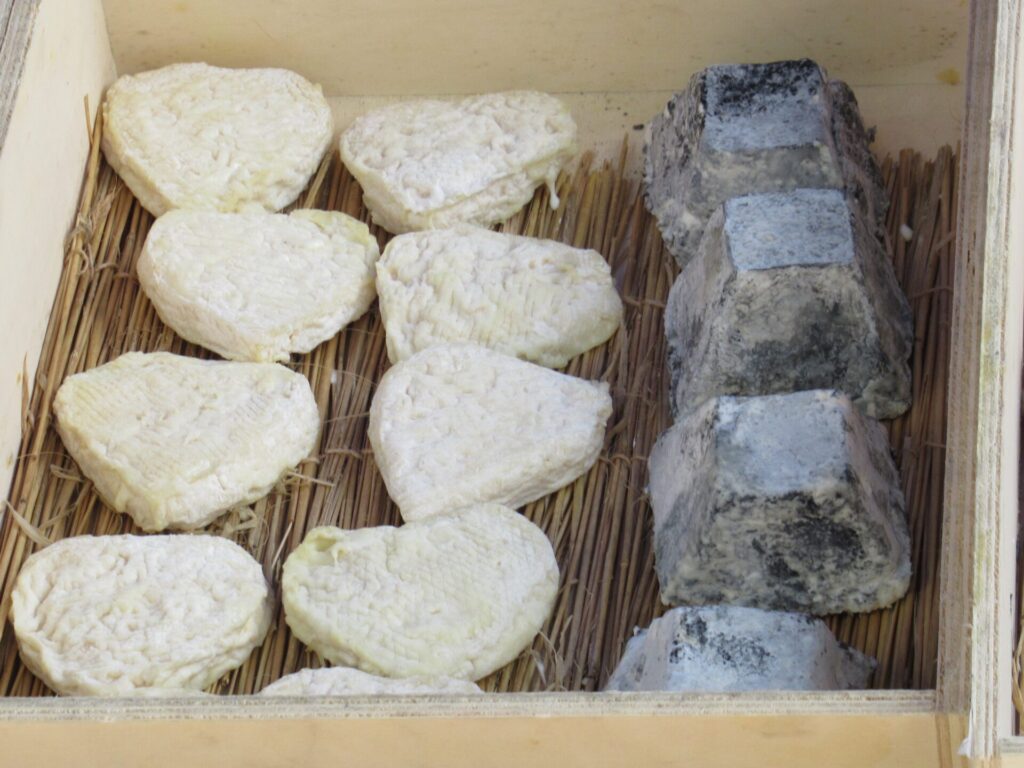
There was also a new stall this year, selling sheep’s cheese, skins and other sheep products.
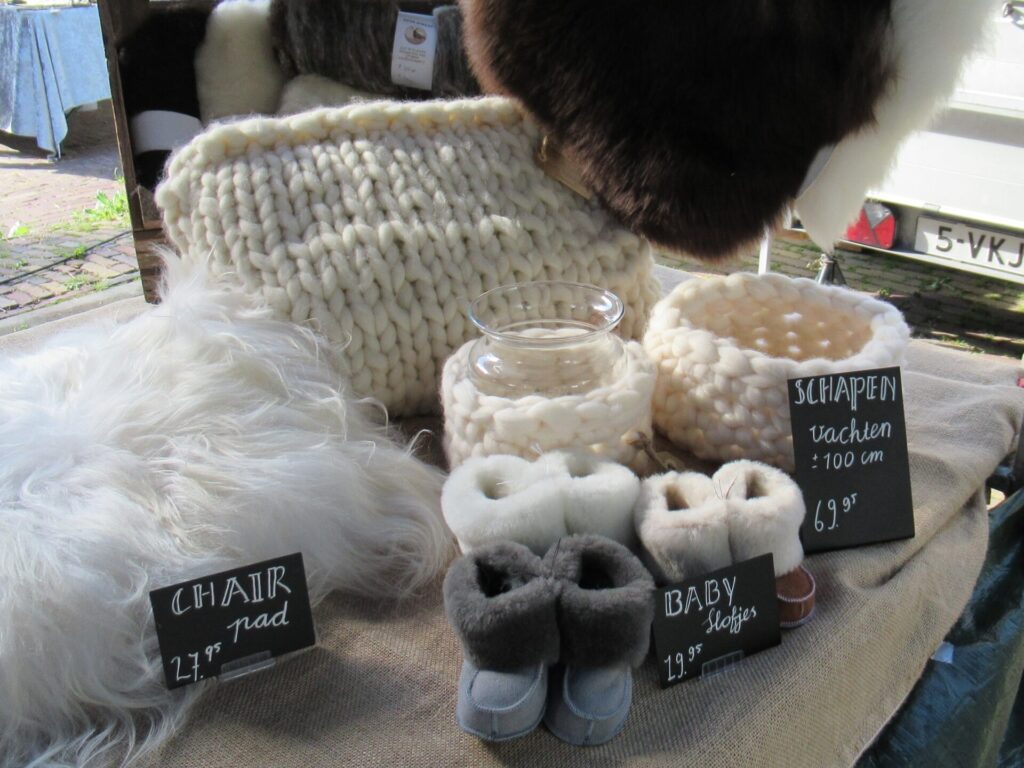
From them, I bought 30 grams of unspun Frisian dairy sheep’s wool. I’ll let you know more about that when I’ve spun it.
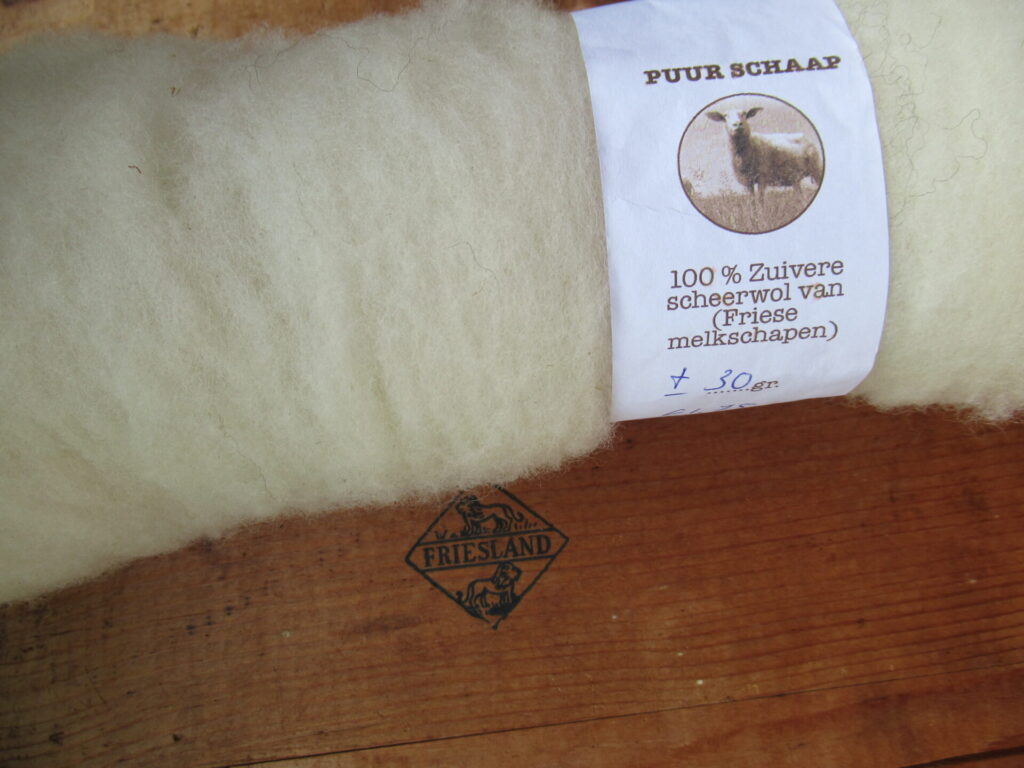
Another fairly new face here, is soap maker Melanie’s. She didn’t actually want to show her face here (I understand – I’d feel just the same), but I’m happy with a few pictures of her soaps.
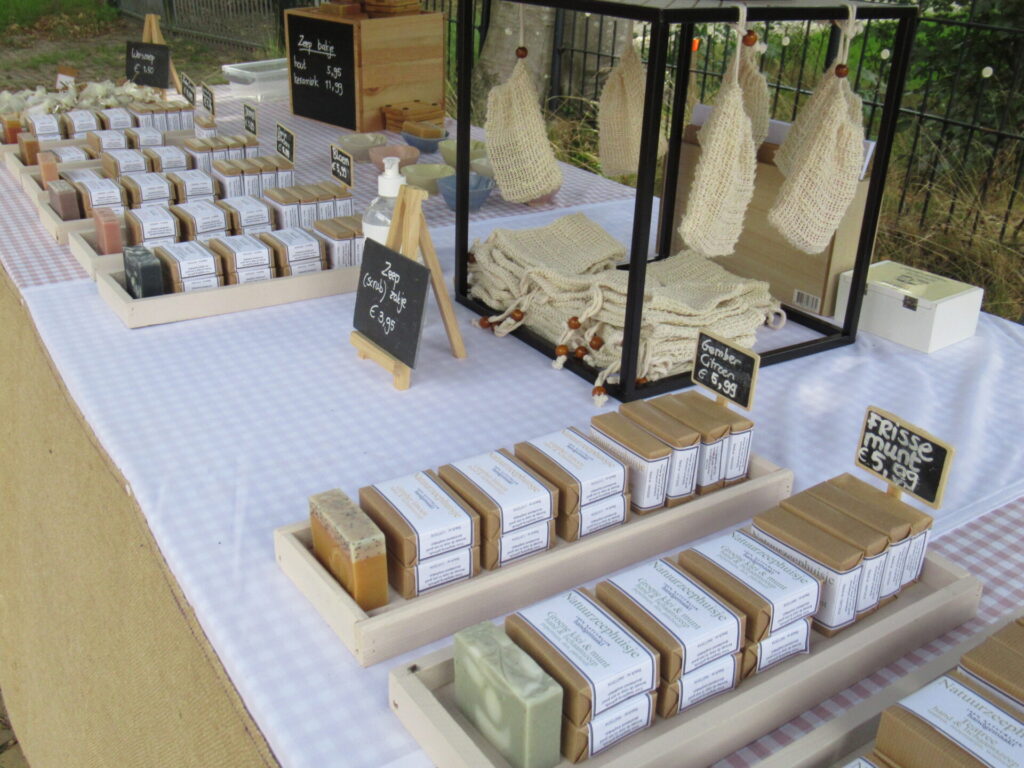
Melanie uses only natural ingredients, including flowers, plant extracts and essential oils. In addition to hand and body soaps, she also makes hair soap bars (to be used instead of shampoo).
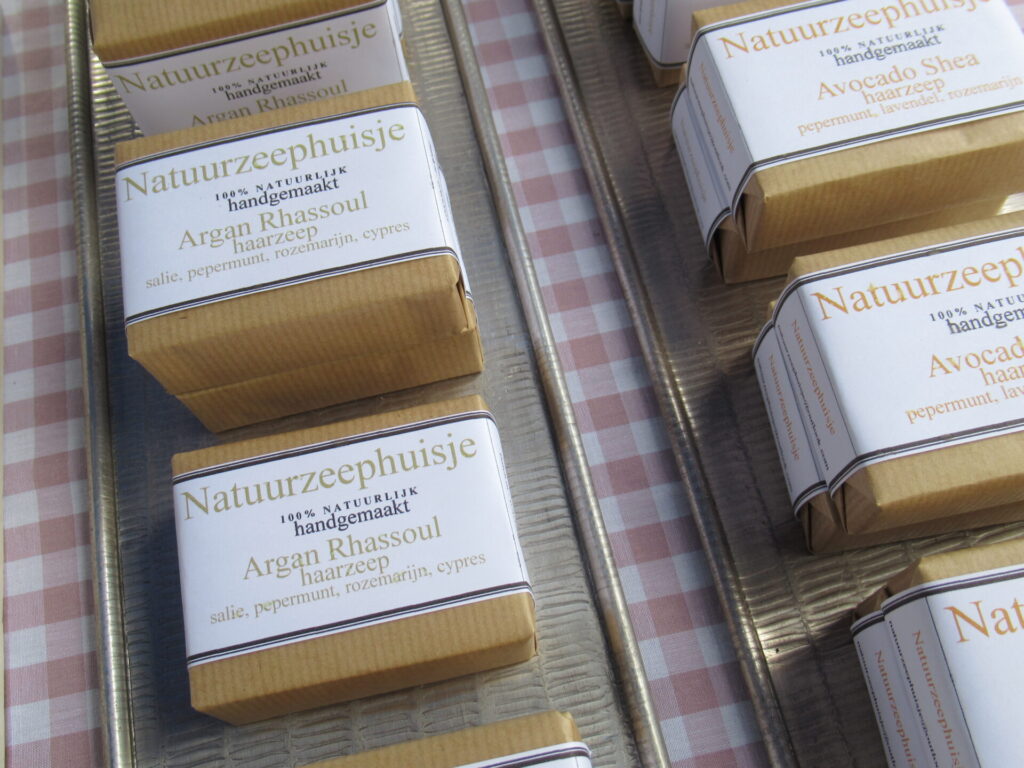
She also sells a mixture of different ‘tastes’ and shapes in jars.
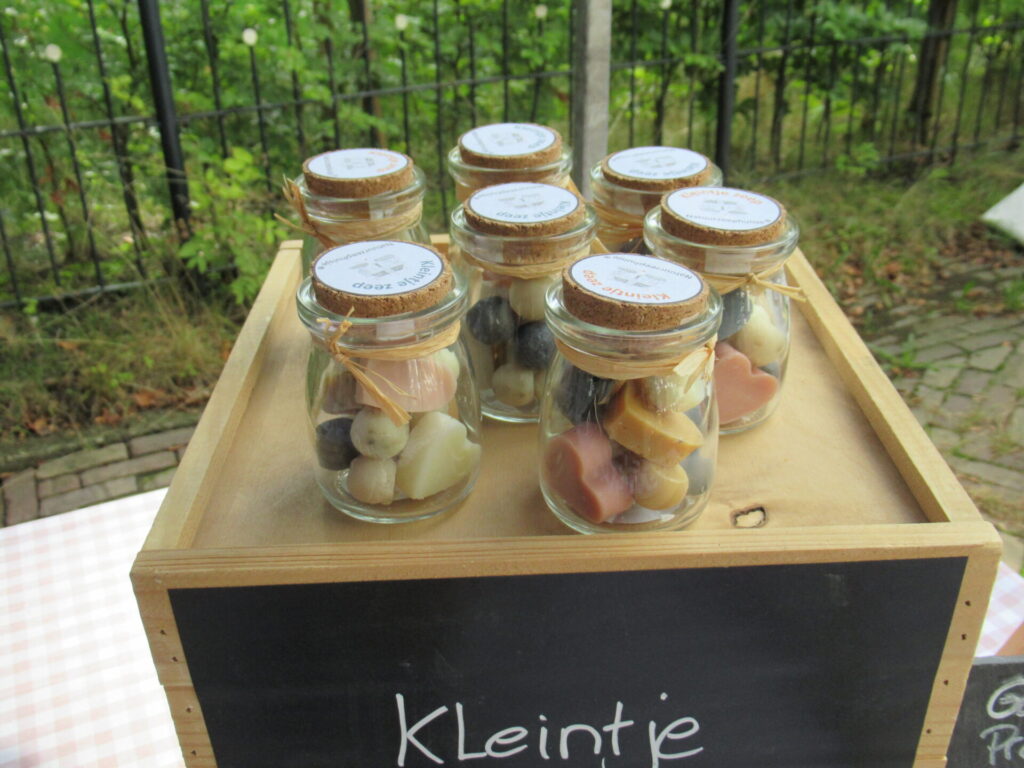
I first bought one of her handmade natural soap bars last year – cinnamon soap with poppy seeds as a scrub element. I loved it! This year I went back for more, not just to wash with, but also as accessories for photographs of my next knitting design. I’ll tell you more about that next week or the week after.
Our next stop is the tea stall. Liesbet blends all her teas and tisanes herself, using organic ingredients. Her blends have fun names like ‘feet-up-on-the-sofa-tea’, ‘shivery-weather-tea’ and ‘everything’s-gonna-be-fine-tea’.
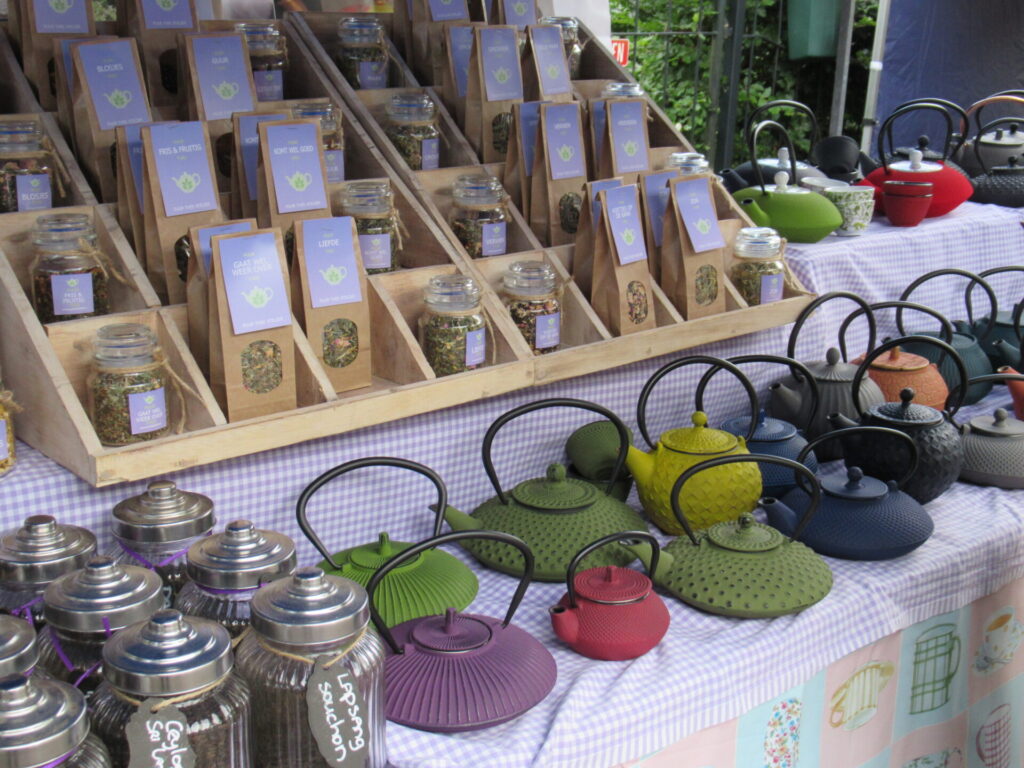
What makes this market so special to me is its small scale, the relaxed atmosphere, and especially the people, like goat farmer Doetie, tea blender Liesbet, and soap maker Melanie. Their products are totally different, but all made with much love, expertise and their own two hands. (None of them have webshops, or I would link to them here.)
And here is another pair of hands – that of the flower lady (I don’t know her name).
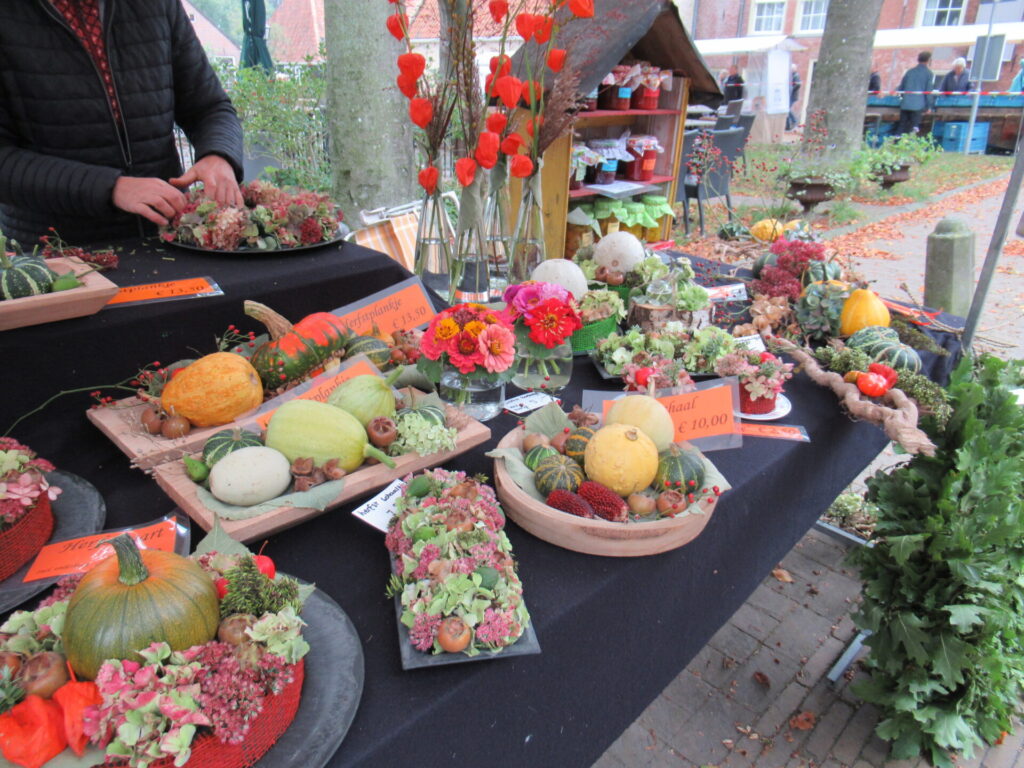
A wreath similar to the one she is working on still graces our dining table.
Well, the clock on the church tower tells us it’s time to head home for some lunch. Have a lovely weekend and I hope to see you here again next week!
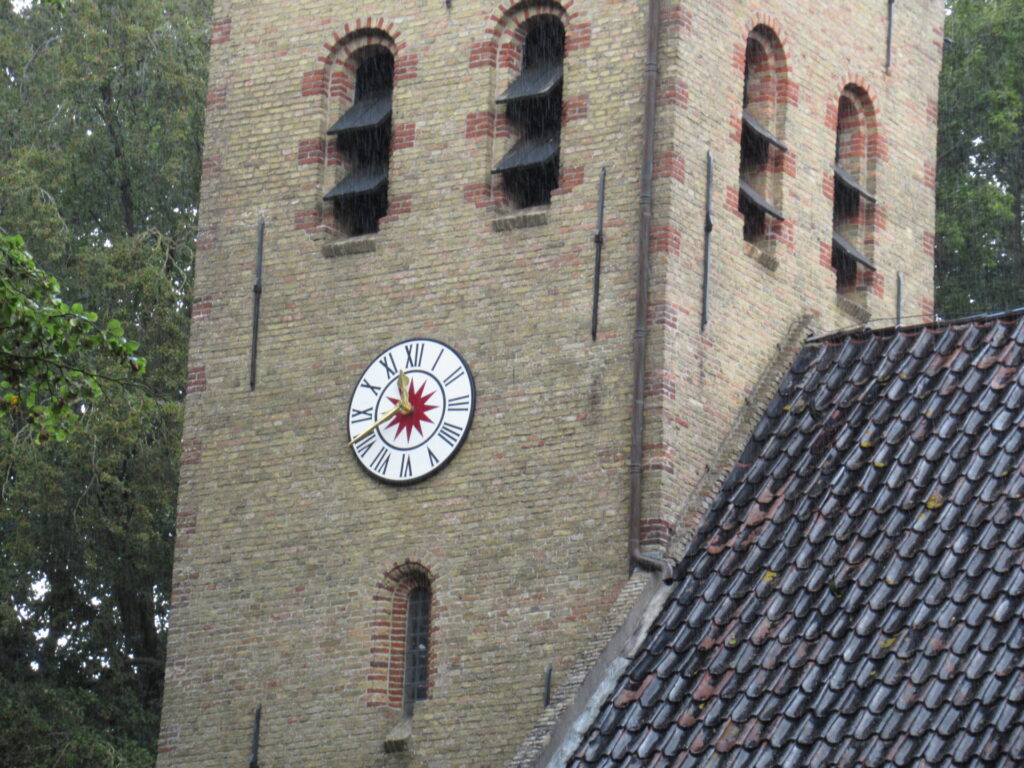
Not So Tiny Anymore
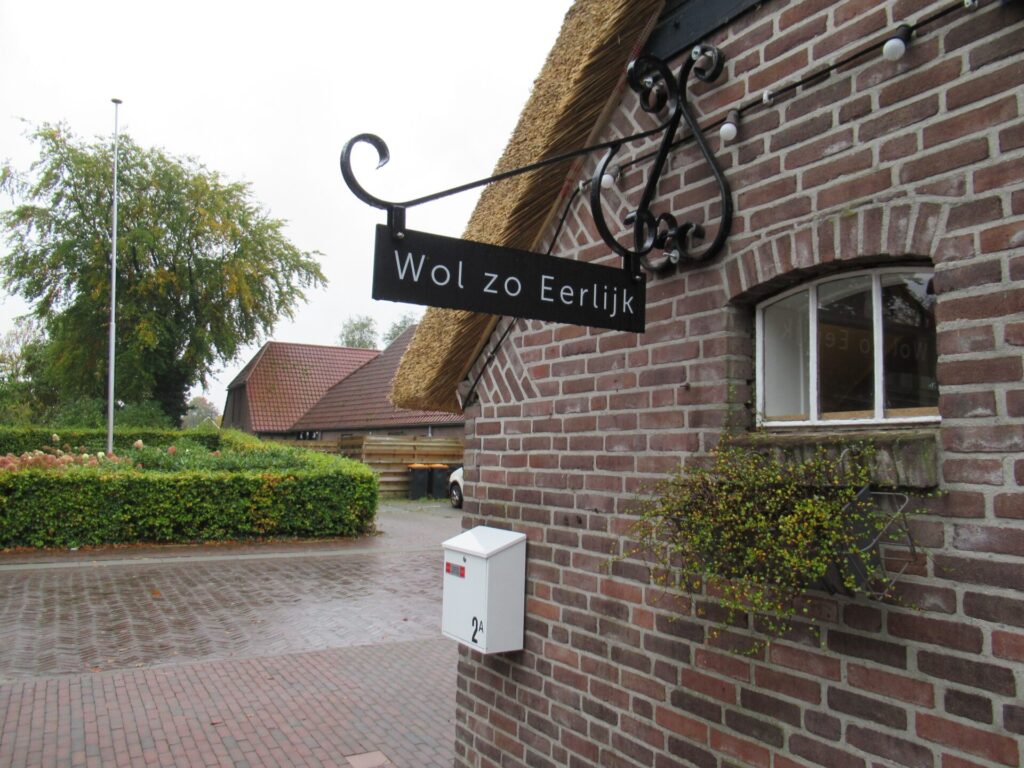
Hello!
Every time I start writing a blog post, I close my eyes and sit quietly for a while. To focus on what I want to show and say, but also thinking of you reading it. Sometimes it’s hard to find the right words.
Over the past two weeks I’ve been watching BBC’s Autumn Watch. At the start of this year’s series, presenter Chris Packham said that they hoped their nature images and stories would be like a warm and colourful blanket for viewers in these difficult and uncertain times. I don’t remember exactly how he phrased it, but that was the drift.
I hope that in my own modest way, I can do something like that here, too. I can’t offer you spectacular footage of badgers, seal pups or otters. What I can offer is a colourful and comforting story about a yarn shop. Do you remember the tiny yarn shop we visited in July? Well, it has grown. Look!
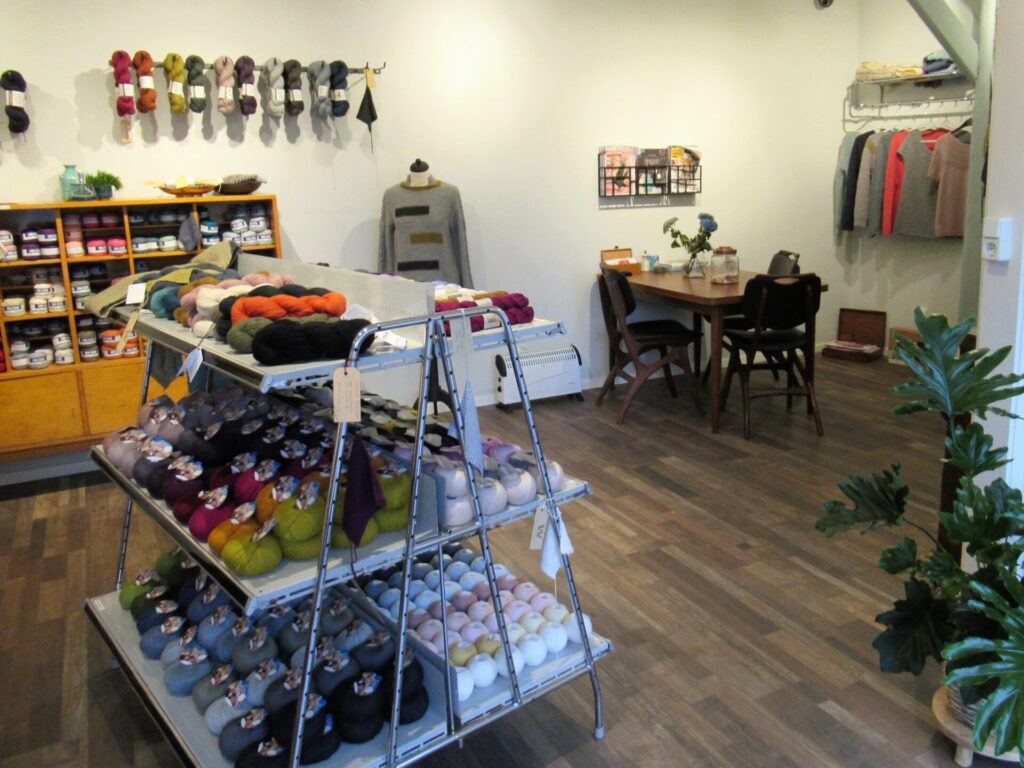
The yarn shop is housed in part of a former farm building. Until recently, the rest of the space was taken up by a bicycle shop. When that closed Saskia grabbed the opportunity to enlarge her premises. Originally her shop was only 15 m2, now it has almost tripled in size. It still isn’t huge, but it is not so tiny anymore either.
A few days before our Autumn Break, I was on the doorstep early in the morning, just before the shop opened, hoping for a quiet moment without other customers. I was lucky and had the shop to myself for a bit, so that I didn’t have to choose yarn in a hurry and also had the time to take pictures.
Wol zo Eerlijk still specializes in organic, sustainable and fair-trade yarns. The main components of these yarns are wool, cotton, linen or alpaca. But some contain more unusual fibres, such as yak, nettle or hemp. The sock yarn below is a blend of wool, biodegradable nylon (huh?!) and hemp.
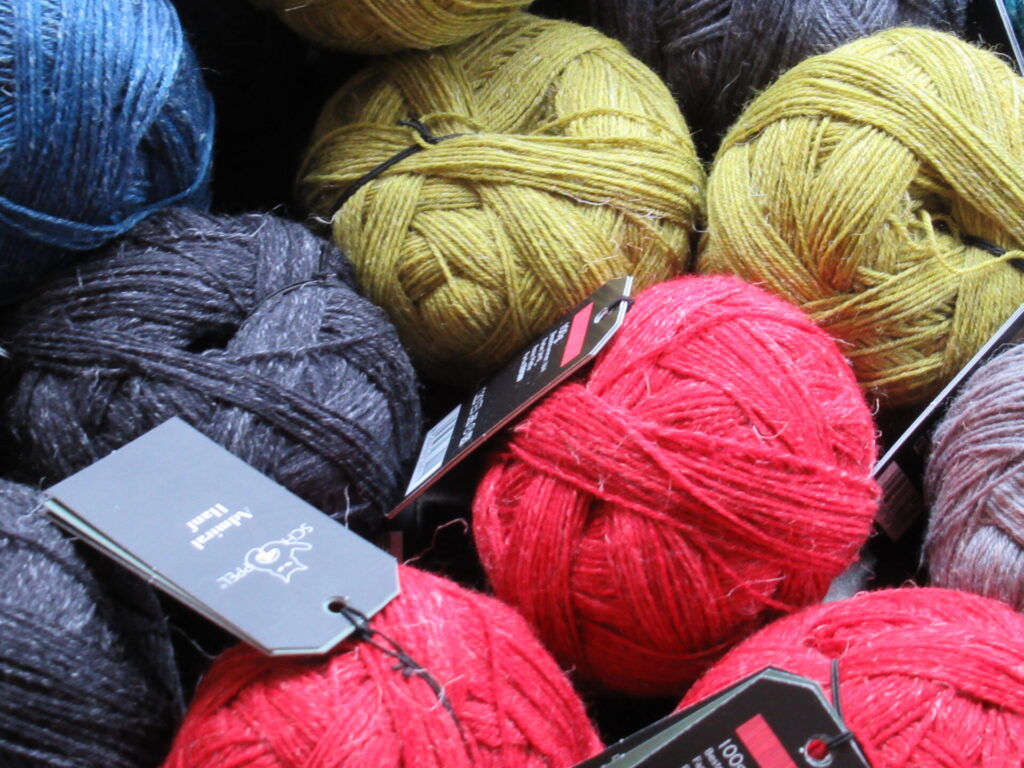
The beautiful colours are a feast for the eyes – some really autumnal:
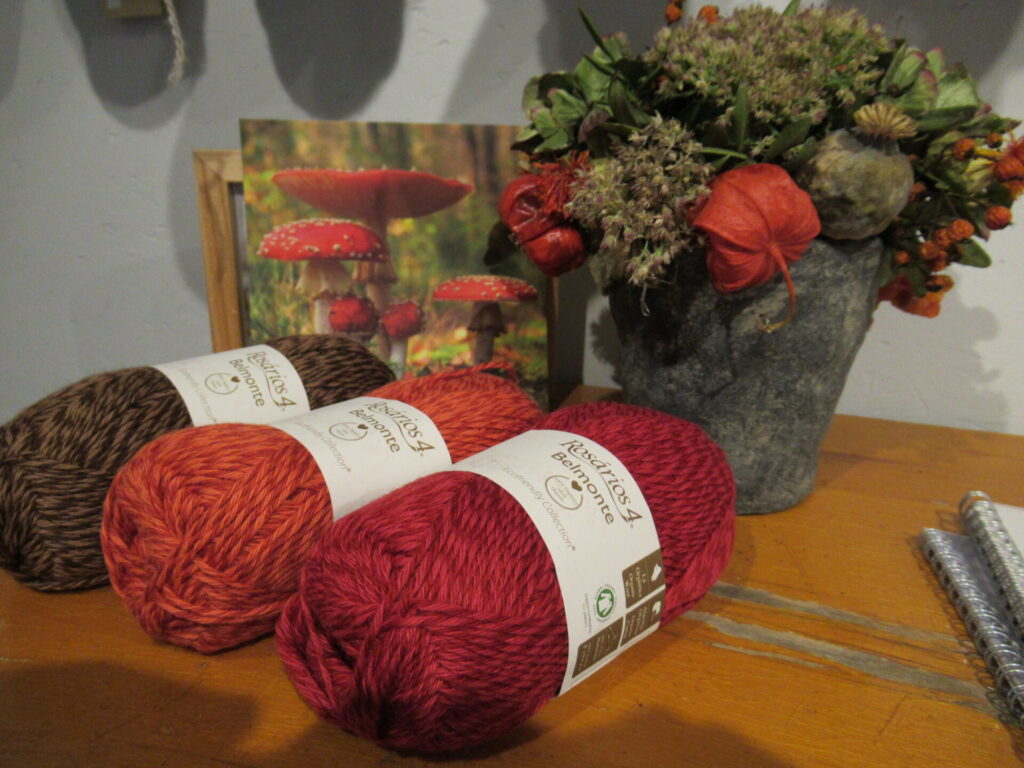
This is an organic wool-and-cotton yarn from Portugal.
There are also many yarns in lovely neutrals. As my own colouring is becoming more and more ‘neutral’, I don’t wear these shades anymore. But that doesn’t mean that I don’t like them.
This is a very soft blend of organic cotton and alpaca:
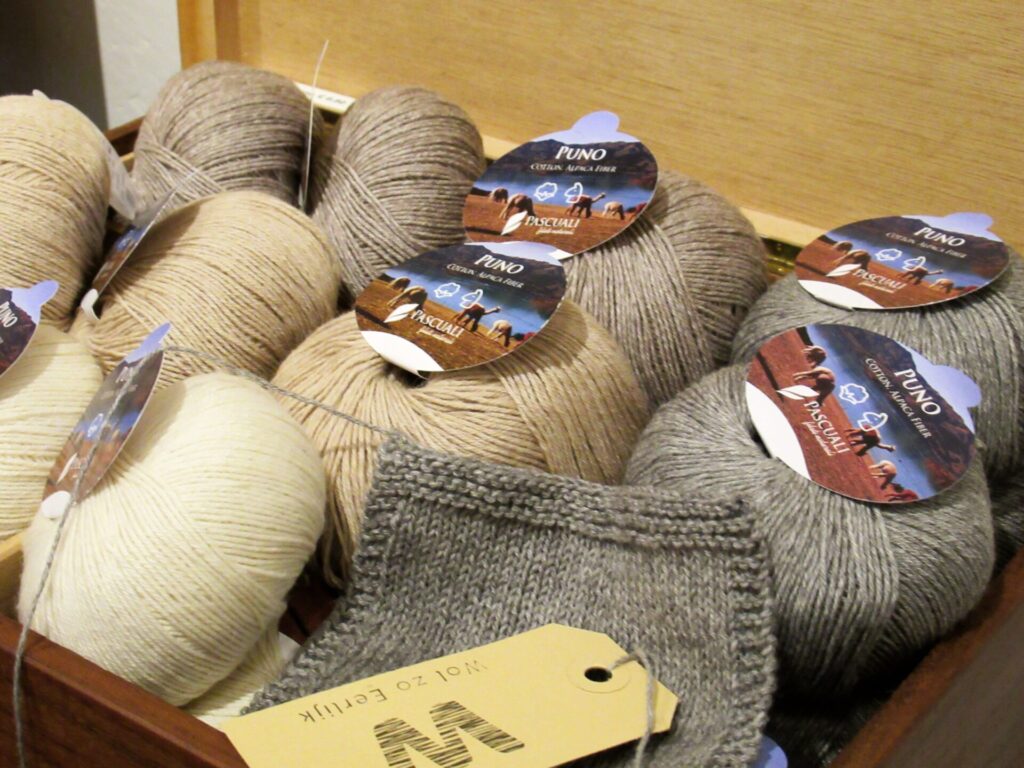
Among the shop samples, there is also a stack of sweaters in off-white and grey.
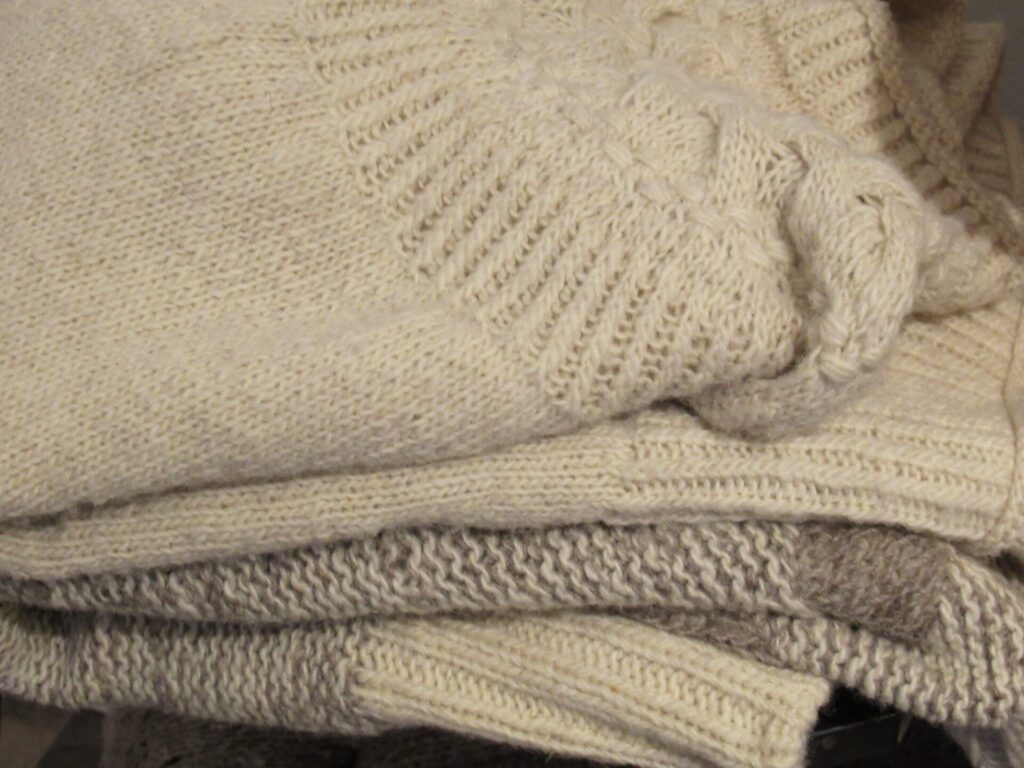
And next to that is a mannequin wearing a sweater with a very interesting neckline.
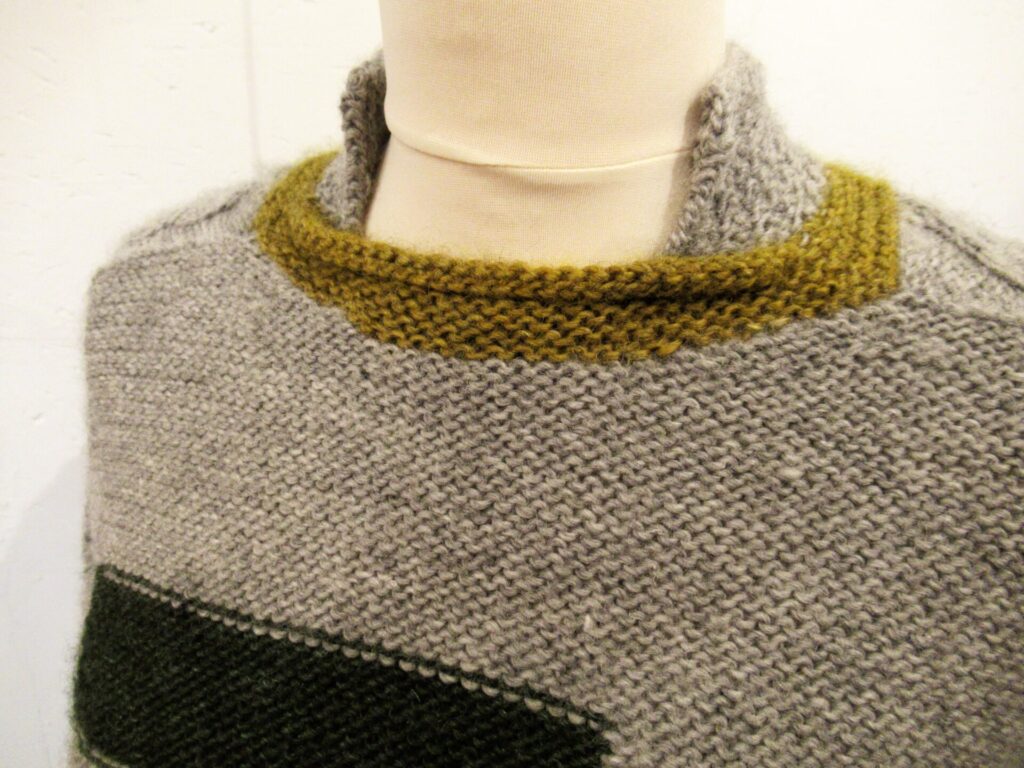
While I am browsing around the shop, Saskia is processing online orders. You can see her at work in the background, over the top of this vegan yarn composed of cotton and Lyocell.
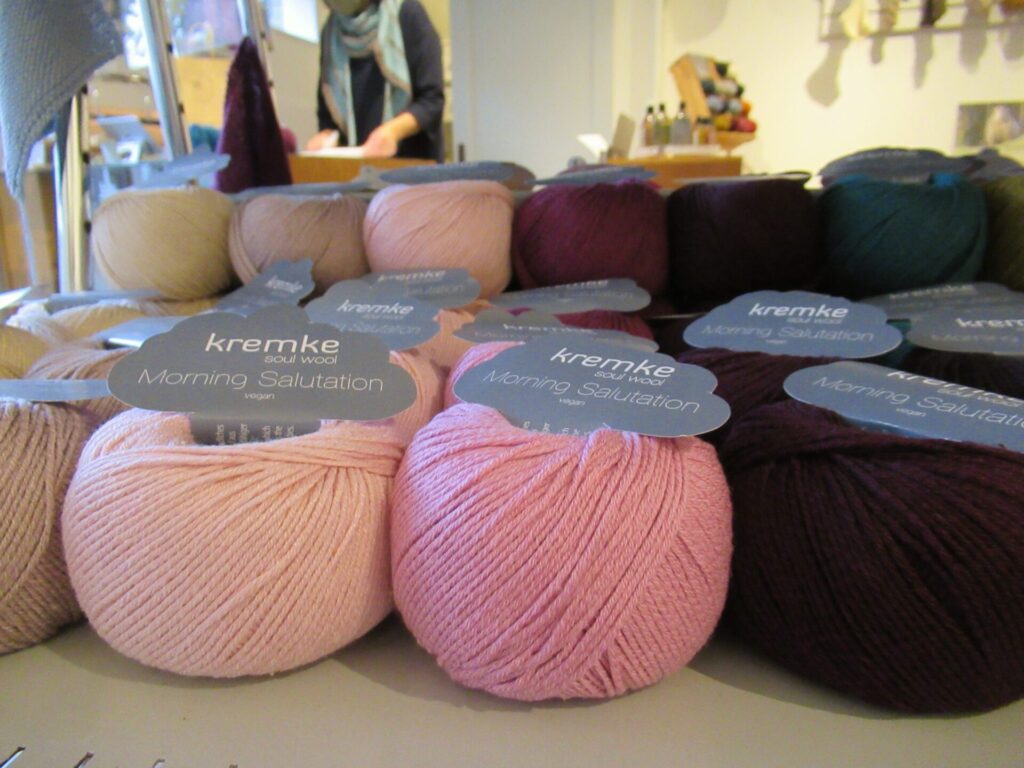
On the other side of the display is this rainbow of colours. It’s a new yarn called ‘Balayage’ – a very soft wool-and-alpaca blend and one of the reasons for my visit.
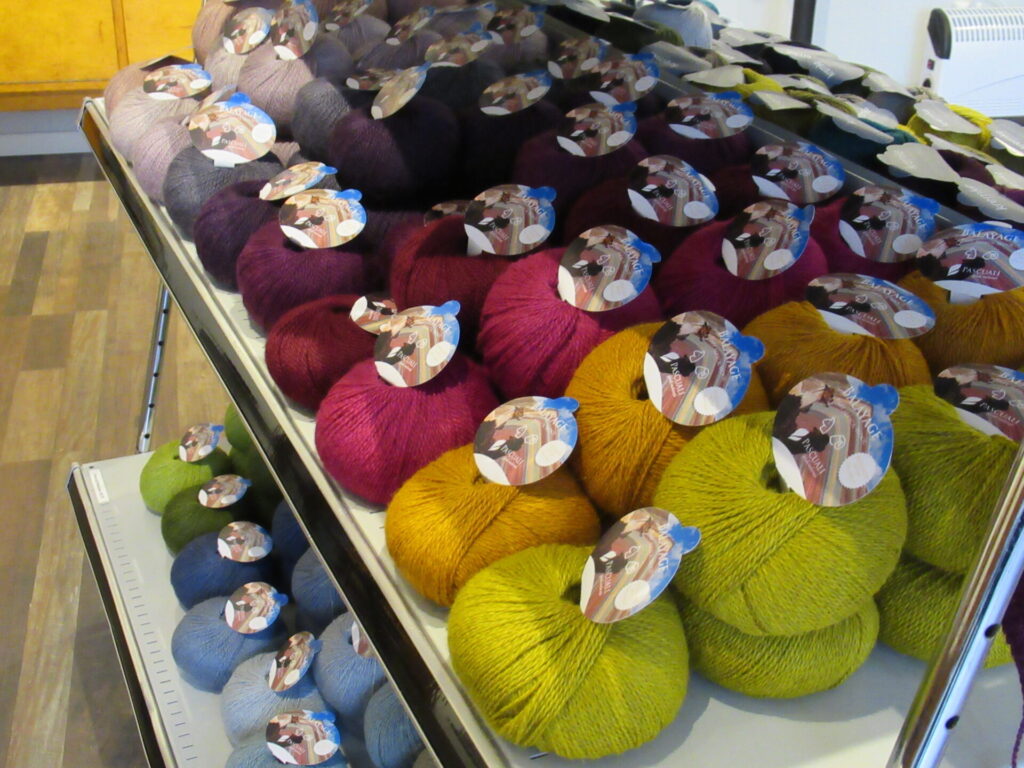
Beautiful, isn’t it? It’s so nice to be able to browse around, see the colours in person and have a chat. It feels surreal and uncomfortable that there is a plastic screen between us at the till and we are both wearing face masks. I don’t go out enough to get used to that, but if we can keep the virus from spreading this way and keep ‘non-essential’ shops like these open, you won’t hear me complaining.
After my visit to the shop, I had a quick stroll through the old part of the village. (Is there such a thing as a quick stroll? It was quick because it was raining and I needed a loo. That can be a bit of a problem with all restaurants and cafés closed.)
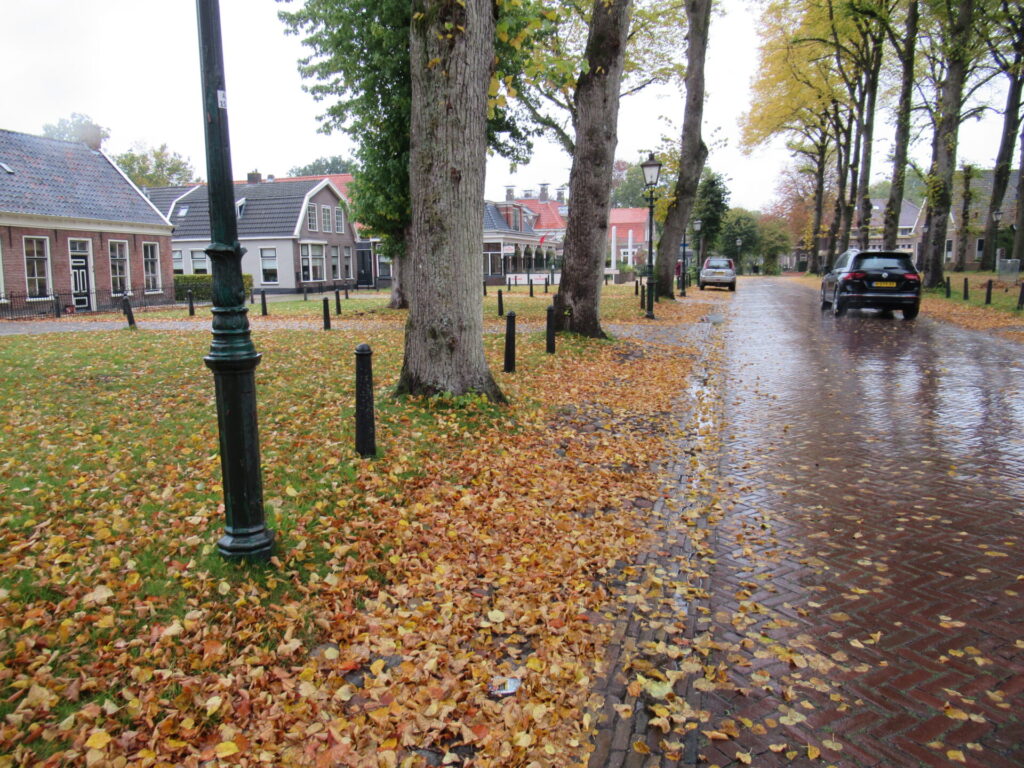
Unlike some other villages, Vries still has a good range of shops, with two clothes shops, a supermarket, an antiques seller,
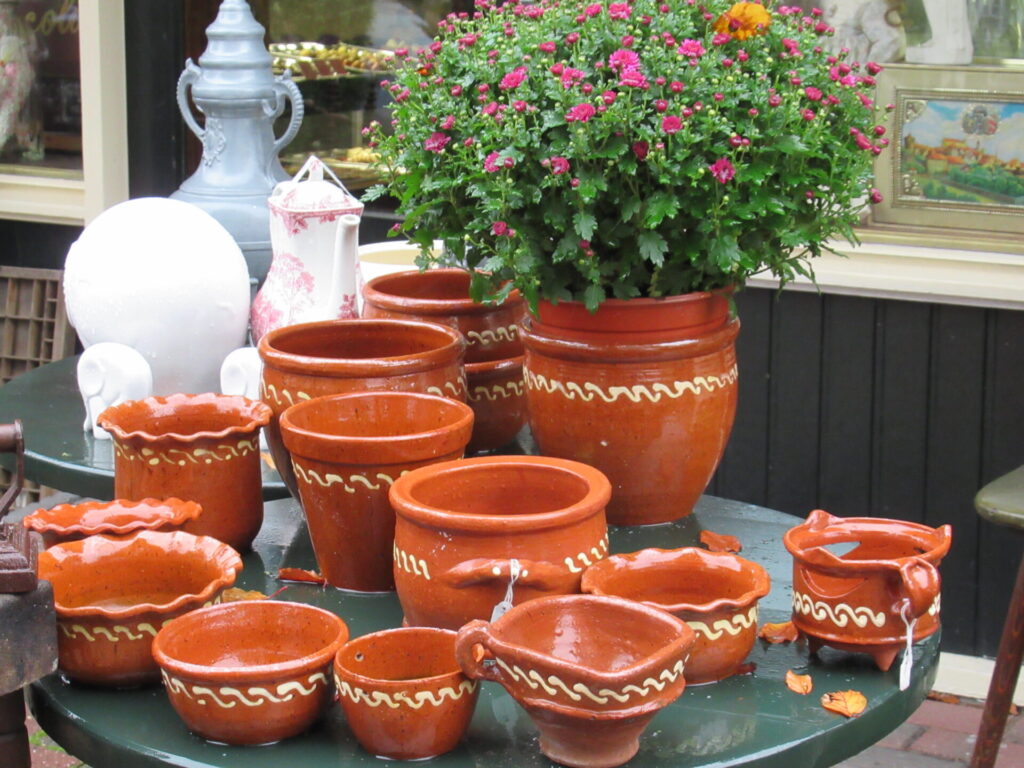
a butcher, a baker,
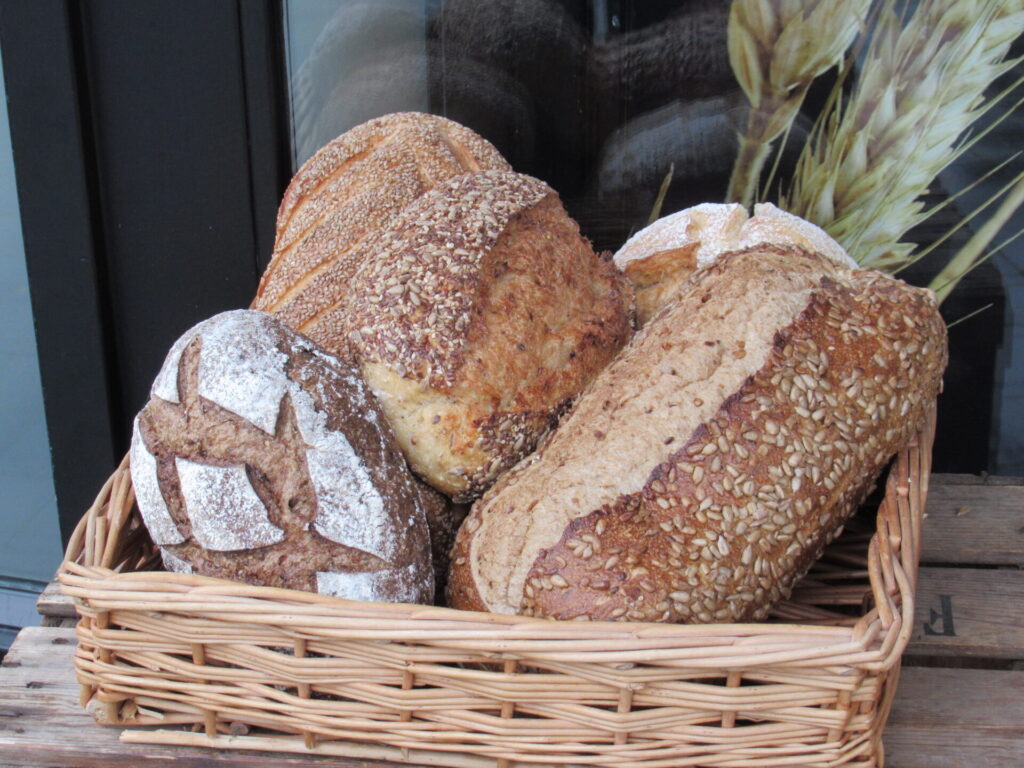
and a flower shop with a lovely display of crysanths and pumpkins outside.
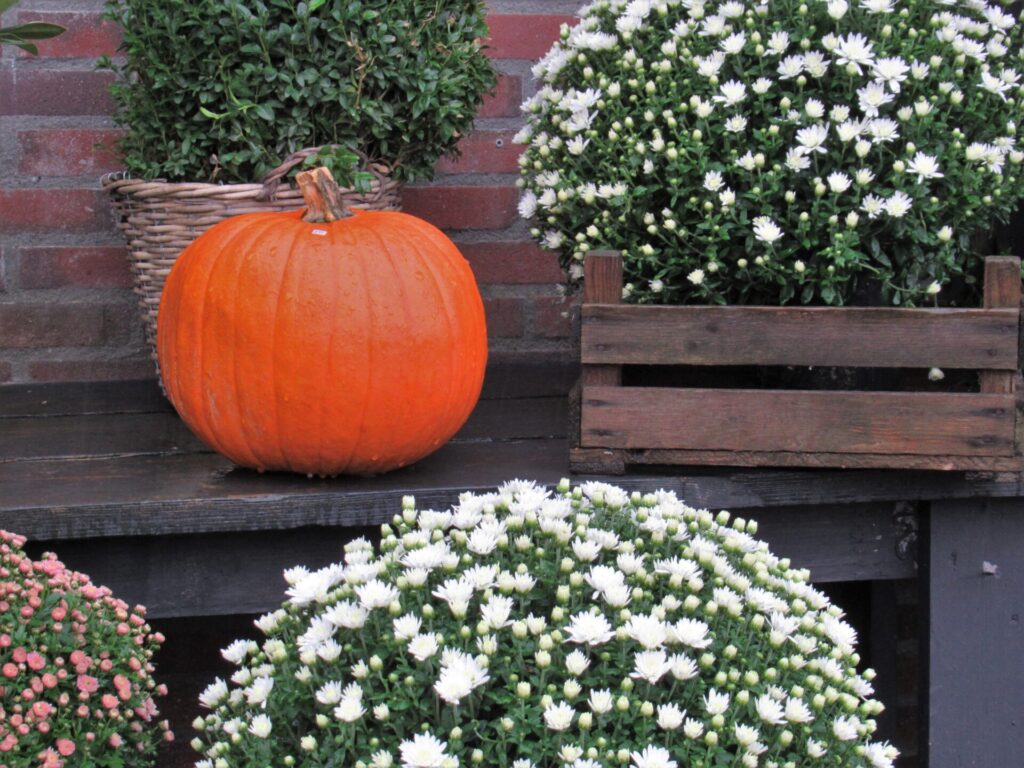
And best of all a not-so-tiny-anymore yarn shop!
This is what I came home with:
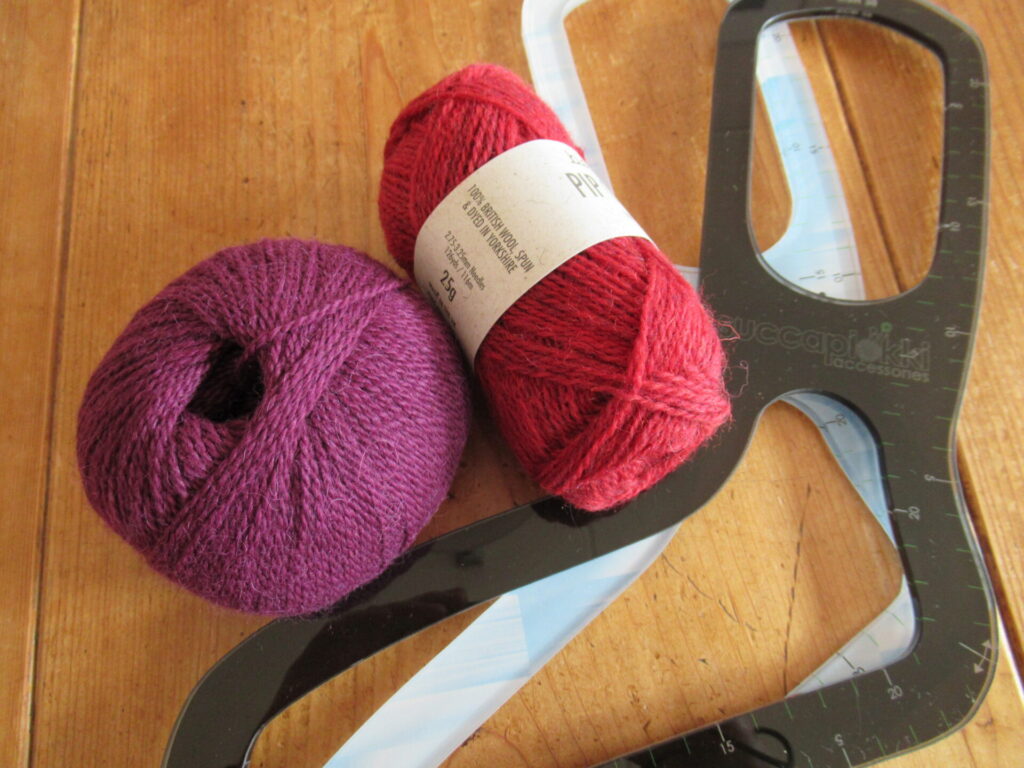
- Several balls of purple wool-and-alpaca yarn for a scarf that knits up quickly and is almost finished now.
- Two 25-gram balls of red wool from Yorkshire for a project that is nothing but an idea yet.
- Sock blockers in two different sizes that have been on my wish list for quite a while and will be tried out as soon as I finish my current pair of socks.
More about these over the coming weeks or months. All the best, stay safe, and see you again soon! xxx
A Tiny Yarn Shop
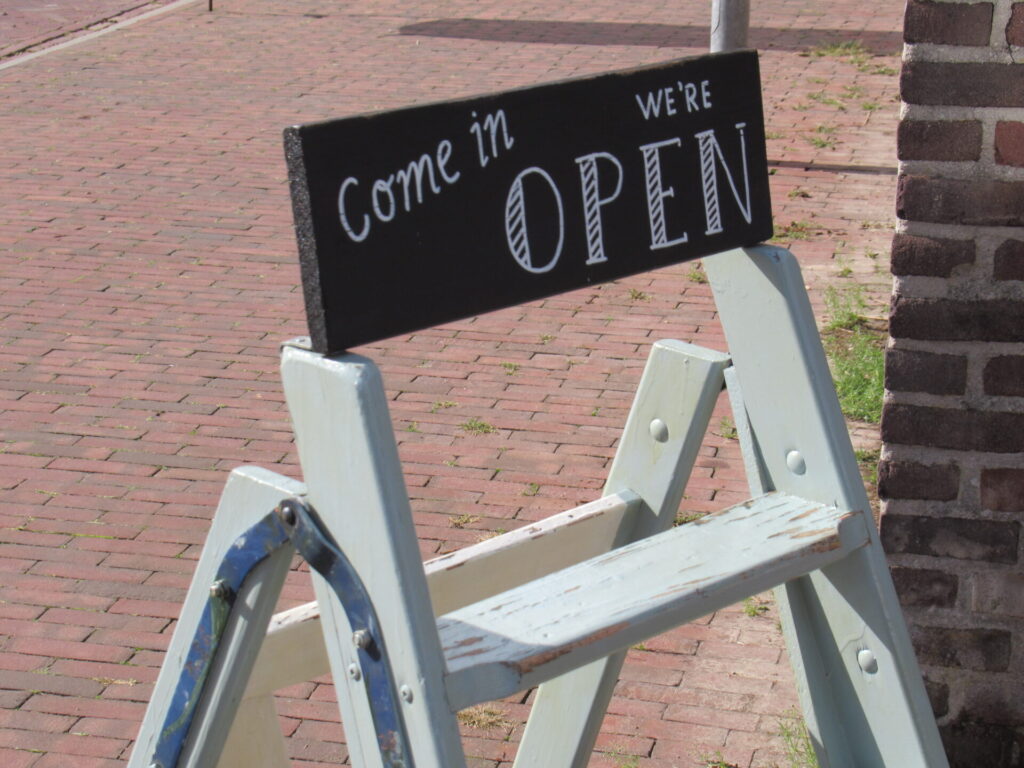
Hello! It’s good to see you here again. For this week’s summer outing, I’m taking you to Vries, another small village in our part of the country. Vries isn’t as picturesque as last week’s destination Giethoorn, and I doubt if it sees many tourists, but it does have some attractive spots.
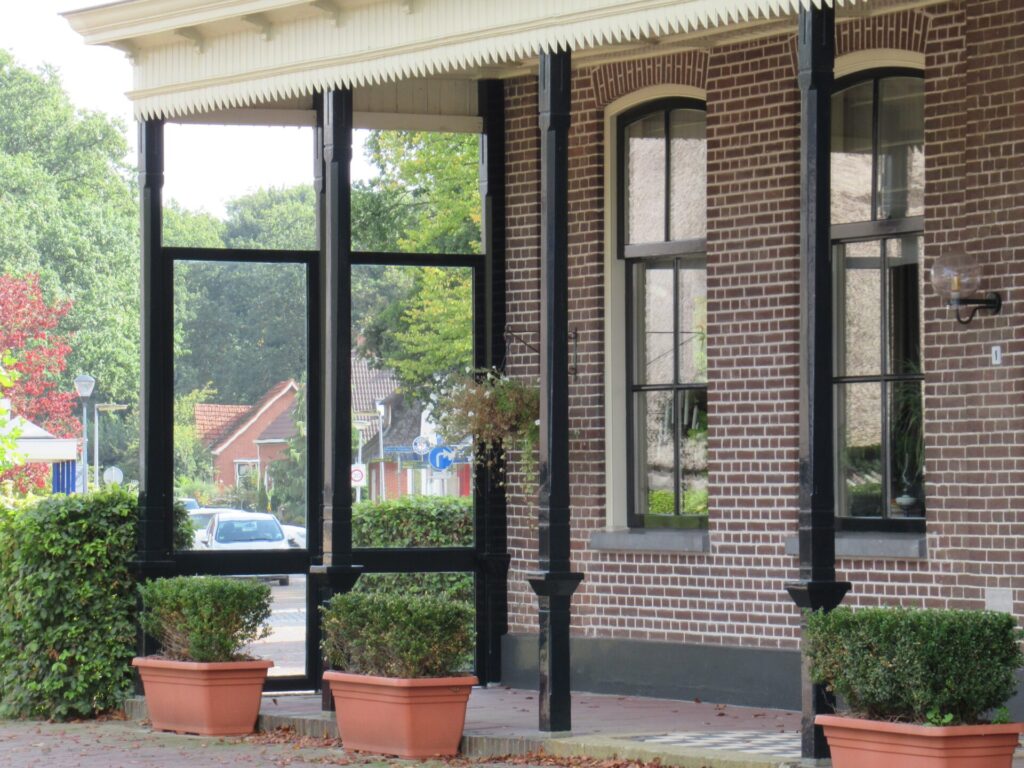
Generally, the church from the middle of the 12th century is considered the village’s main attraction. Granted, it is beautiful. Surrounded by trees, it wasn’t easy to photograph, but here is a view from the side:
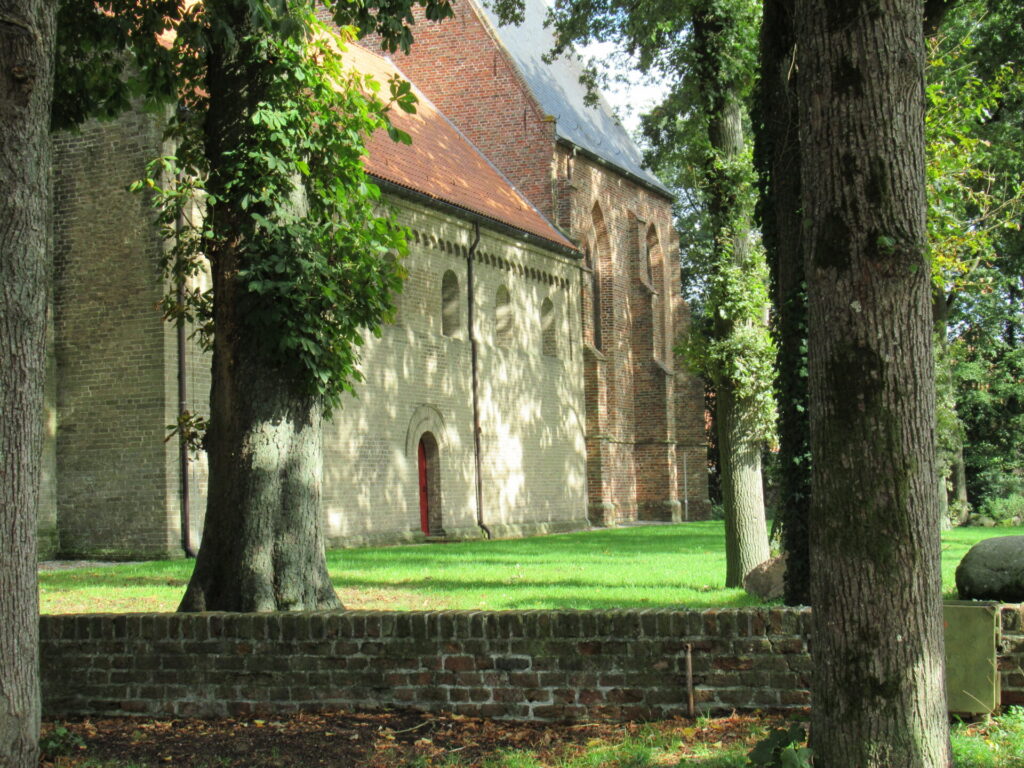
The church is dedicated to Saint Boniface and has doors in a particularly attractive shade of red.
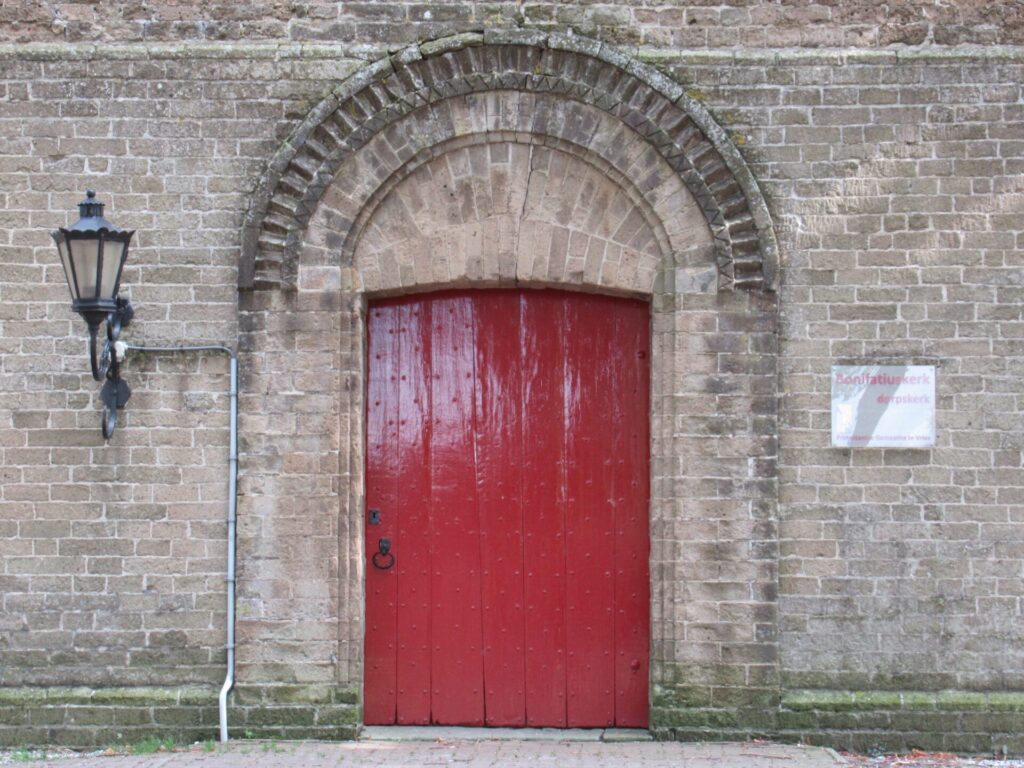
But to me, Vries’ biggest attraction is the smallest yarn shop I know. And when I say small, I mean tiny. It is called Wol zo Eerlijk (Wool so Fair) and is so small that it can only welcome one customer at a time with the 1.5 meter distance rule in place. This little gem is tucked away in a small corner between two other buildings.
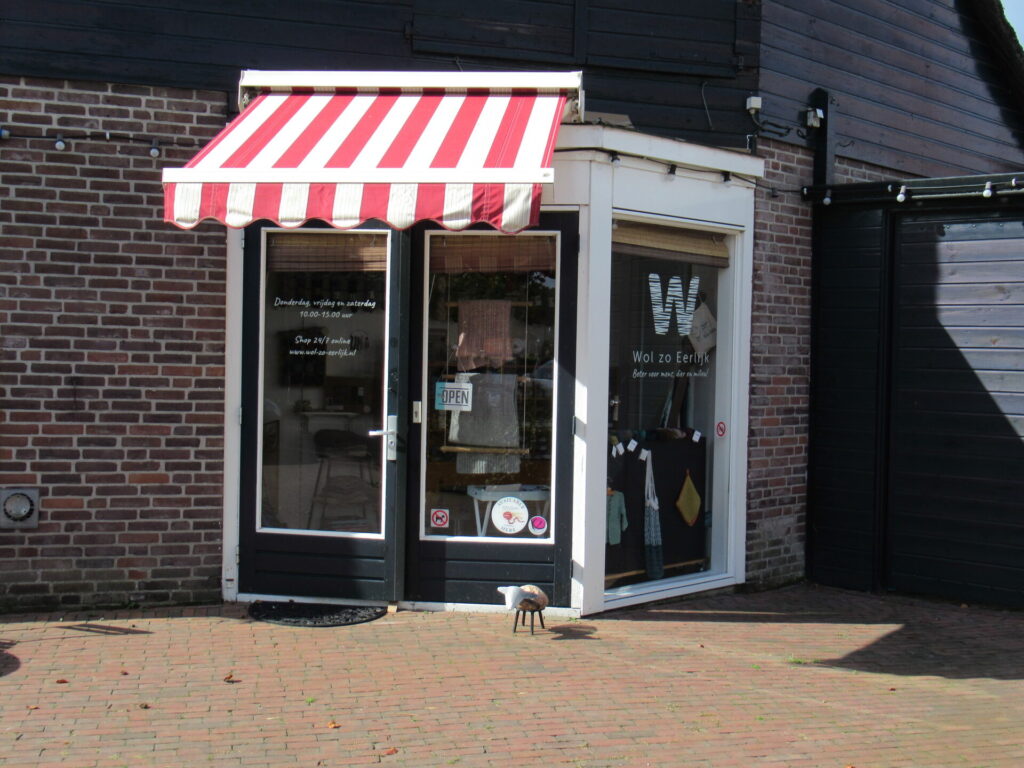
Wol zo Eerlijk specializes in sustainable and fair-trade yarns, produced in animal-friendly ways and without child labour.
This may conjure up images of drab and scratchy yarns, but nothing is further from the truth. There are some neutrals, too, of course. But all in all, the first impression is a very colourful one. Let’s go inside to take a look.
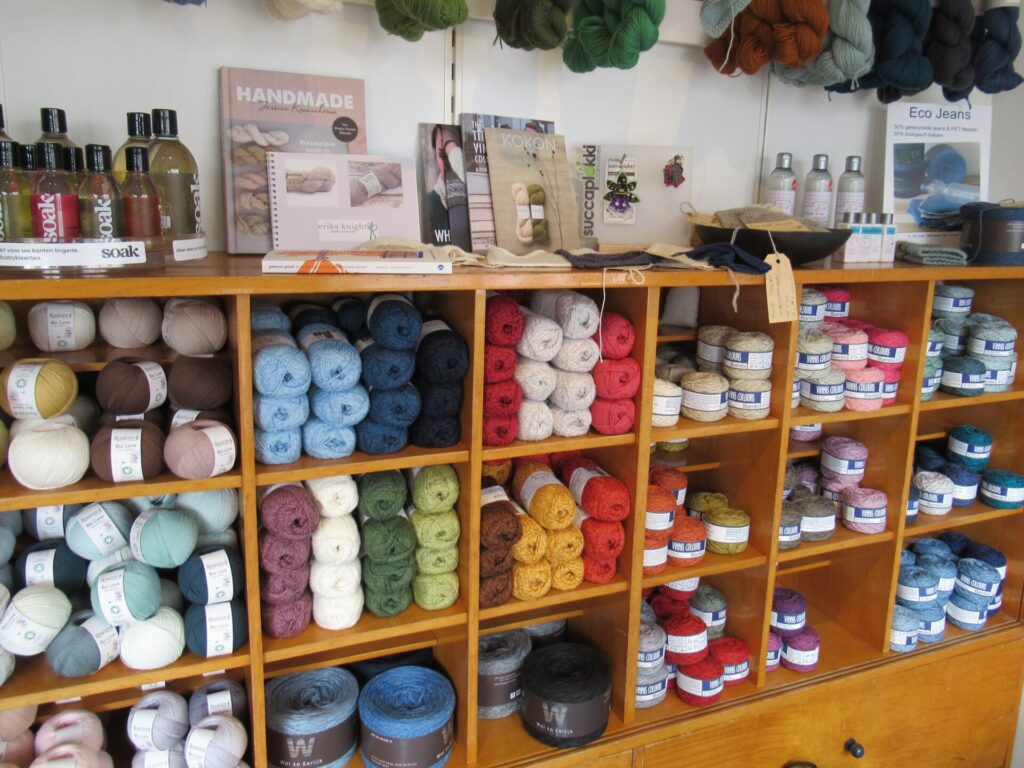
Although the selection of yarns is fairly limited (it is a tiny shop, after all) there is a good range of materials, from cotton and linen to different kinds of wool and even yak.
To start with, here is Erika Knight’s ‘Studio Linen’ in some of the loveliest shades imaginable.
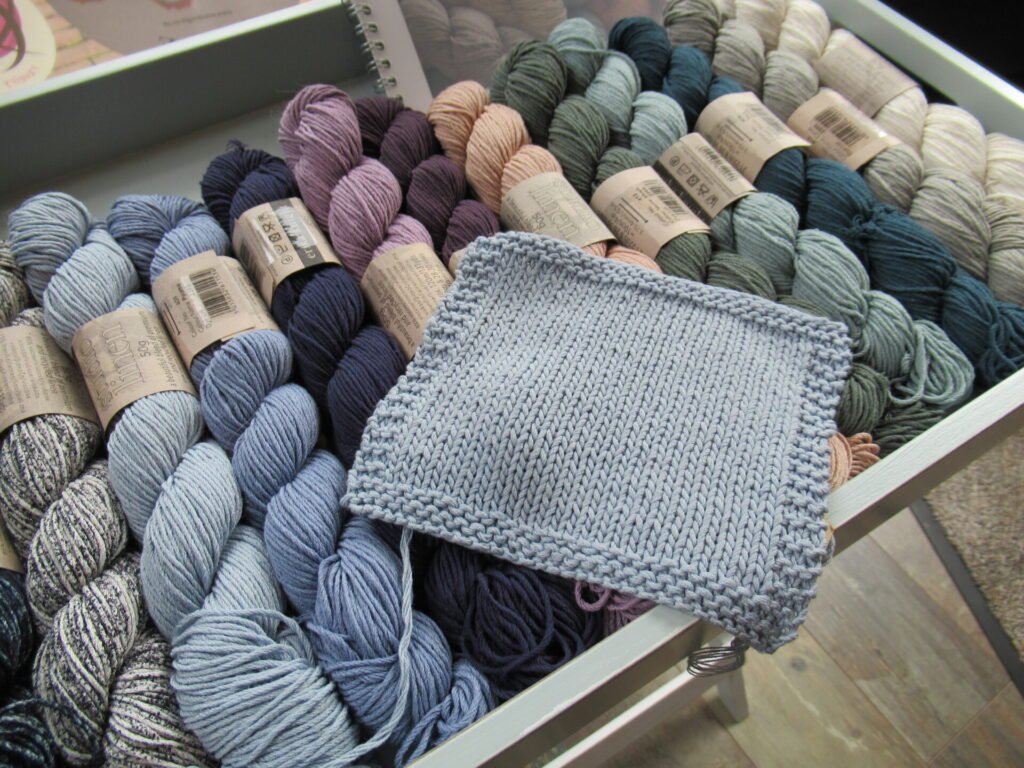
What makes this yarn sustainable is that 85% of it is recycled linen. Pure new linen makes up the remaining 15%.
The yarn in the photo below is mYak ‘Baby Yak Lace’. This is a heavy lace-weight yarn spun entirely from baby yak hair, also known as yak down, from Tibet. Soooo soft.
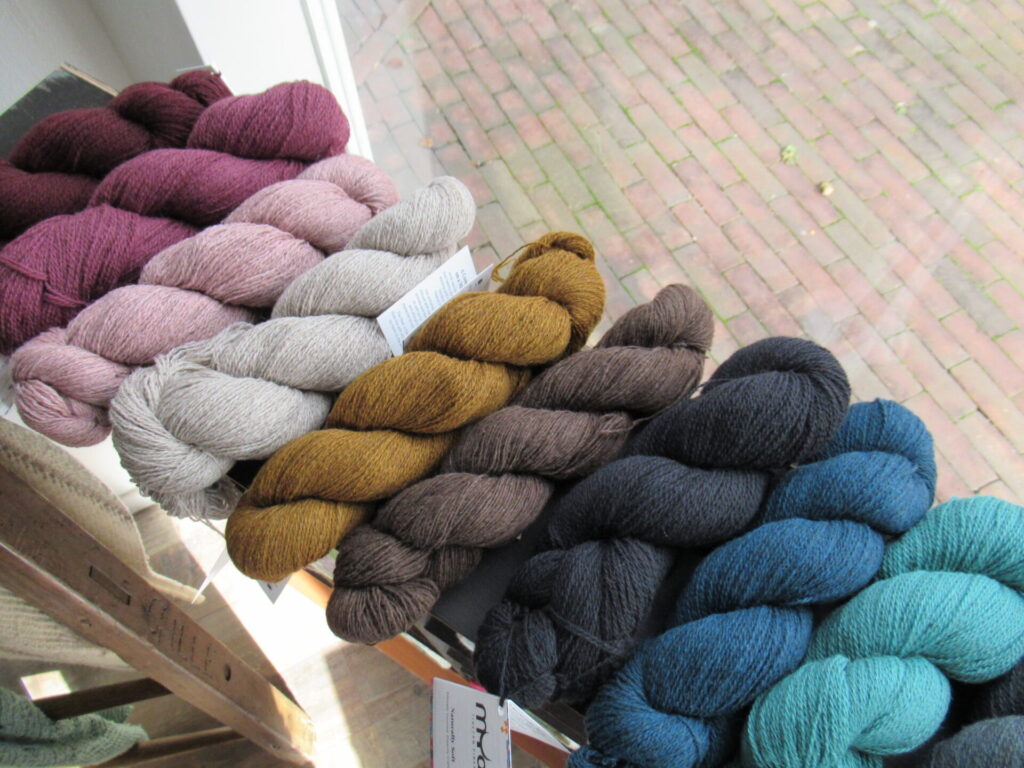
In my mind’s eye I saw those poor little baby yaks shivering and bleating after being shorn, but fortunately that isn’t how it works and there is no need to feel sorry for them. They are not shorn – the down is collected by combing. In fineness and softness this yak down is similar to cashmere.
Selling their yak fibres, enables the nomad families of the Tibetan plateau to continue herding their animals as they’ve done for centuries, in a way that keeps the fragile ecosystem intact. A further sustainable aspect is that the yak down is not bleached or decoloured, and that shows in the skeins. The overdyed natural colours give beautiful, slightly heathered shades.
And here is another yarn in some lovely colours – Rosários 4 ‘Belmonte’.
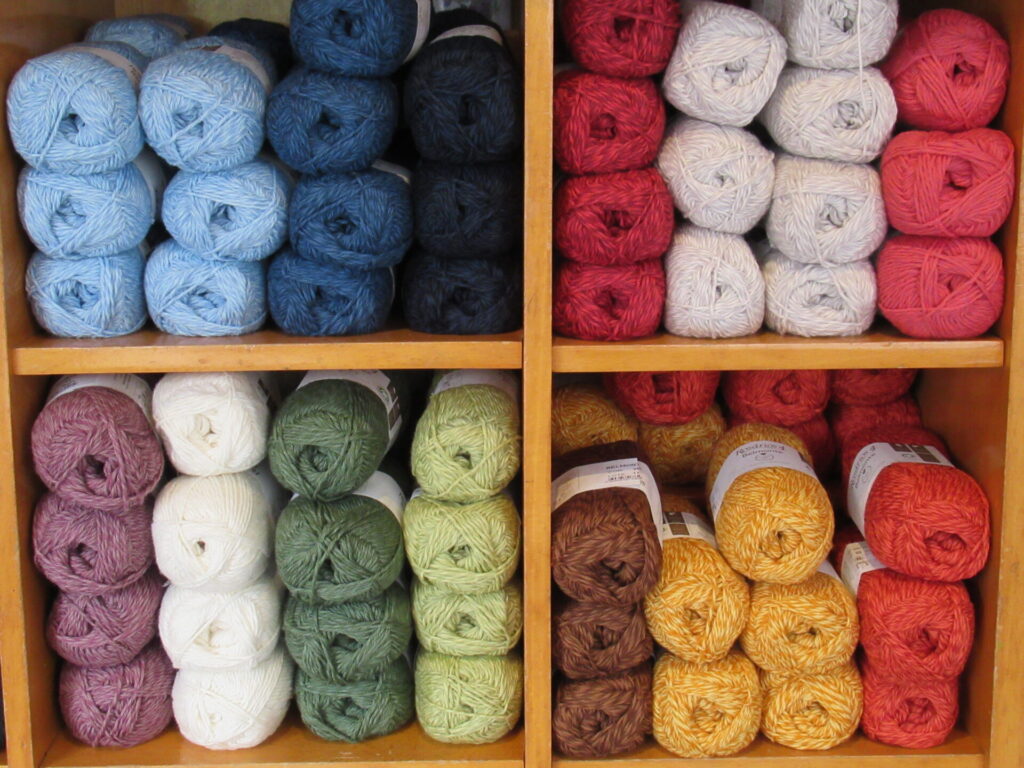
‘Belmonte’ is an organic wool-and-cotton blend in a dk-weight. Spun in Portugal, this yarn is GOTS certified, which means that it meets the toughest international standards for organic textiles.
Wol zo Eerlijk provides swatches of all the yarns in their shop.
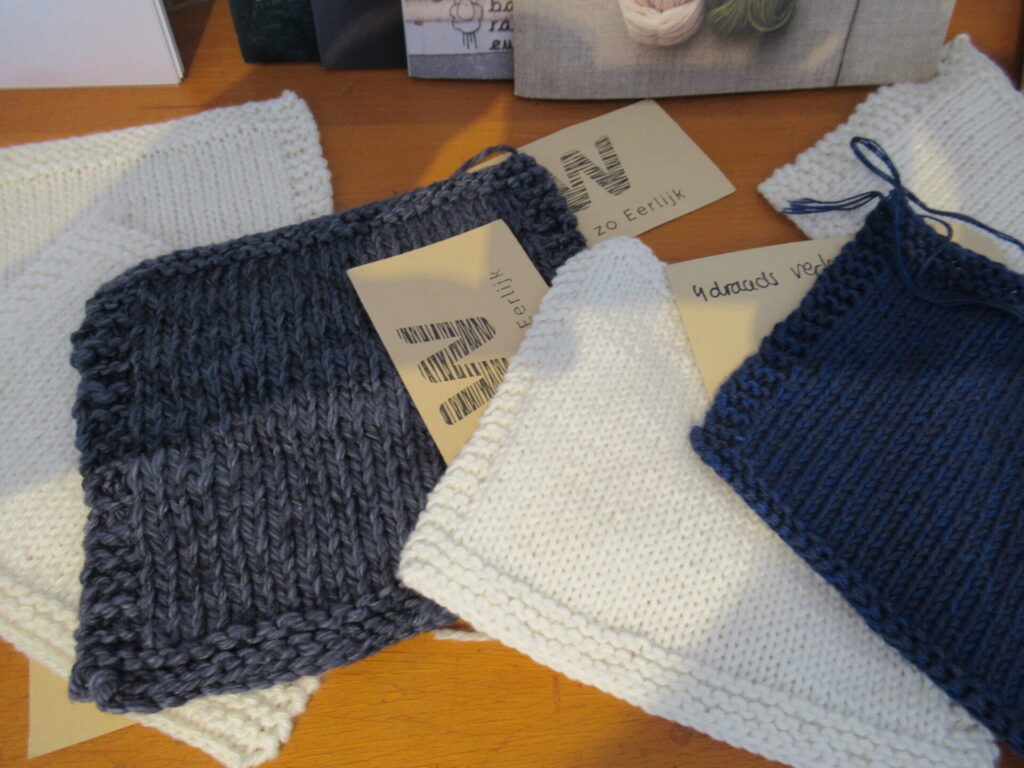
I think this is a wonderful idea. It gives a much better impression of what the knitting will look like than just seeing a yarn in the skein or ball.
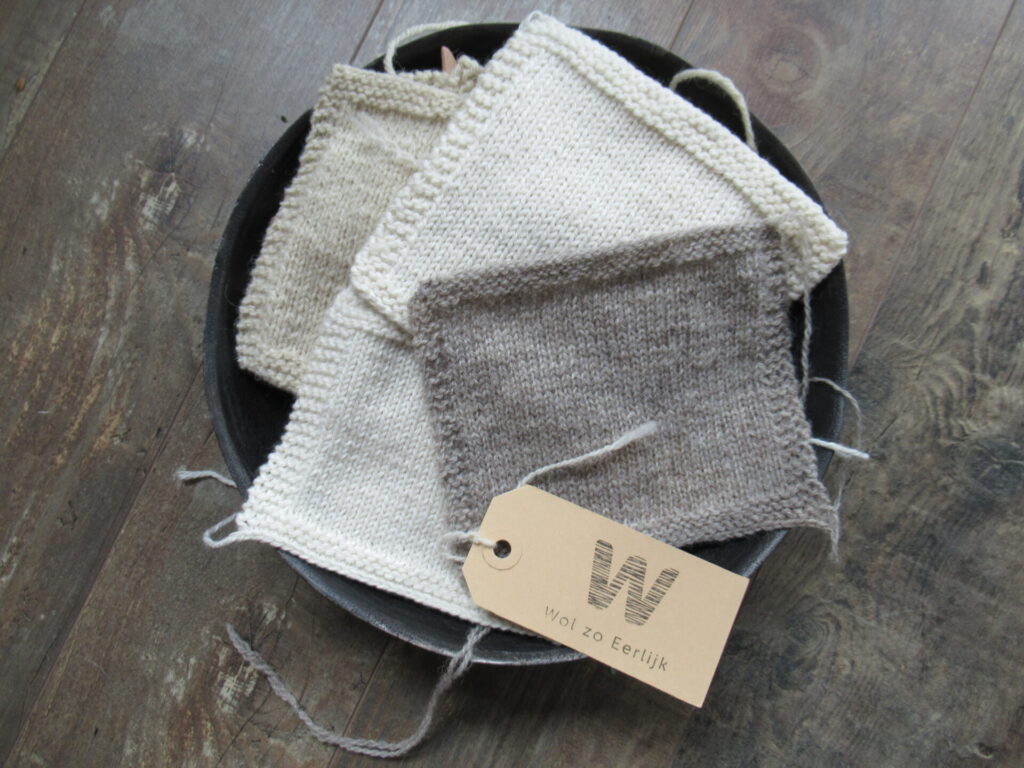
And here is one final yarn – ‘Pip Colourwork’, British wool spun and dyed in Yorkshire. Beautiful vibrant as well as more subtle colours in 25 gram balls. Ideal for fair-isle or similar stranded colourwork, but I wouldn’t mind knitting an entire cardigan in duck-egg Bramley Baths, turquoise Lotherton or raspberry Rose window.
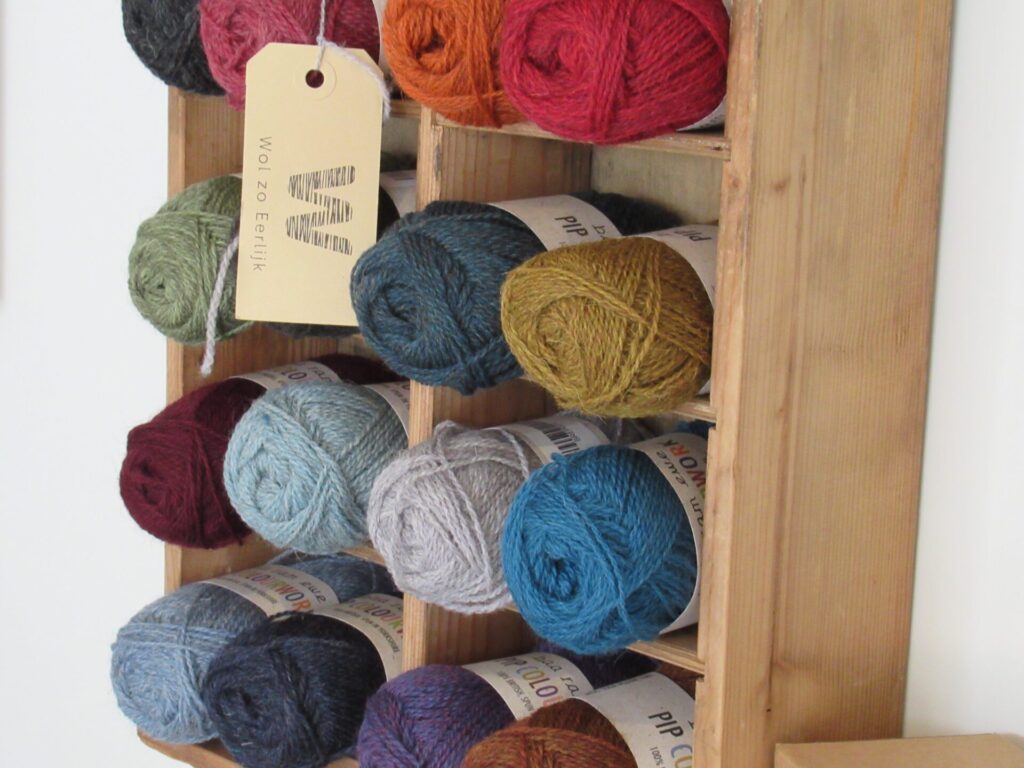
I didn’t photograph each and every yarn at Wol zo Eerlijk. Please visit their website (in Dutch and English) for more information and yarns. (As always: I’m not sponsored in any way – I just love looking at, knitting with and talking about yarn. Besides, I think small, lovingly curated shops like this one deserve all the support they can get).
Well, shopping is thirsty work. High time for some refreshments. Take care, and see you next week!
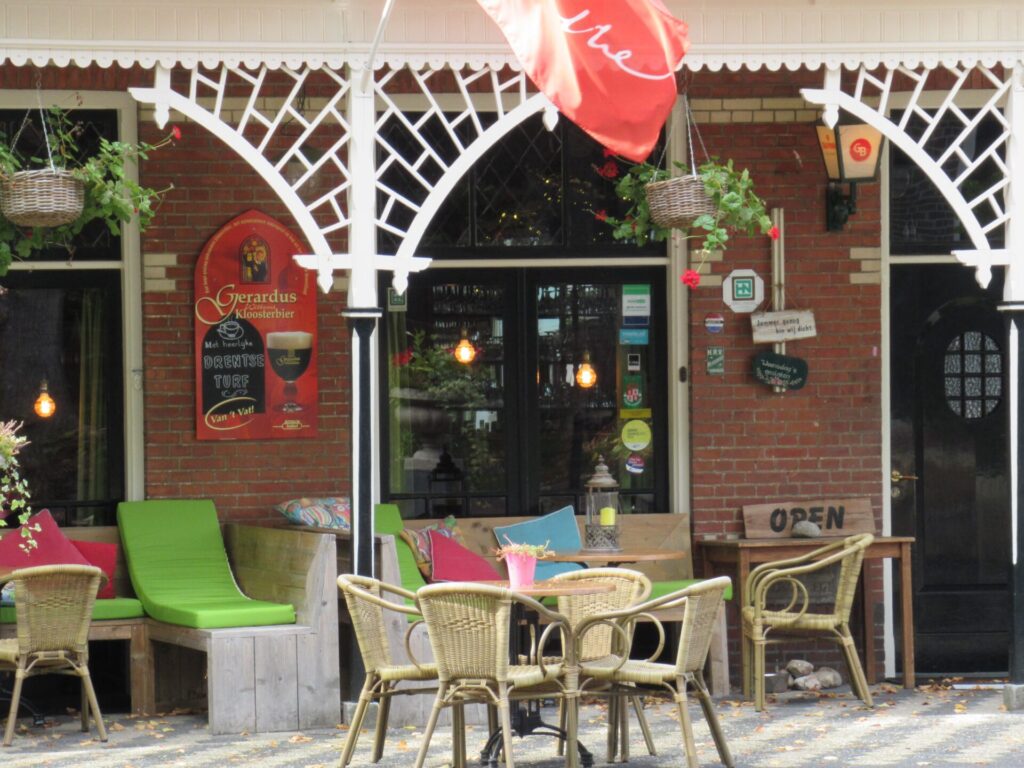
Wool Stories
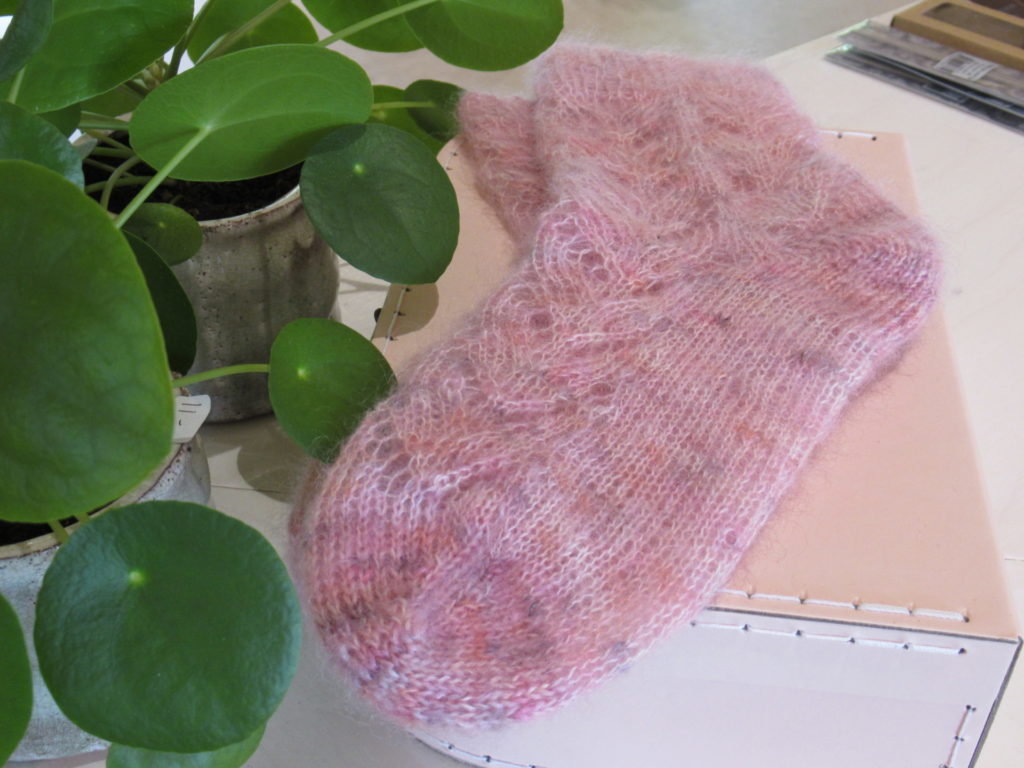
Now and then, I come across something in my diary I wrote down months ago. For last weekend, my diary said, ‘Knitting & Crochet Days Amsterdam’. Under normal circumstances, I would have taken an early train to the capital and then taken the ferry across the IJ for a day of meeting up with friends, chatting with yarn sellers and dyers, and finding new inspiration. I would also have taken pictures and shared them here with you.
I know that there are worse things in life, and I’m 100% behind the government’s decision to cancel all events until at least September, but I did feel slightly disappointed that I had to cross this event out (I’m only human).
I soon found a good alternative, though – I paid an online visit to a lovely dye studio and yarn shop in my part of the country.
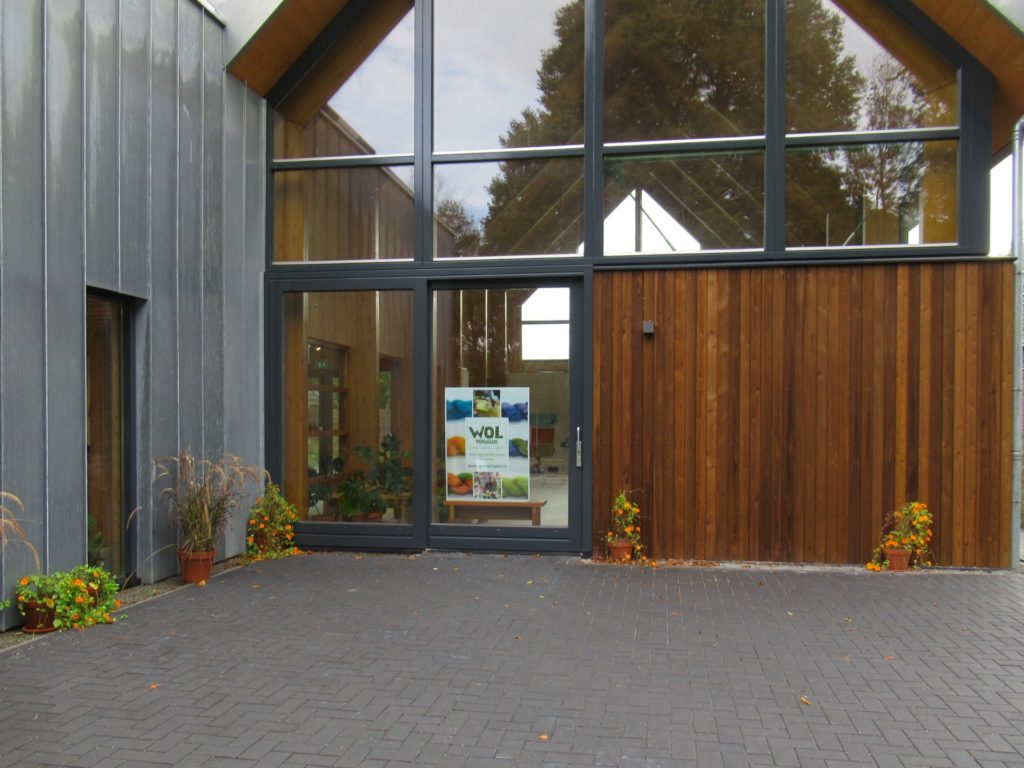
It is called Wolverhalen, or Wool Stories in English. I also revisited the pictures I took during a visit in October 2019 (the ones you’re seeing here), and had a lovely long phone call with the owner, Catharina. She kindly sent me this photo of herself:
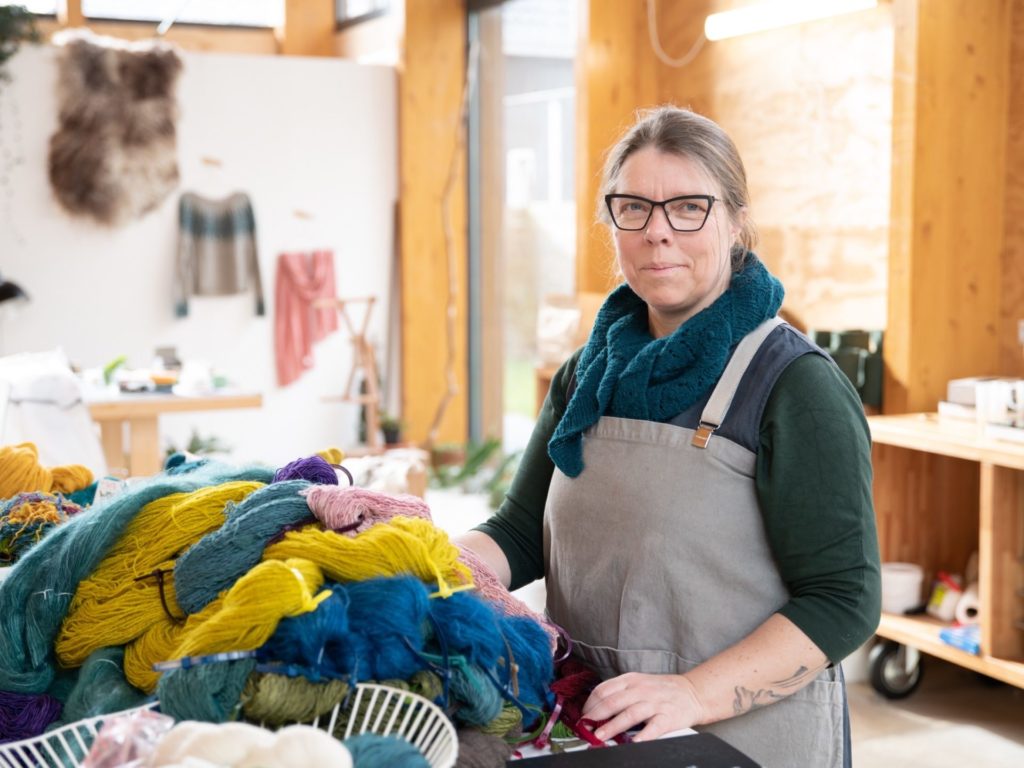
Catharina is a woman of many talents. Before she started her shop and dye studio about a year ago, she was an ambulance driver for many years. And before that, she ran her own flower shop.
I can’t say that the ambulance driver part of her career is reflected in her business, except in her friendly and caring presence, but the flower shop part certainly is. In addition to yarn, knitting books and tools, and Swedish woollen blankets, she also offers a great selection of plants and pots.
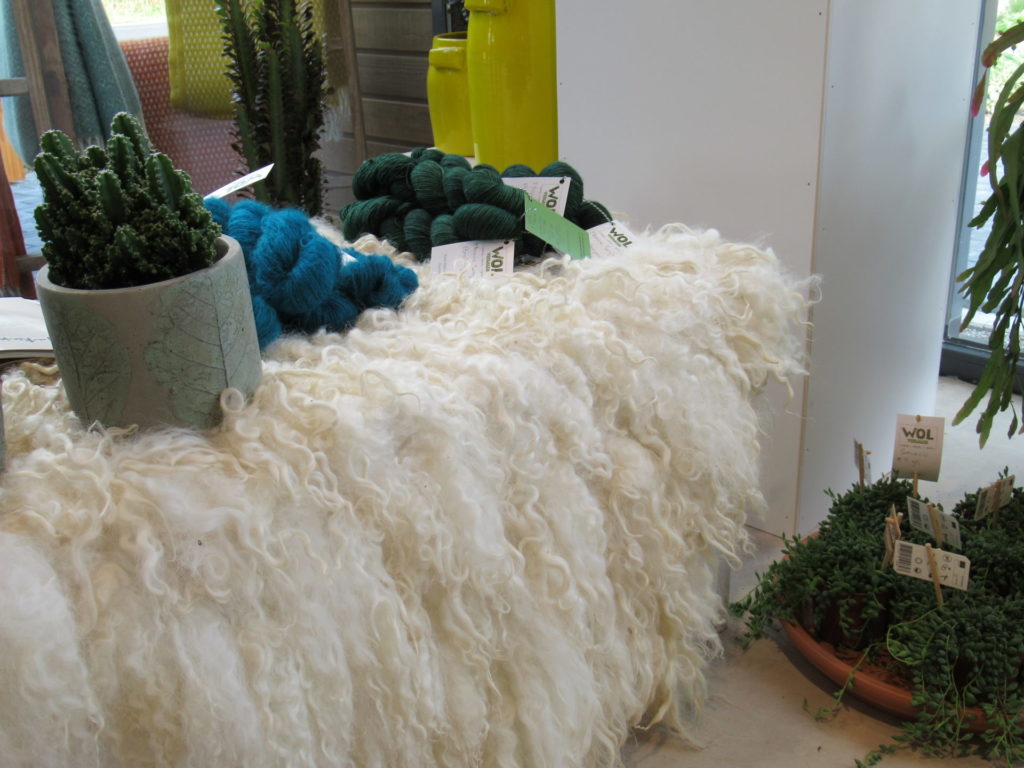
They give the beautiful light and airy space a relaxed and homey feel. For us, knitters, the most important part is the yarn, of course. Adjacent to the shop, there’s a sparklingly clean, well-organized and well-lit dye studio.
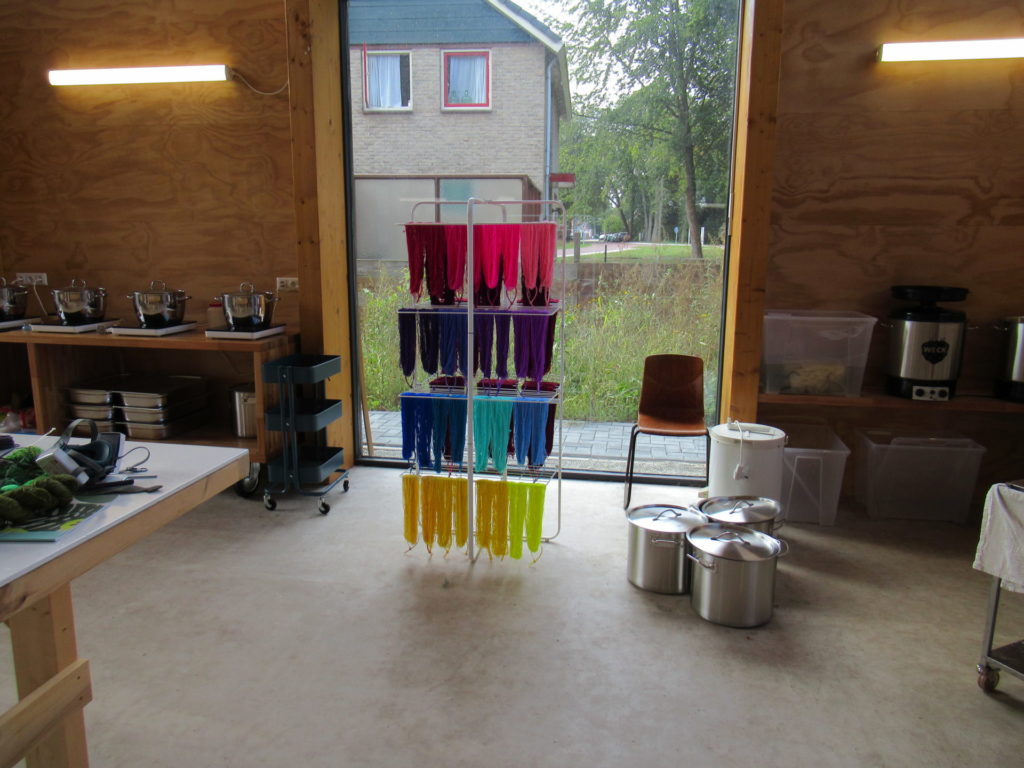
Here Catharina dyes her wool, silk, mohair, yak and suri alpaca yarns. (Don’t these materials just sound like music to your ears?) During my visit last autumn, there were some freshly dyed skeins in very bright shades on her drying rack. They were meant to be wound into sock minis – small skeins to be used as accent colours.
In addition to these bright and cheerful shades, she also produces sophisticated neutrals, refined pastels as well as gorgeous charcoals, deep blues, purples, greens and browns.
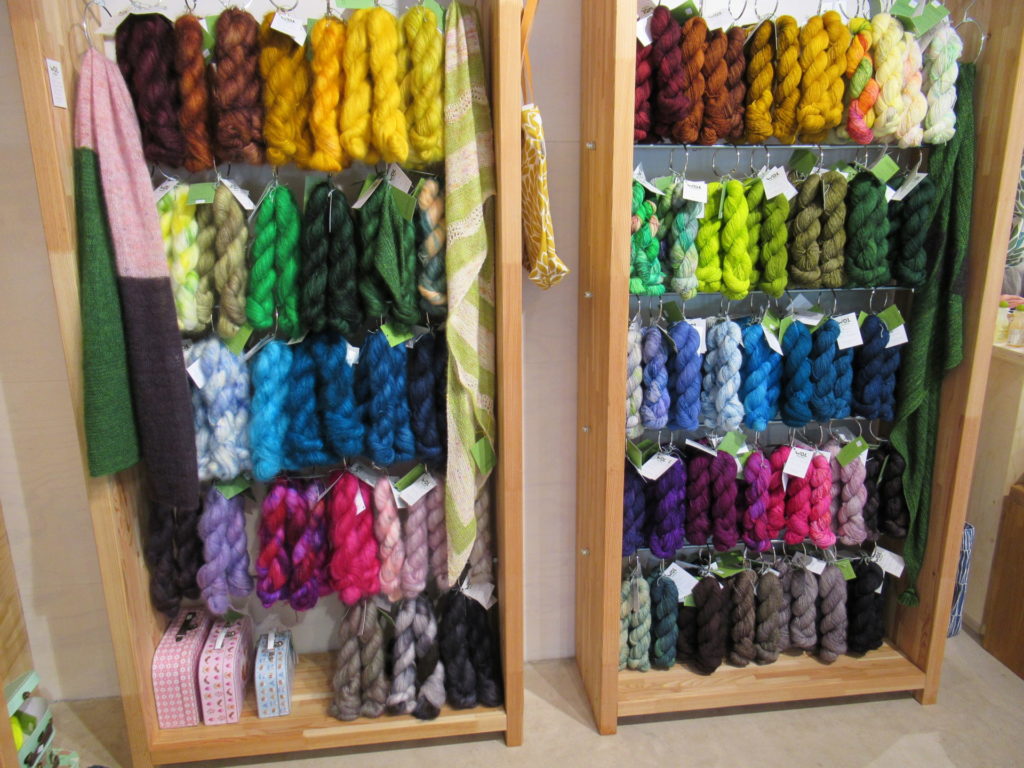
When I asked her why she decided to start Wolverhalen, Catharina told me about her life-long love of making things, and that she had been dyeing yarns as a hobby for several years before turning it into a business. Guess what her favourite colour is? Green, of course! I needn’t have asked.
Some of the yarns are dyed with natural dyestuffs and some with acid dyes. Environmentally friendly citric acid is used as fixative for the latter. (Acid dyes are not themselves acidic but require an acid to set them.)
The environment, sustainability and animal welfare are important to Catharina. (That sounds like music to my ears, too!) She avoids the use of plastic as much as possible, chooses recycled or recyclable materials for packaging, and all her wool is mulesing-free.
Well, let’s browse around the shop a little more. Below, on the right, is some økologisk Hverdagsuld and Tynd Lamauld from Danish brand CaMaRose.
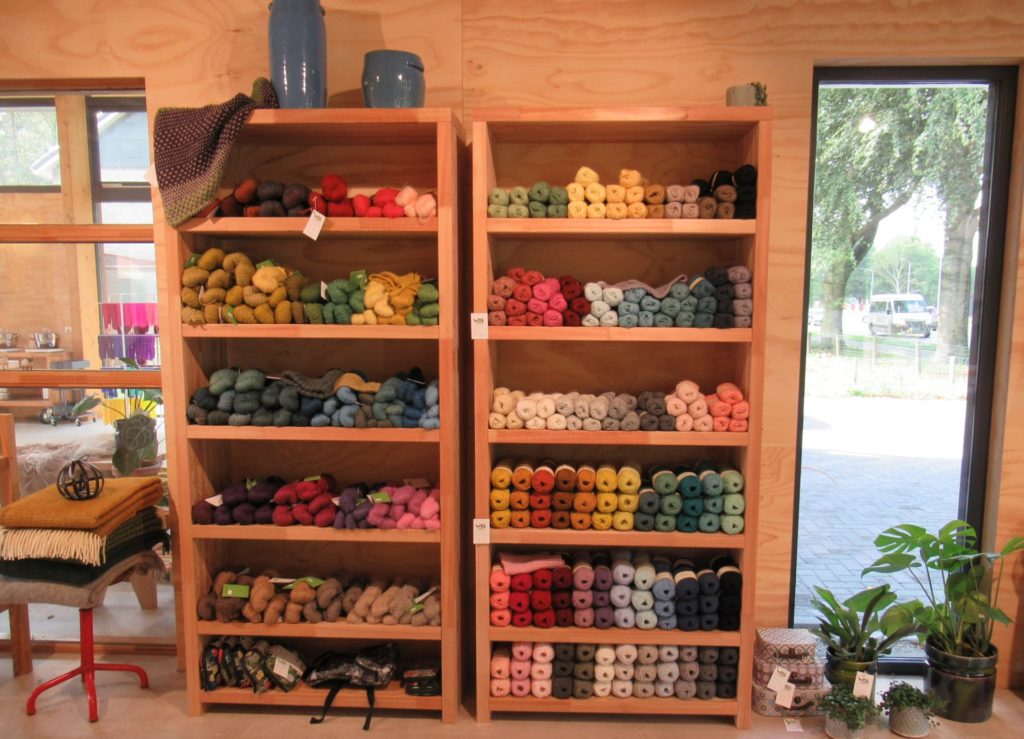
(I don’t remember what the yarn on the left was.) I have no experience with these, but I love the range of colours and bought a few balls during last year’s visit to try them out. They’re still waiting patiently in a basket.
And here is some BC Garn Baby Alpaca, also from Denmark.
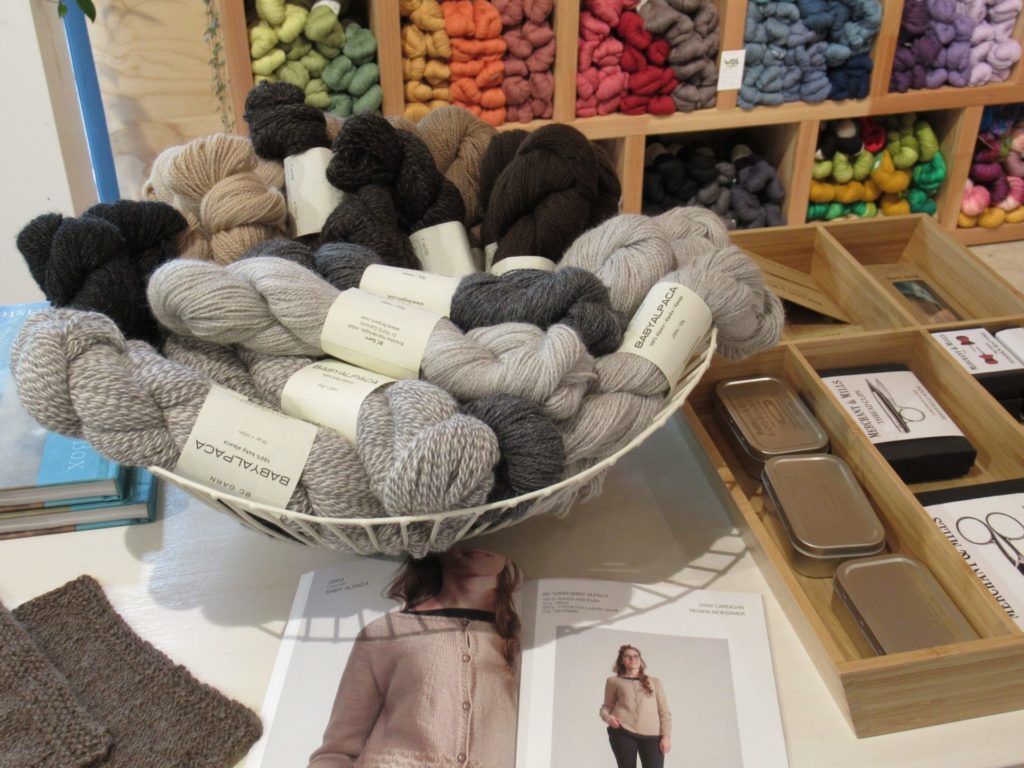
Not my colours, but oh so soft!
During my recent online visit, I ordered one skein of yarn that definitely IS my colour. It came wrapped in tissue paper with a lovely plant print, accompanied by a handwritten card with a personal message. Such a treat! I have an idea for it, but can’t tell you about it yet for fear of jinxing my creativity.
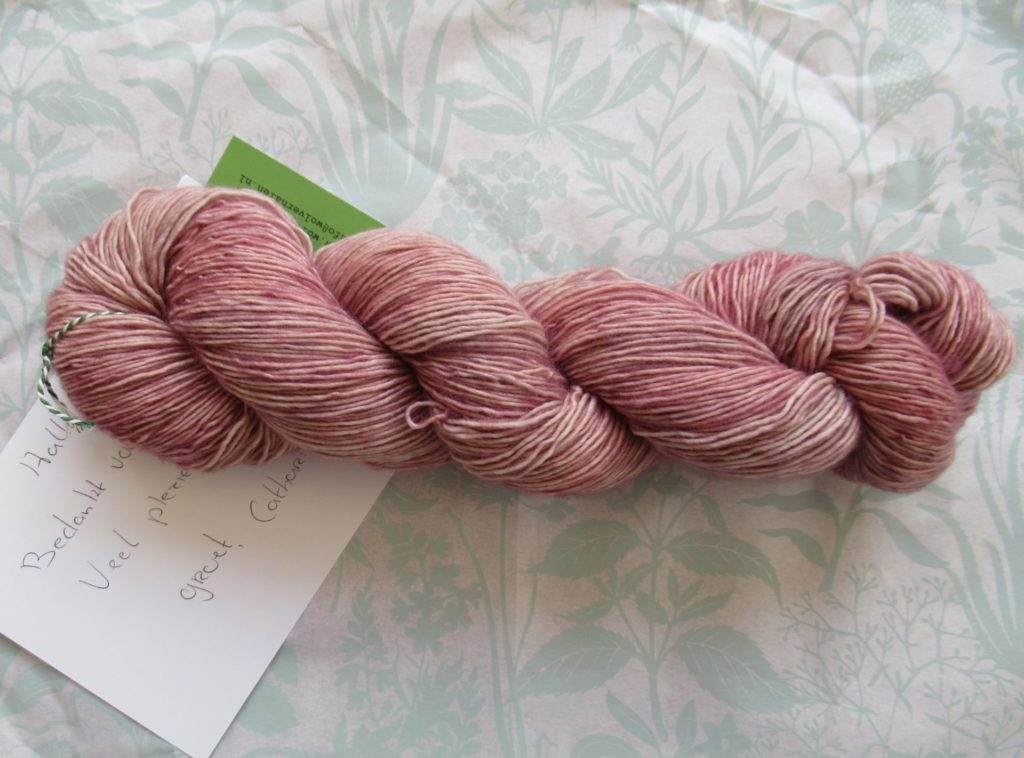
This blogpost is one of the ways in which I try to help small businesses survive this crisis. The world would lose so much of its colour if they were to disappear, don’t you think? I know it’s just a small drop in the ocean, but many small drops…
I hope your local yarn shop is still open for (online) business, or will be again soon. If not, there’s always Wolverhalen. The website is entirely in Dutch, but Catharina does ship worldwide and I’m sure she’ll be delighted to answer any questions.
Miss Lazy Daisy
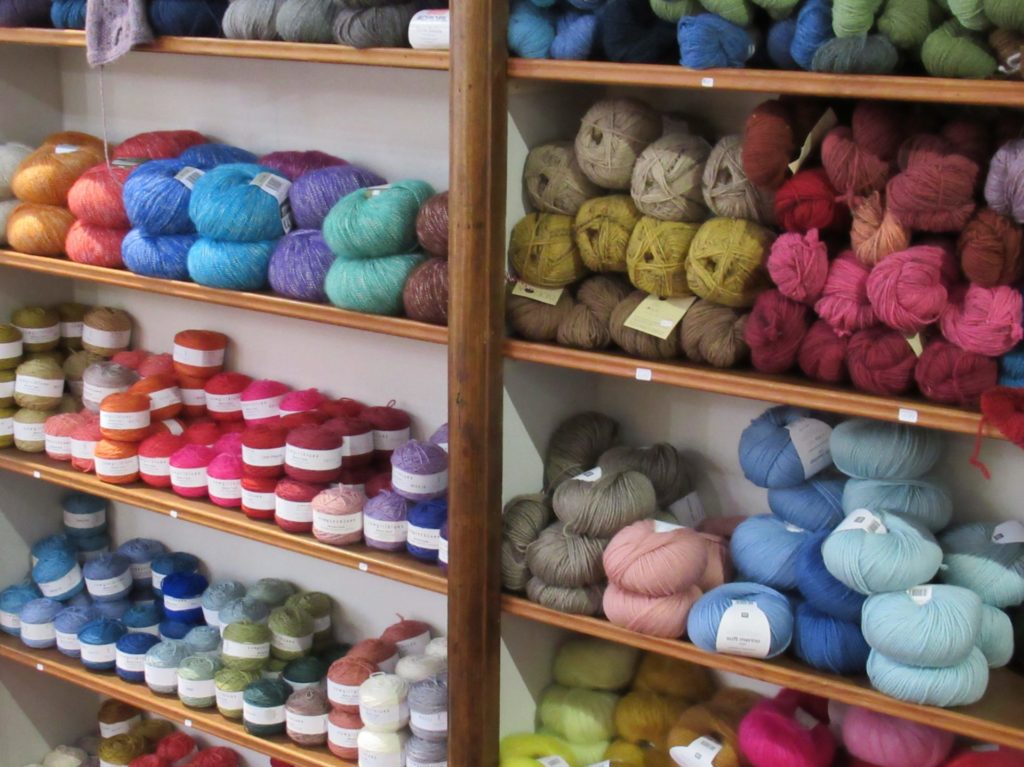
The route to the meeting I was going to attend in the city of Groningen ran right past a yarn shop. Because it isn’t every day that I visit Groningen, I packed my camera and took an earlier train to have some time to browse around and take pictures.
After a short walk from the railway station, I stood in front of Juffrouw Lanterfant (which translates into something like Miss Lazy Daisy). It is a corner shop with an old, tall and narrow door and other lovely old details.
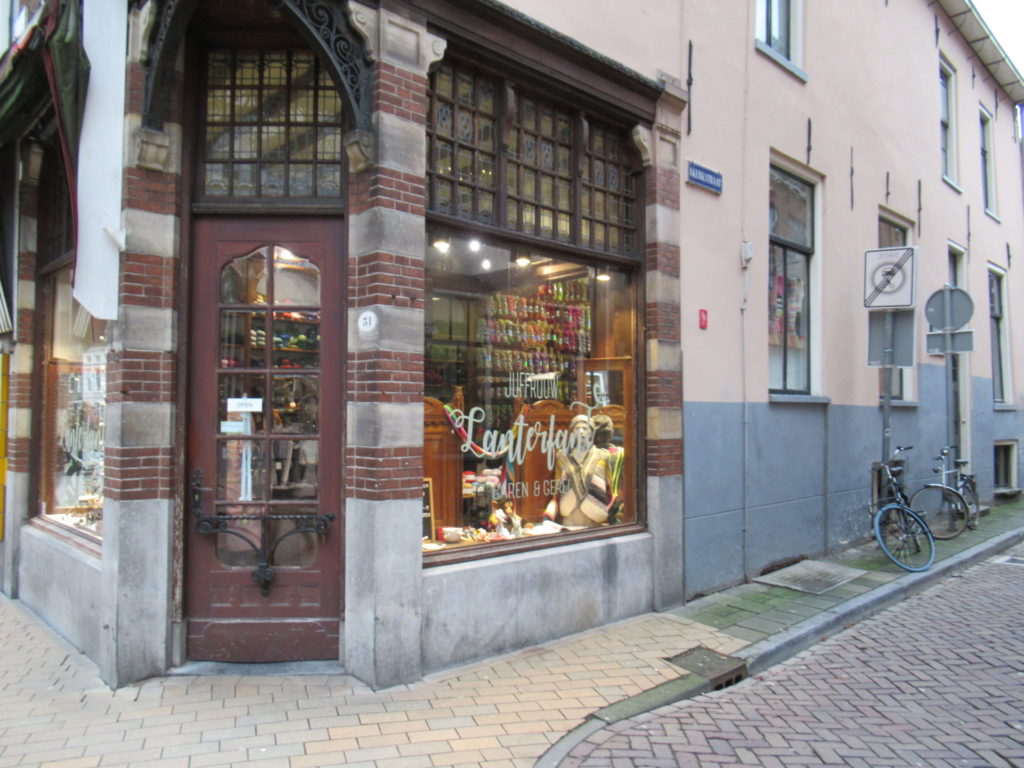
As soon as I entered, I was dazzled by the wall of brightly coloured skeins of yarn. I’m not entirely sure, but I think these are from Hedgehog Fibres:
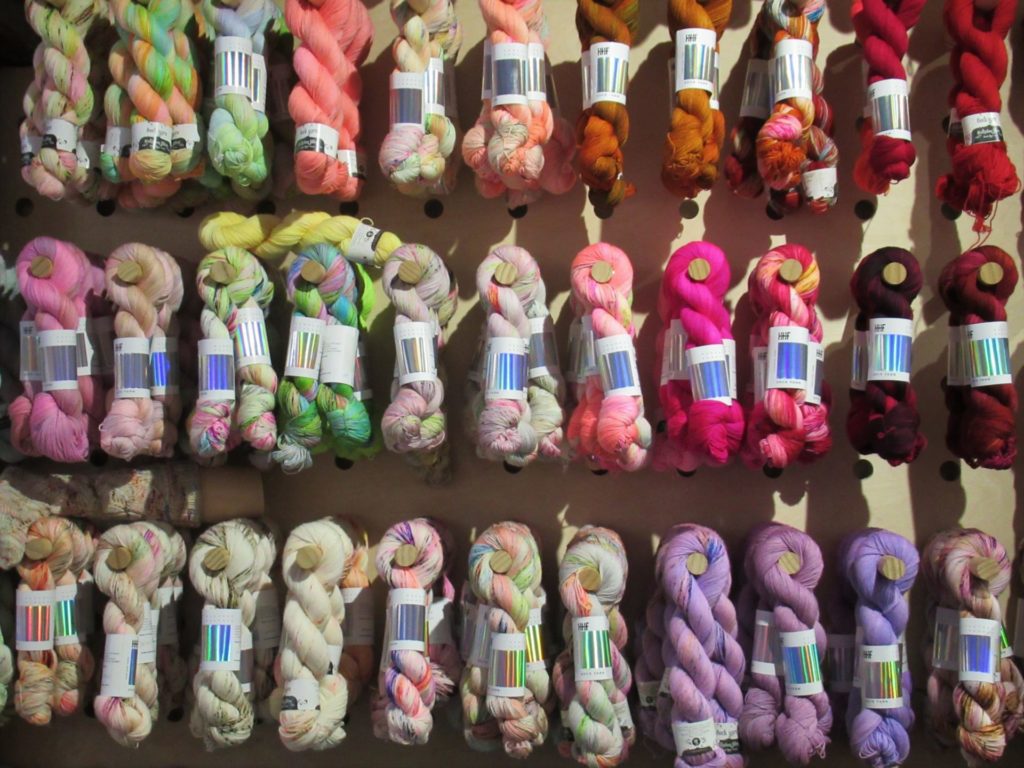
Just the thing for a Stephen West design. I have met Stephen several times and know first-hand that he is a very friendly person as well as an incredibly prolific designer. Although we have very different tastes, I think what he is doing is really, really interesting and highly original.
On a coat rack there were several shop samples of shawls, loops, cardigans and sweaters. The short-sleeved top with the attractive all-over pattern and lovely neckline is ‘Sanctuary’ from Pompom Quarterly #29.
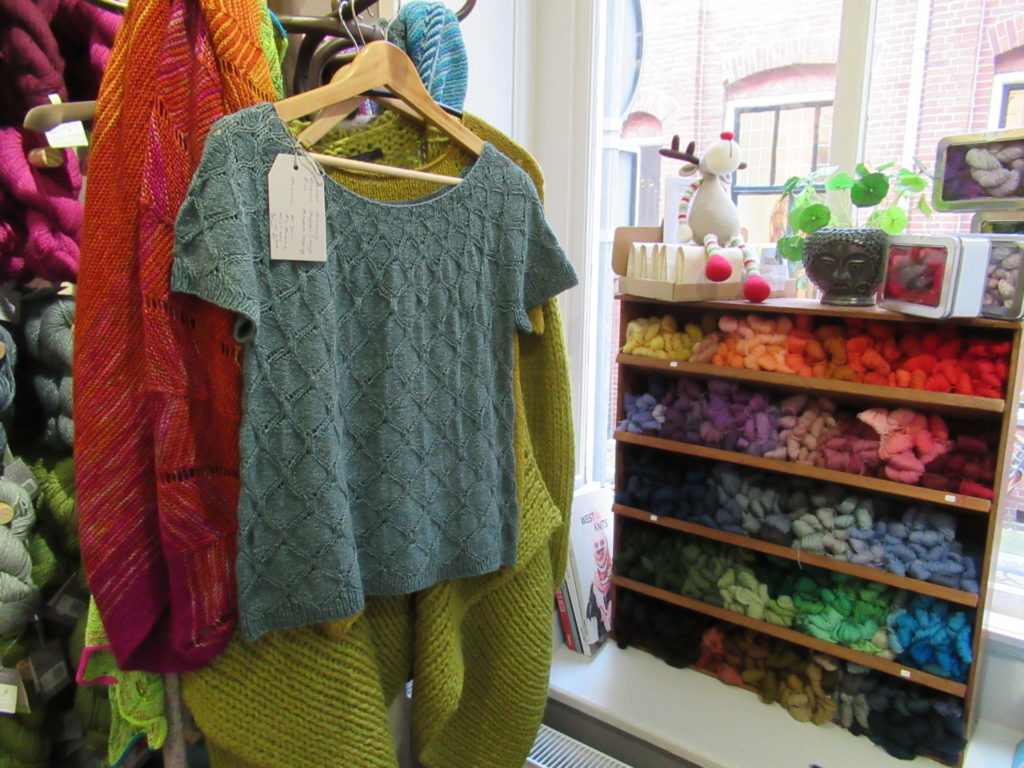
And, oh, that beautiful rainbow of colours in the small cupboard to the right of it! That must be Appletons crewel wool.
And what do I spy on the top shelf?
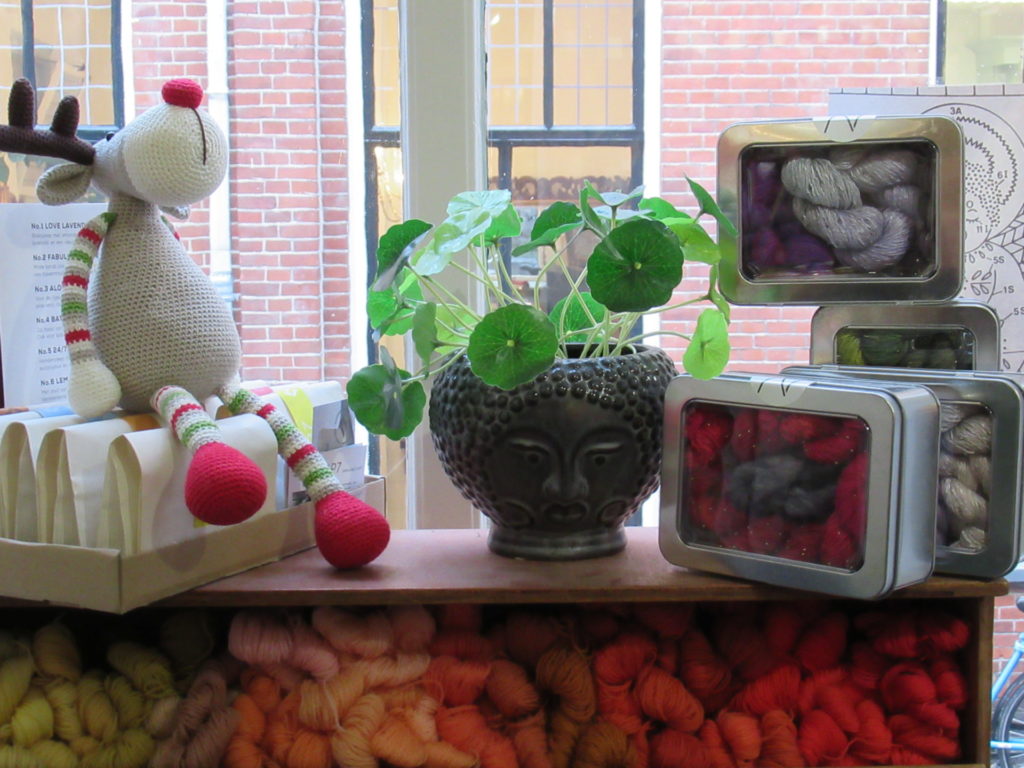
Several gift boxes filled with ArtYarns’ luxurious fibres embellished with beads or sequins. I once splashed out on one single skein of those, a silvery yarn with beads AND sequins. ArtYarns are a bit too blingy for an entire shawl to my taste, but in combination with other, quieter yarns – yum!
At the other end of the spectrum, the shop also stocks Icelandic Létt Lopi. A rustic, really woolly, sheepy yarn.
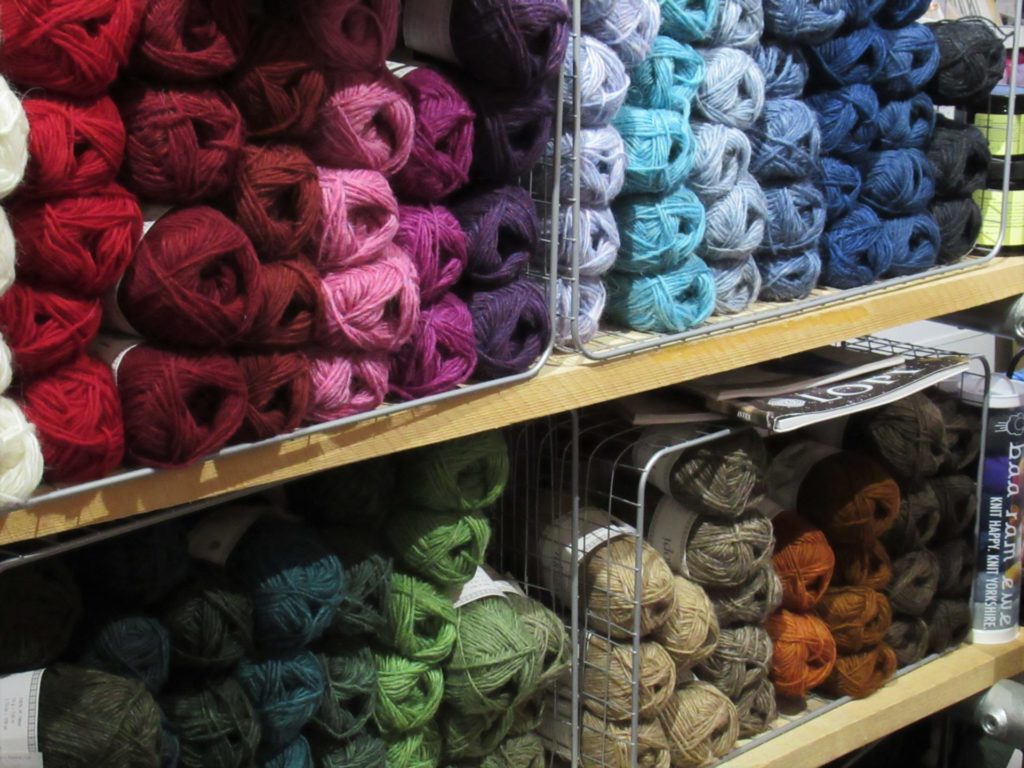
The shop lady was knitting a humongous shawl from it, in black, grey and white with fluorescent pink accents. She said it would be about 4 metres long when finished. Here it is, laid out on the reading table:
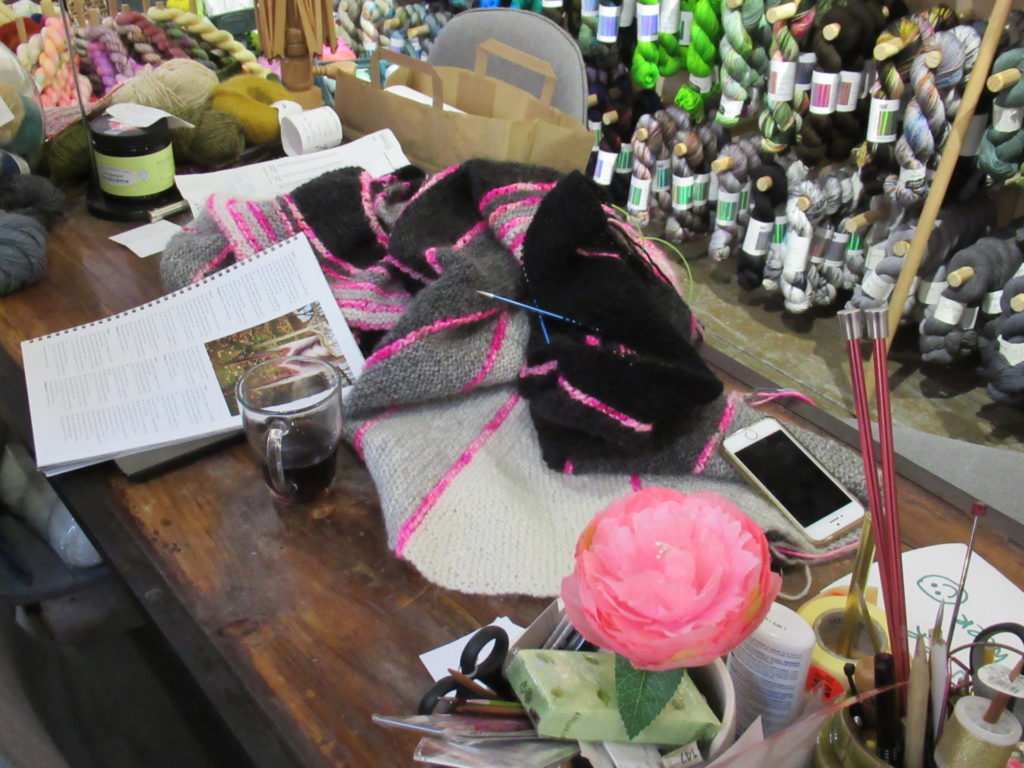
I love it when a yarn shop has a big table like this, even though (or perhaps especially if) it is rather messy. Nowadays, yarn shops aren’t just about buying yarn. They are also great places to find inspiration, leaf through new knitting books and meet other makers.
Having said that, I did buy something – one beautiful skein of yarn to complement several others I once bought in Germany:
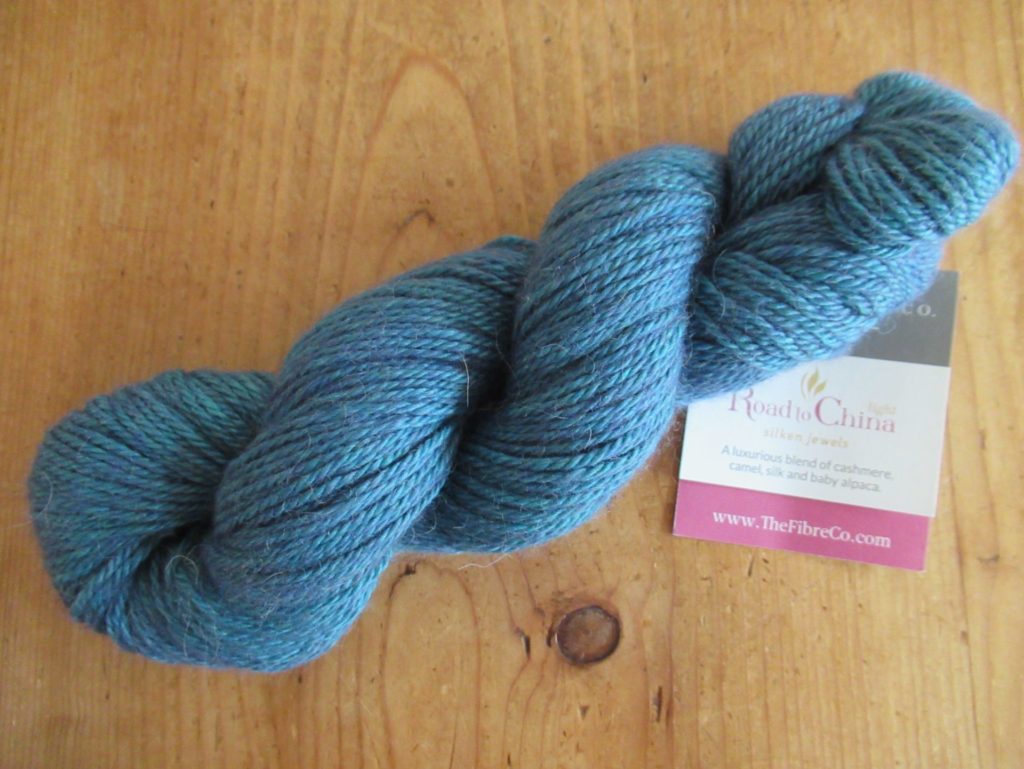
If you’re ever in the area, do pop into Juffrouw Lanterfant. Their address and most (but not all) of the yarns they stock are on their website.
This blog post isn’t sponsored in any way. I sometimes write about yarn shops because I love chatting about the materials I choose and use, and also because I think it may be of interest to other knitters. I feel a bit silly repeating this every time, so I have now altered my ‘About’ page to explain once and for all that I don’t have a hidden agenda.
An Afternoon in Antwerp
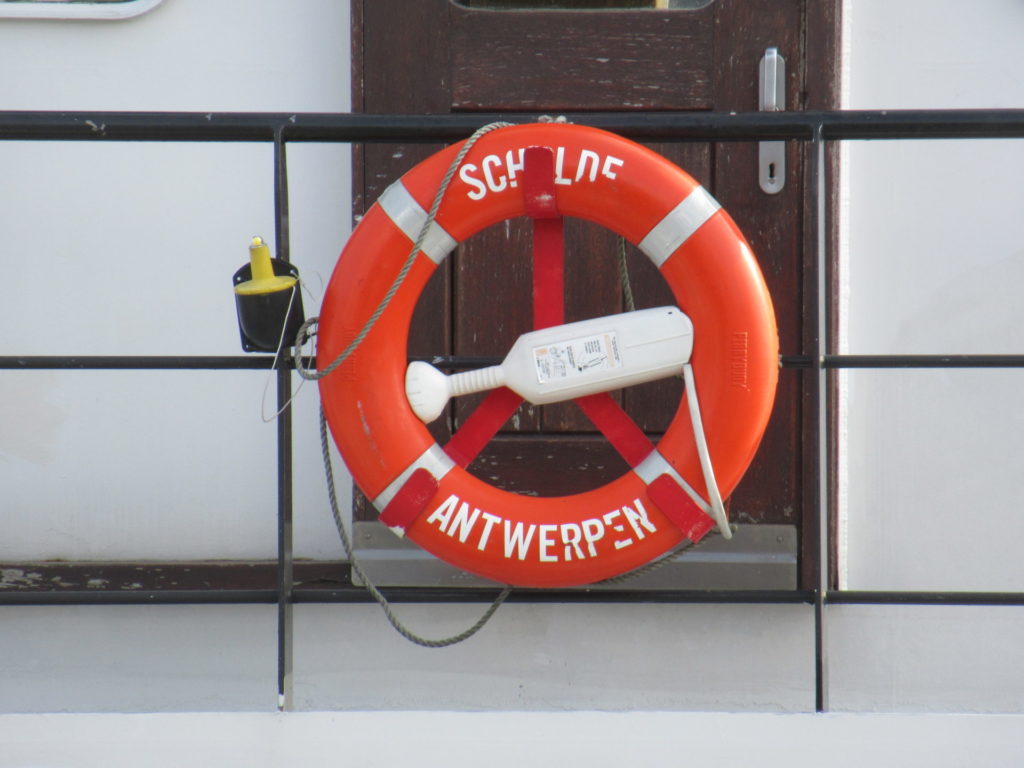
Friends of ours live near the Belgian border. That’s not exactly around the corner from where we live, and we don’t see them as often as we’d like. So, when my husband was asked to give a talk in Antwerp, we decided to drive down together and invited ourselves to a meal at their place afterwards.
This meant that I had an entire afternoon to spend as I liked in a city I had only been to once, years ago. I wanted to spend my precious time well, and planned my route carefully beforehand to include some sightseeing and some shopping.
I was dropped off on the left bank of the river Scheldt and took the ferry across to the city centre.
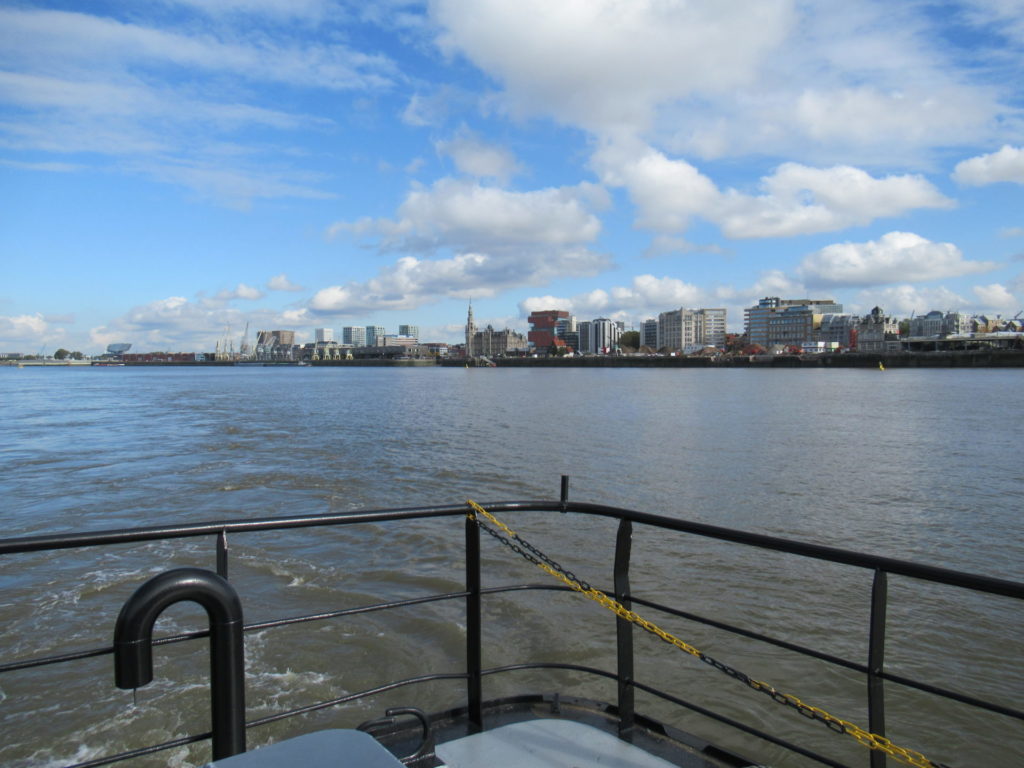
The ferry ride, even if it lasted only 15 minutes, immediately gave me a feeling of freedom and being on a holiday. From the water, I had a lovely view of Antwerp’s skyline, with its mixture of old and modern buildings.
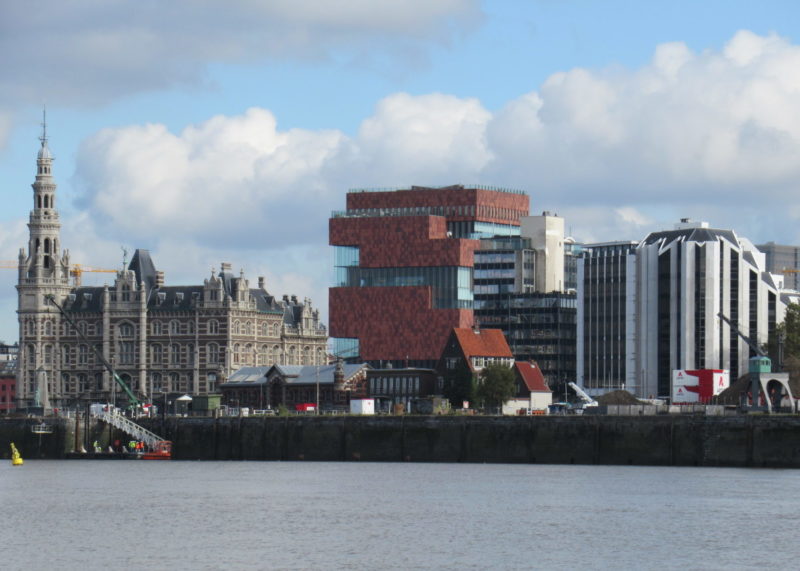
My first port of call was the Grote Markt, the market square with its tall and impressive guild halls. They speak of incredible wealth. Flanders once had a booming woollen cloth industry, but I think that had declined before these guild halls were built. I know very little about Belgian history, to be honest, and have no idea where all the wealth on display here came from, but I have a feeling that it cannot all have been fair trade.
The gables are adorned with ‘golden’ sculptures. I don’t suppose they really are made of gold, but they aren’t brass either, or somebody will have to climb up and polish them once a week.
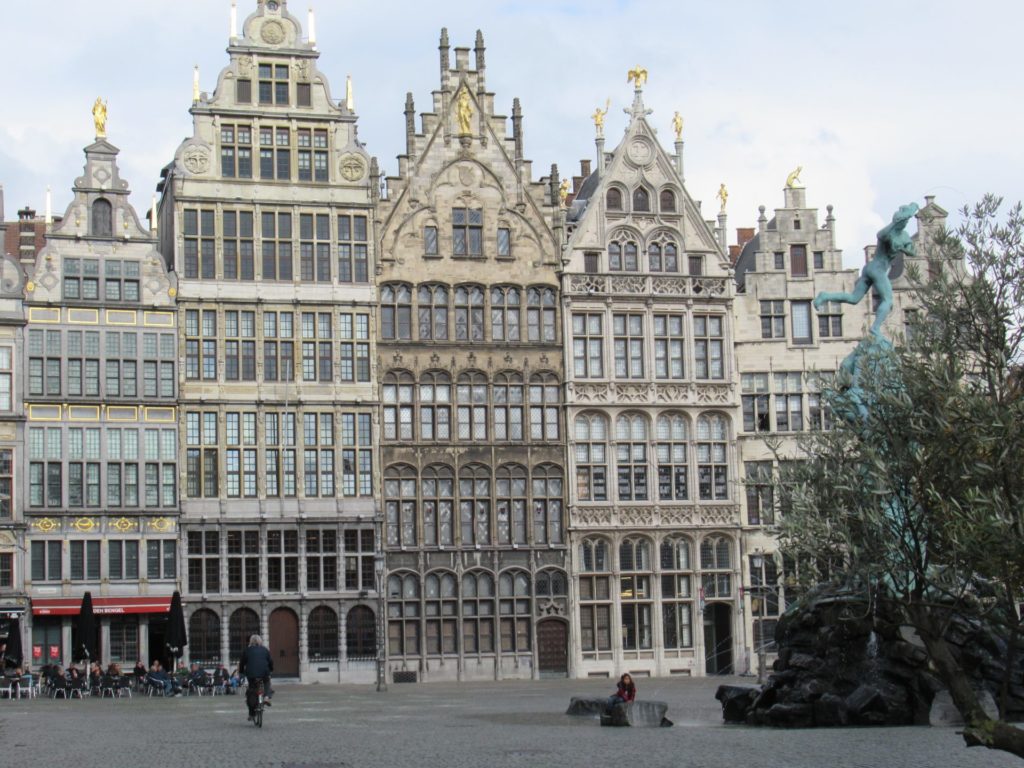
High up on one of the gables, a beautiful golden galleon was sailing through the clouds.

Leaving the market square behind, I strolled through the surrounding streets and bought some of those famous Belgian chocolates for my loved ones.
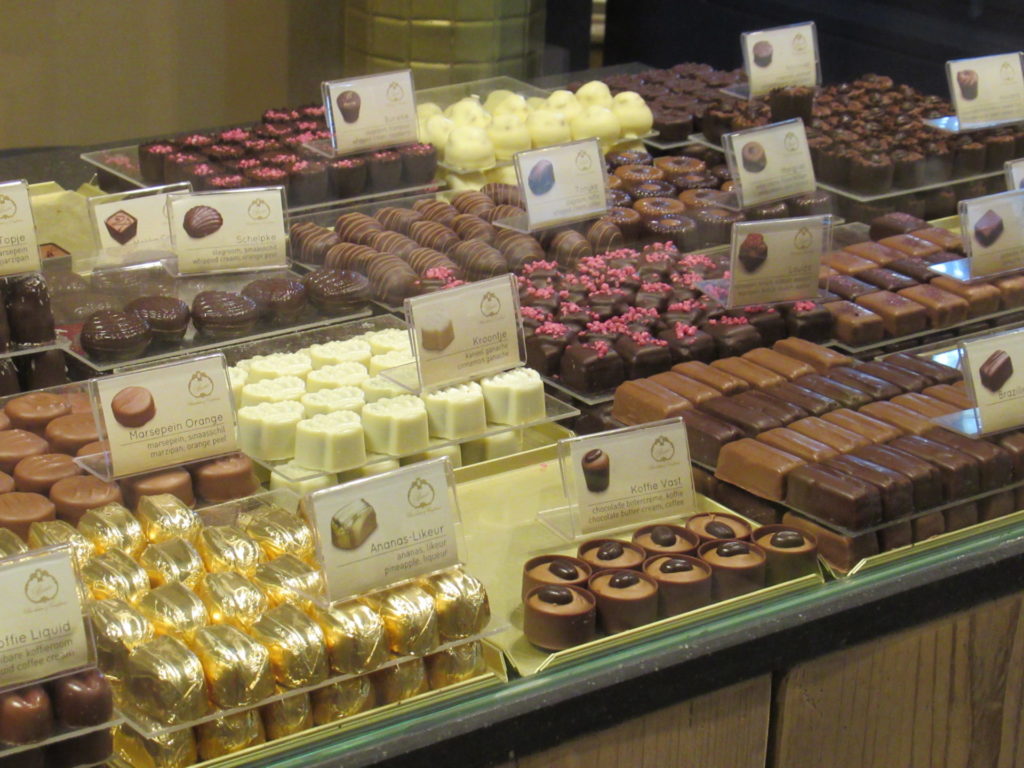
Having crossed off the most important thing on my list of things to do, I went in search of the Vlaeykensgang. I’d read about this historic alley and had located it on the map, but still had some difficulty finding it. The entrances are so narrow and inconspicuous that I’d walked past one of them several times without recognizing it as an entrance.
I’m glad that I didn’t give up, because it’s a really, really special place.
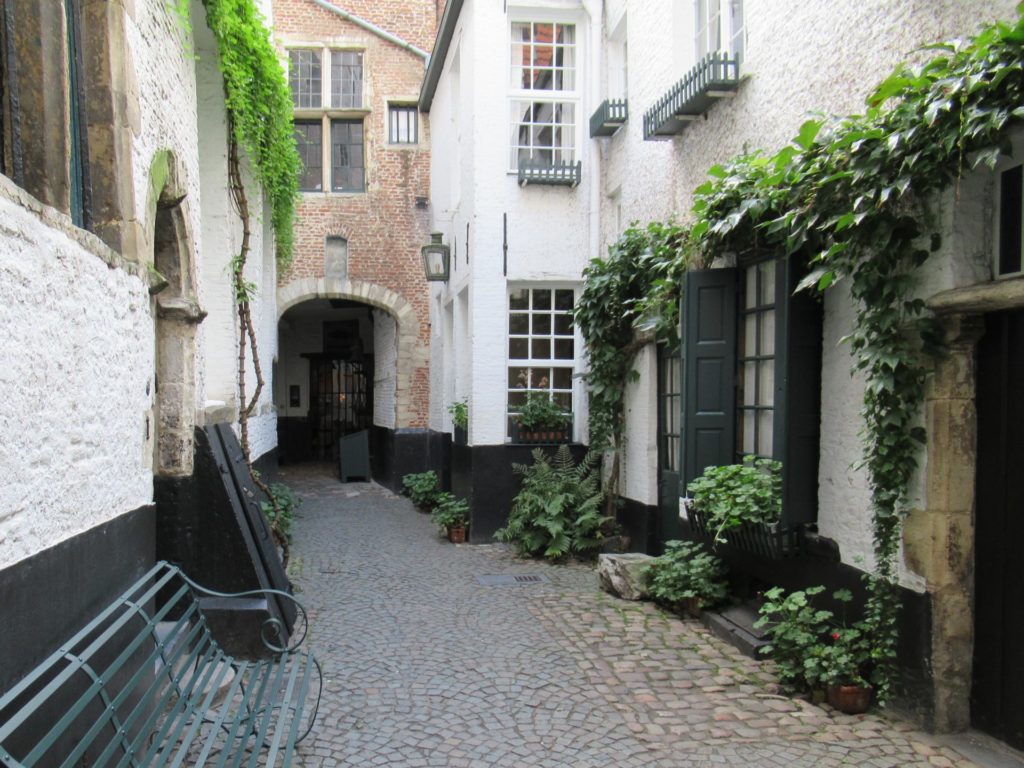
A restaurant in one of the buildings looked very inviting, with flowering plants on the window sills and the warm glow of candles inside.
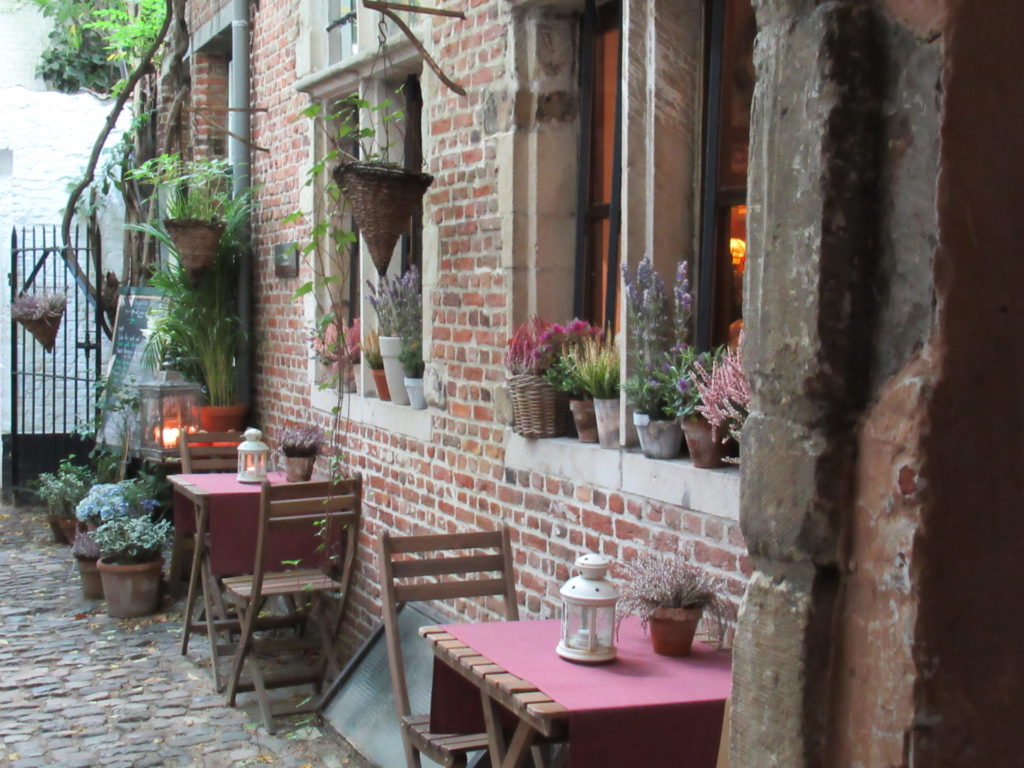
But my time was limited and there was more on my list of things to do, so I walked on to Julija’s shop. Julija sells fabrics and yarns, some of which she dyes herself, like this tweed yarn.
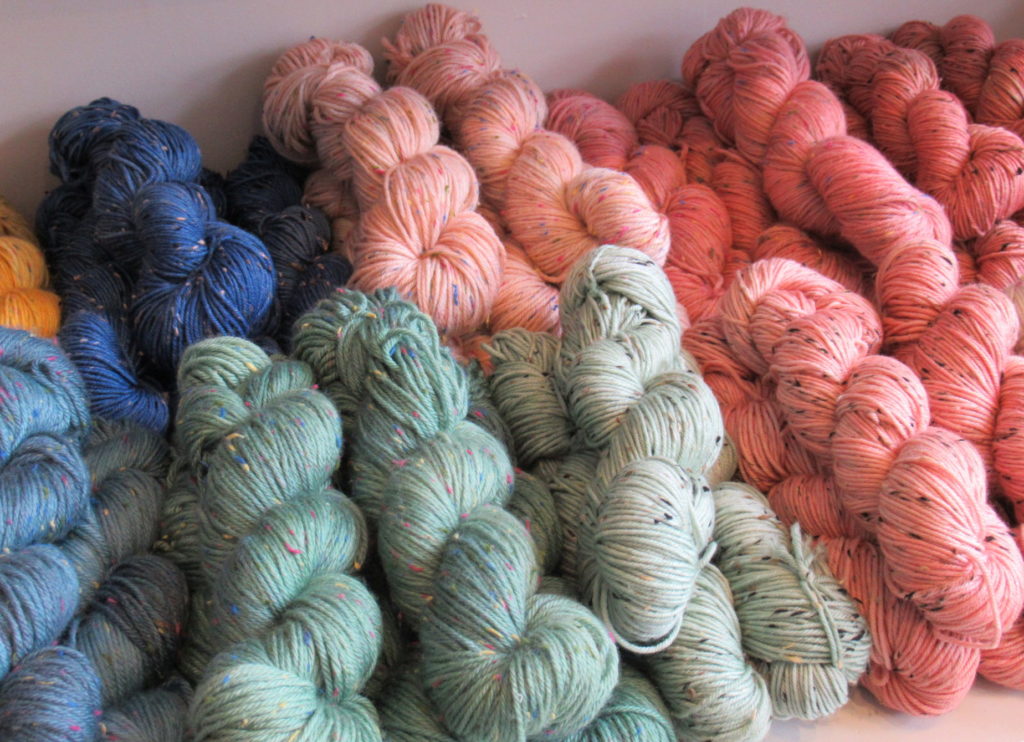
She is best known for her knitting patterns for young children and their mums, though. She has published four ‘real’ books and many small booklets she calls magazines.
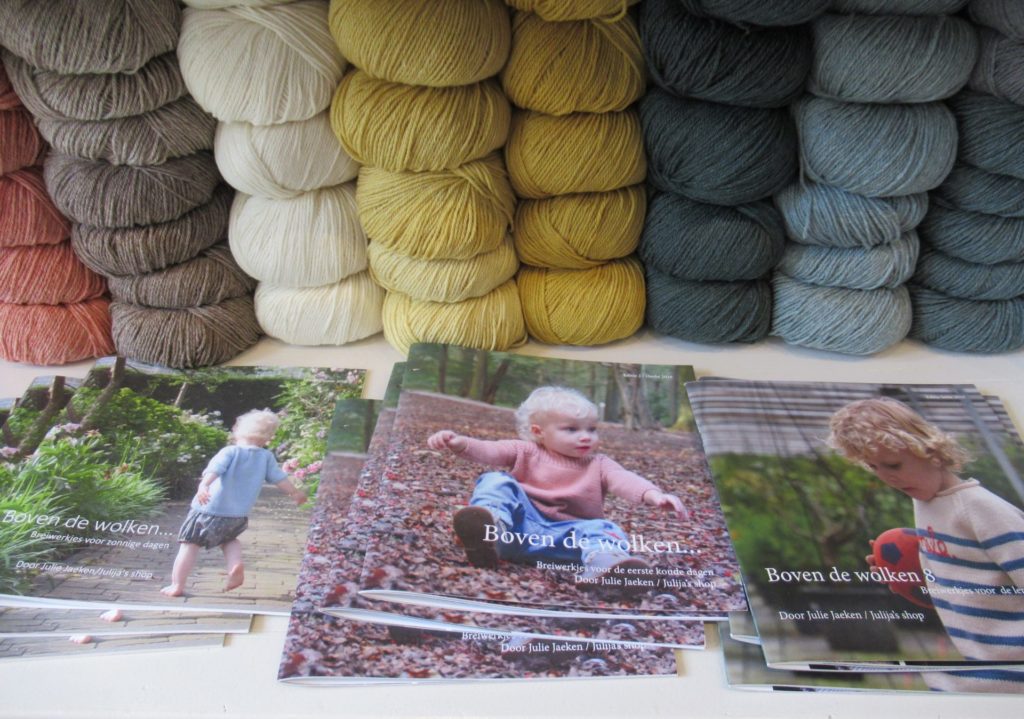
Julijas patterns are easy to knit and make me wish that I had some small people to knit for. I mean, look, isn’t this simple garter stitch cardi adorable?
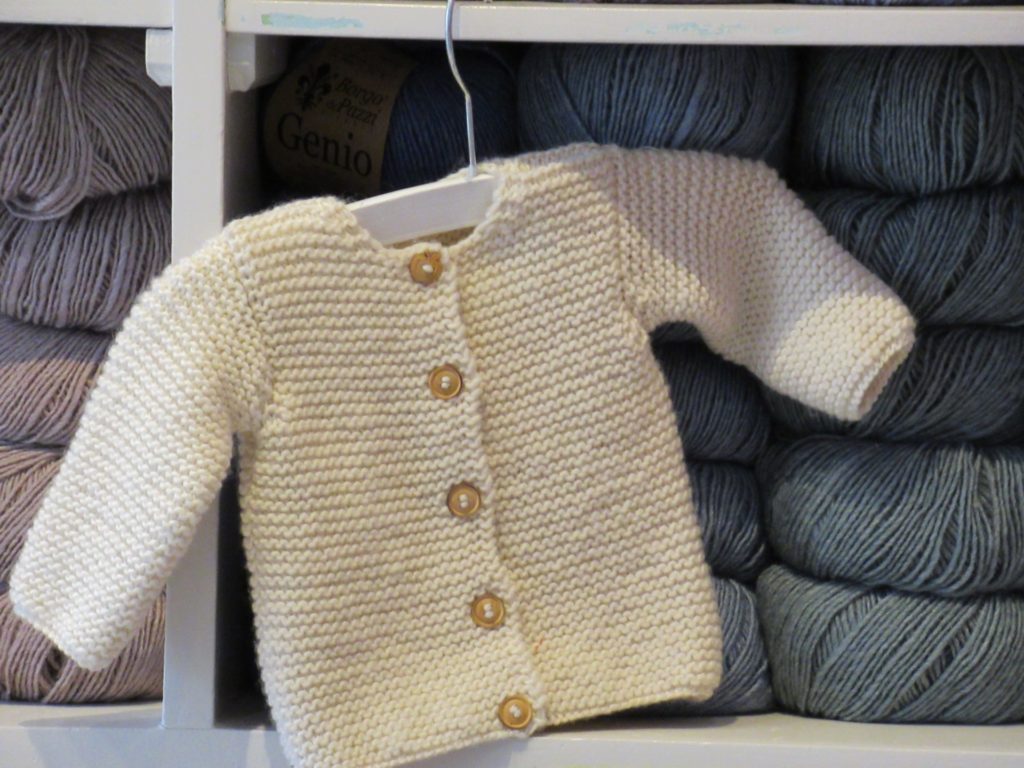
Even in big cities, I always feel drawn to green spaces. In Antwerp I found a lovely place to munch a snack and give my feet a rest in the Botanical Garden.
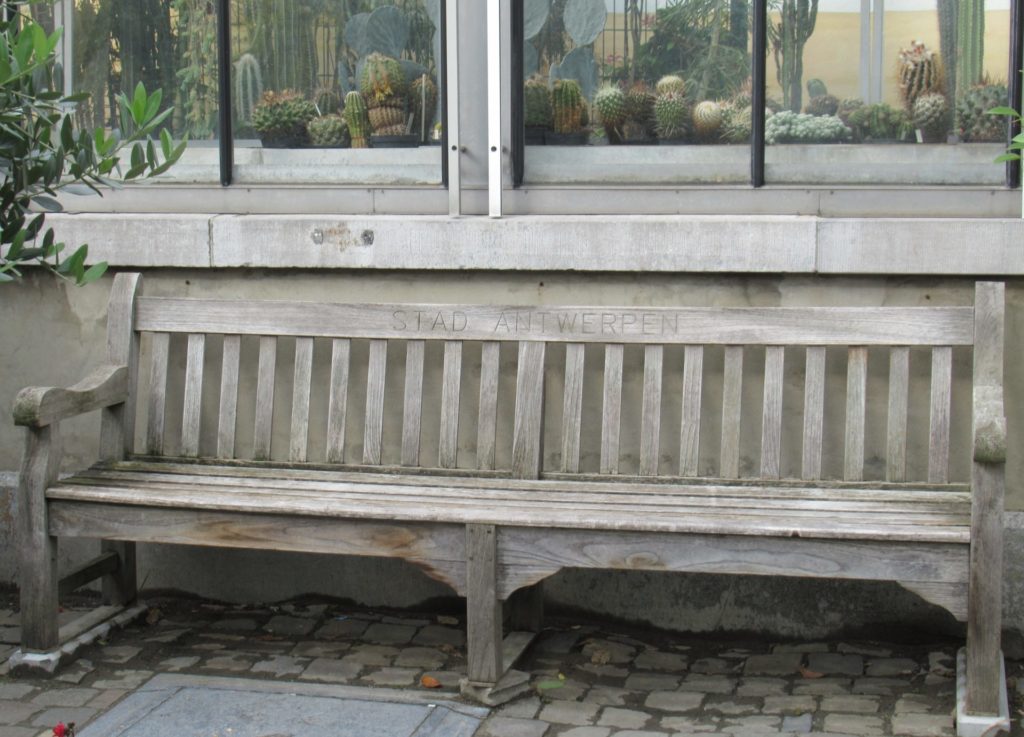
Den Botaniek, as it’s called, used to be the herb garden of a hospital. Part of it is still planted with herbs and there are also some beautiful trees, a pond with a small waterfall and big goldfish, a glasshouse with cacti and other exotic plants, and an intriguing sculpture.
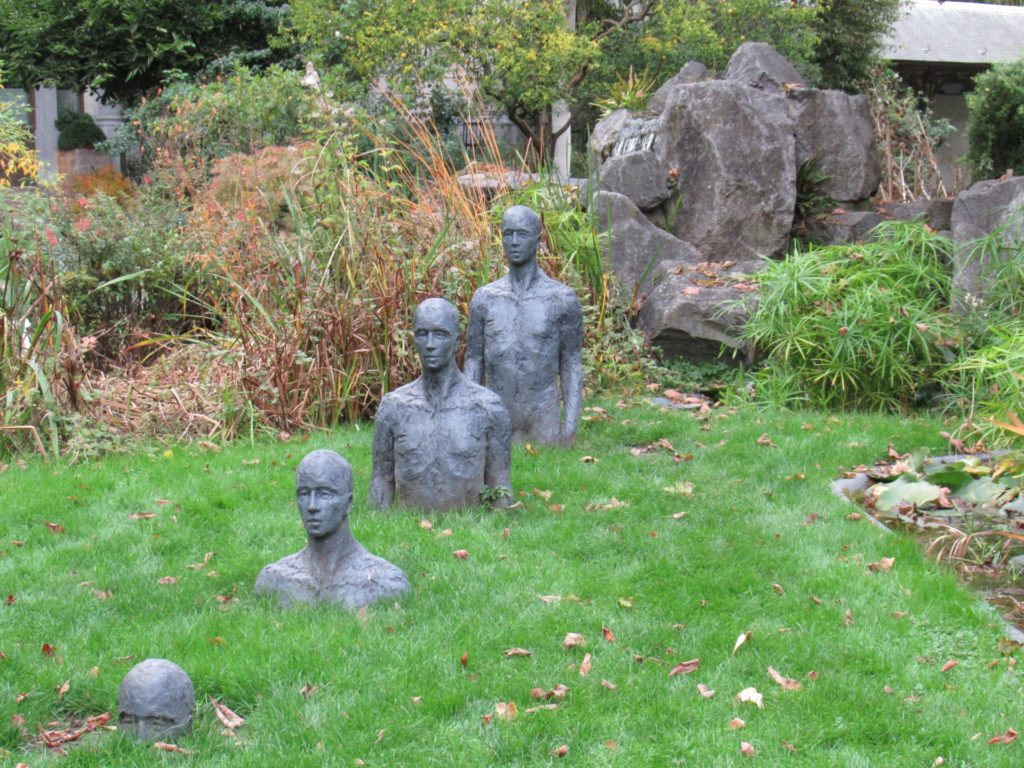
The plaque next to it says that it’s called ‘Greening II’ and is by Monique Donckers. I haven’t been able to find anything else about it. What does it mean? Could this be symbolic for man on his way to pushing up the daisies?
Refreshed by my short stop, I walked on to another yarn shop – Lana. Visiting two yarn shops on one afternoon, made me realize how different they can be. Both of these shops sell yarn, obviously, but their selection and atmosphere is very different. While Julija’s is light, fresh and modern, Lana is warm, colourful and cosy.
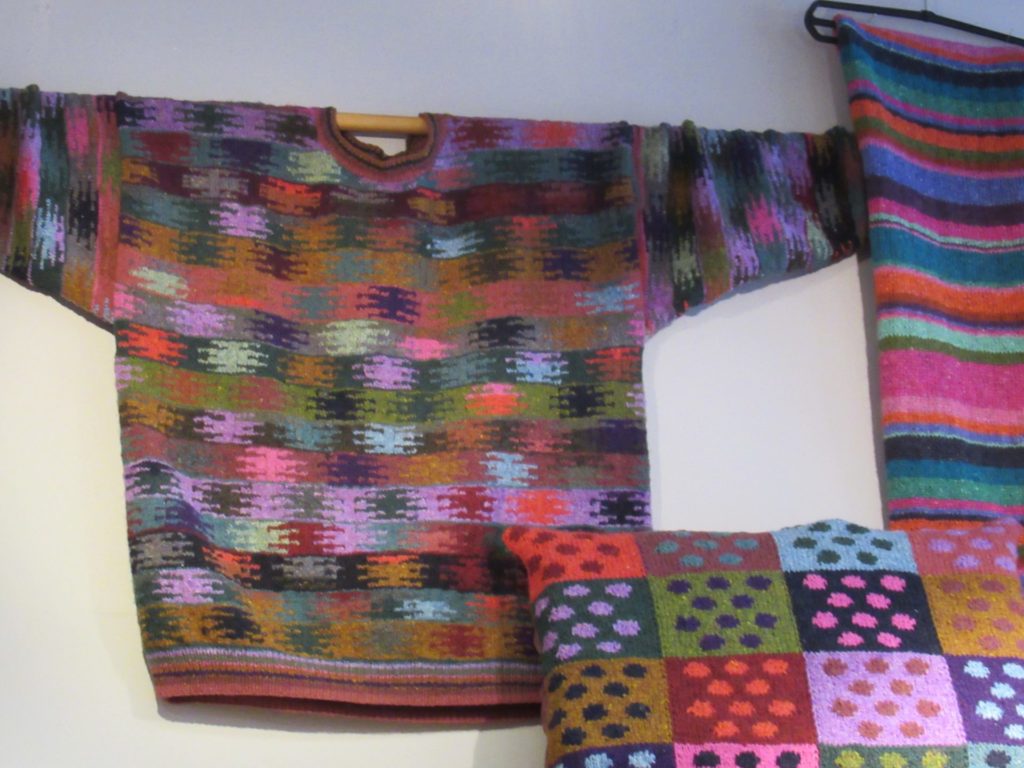
Lana is a Rowan flagship store and the photos above and below show several knits in their Felted Tweed yarn. Some (or all?) of them are by the famous Kaffe Fassett. I recognize Vibrant Stripe (scarf above right) and Colours in the Mist (sweater below).
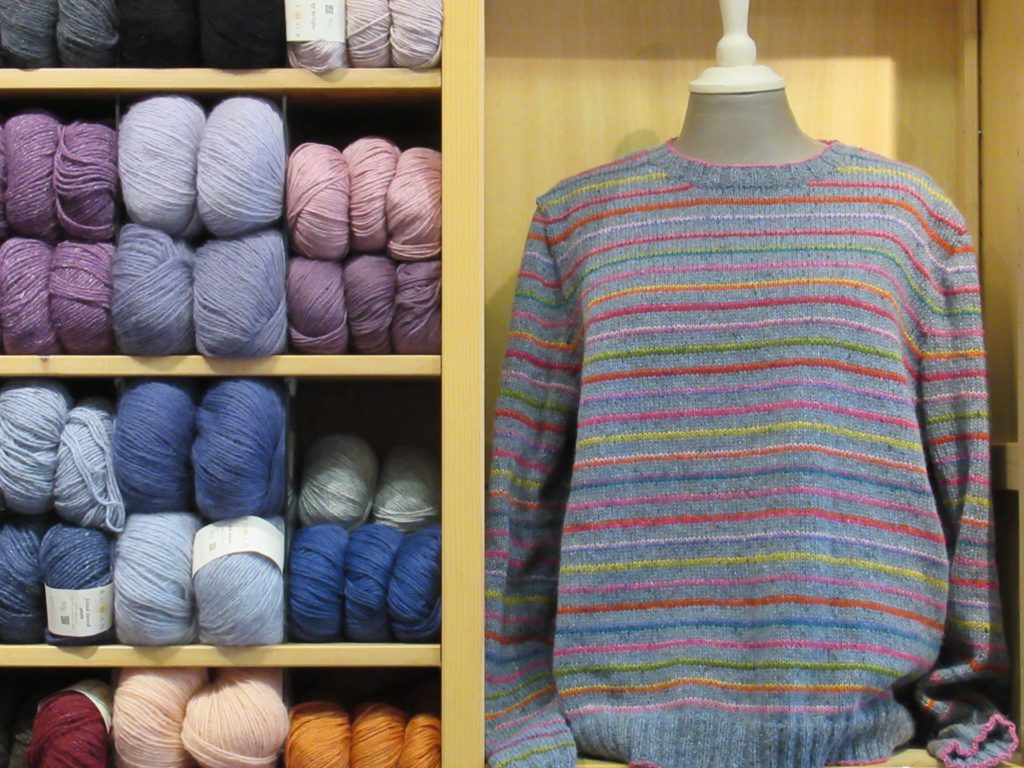
I’m not sure about the striped knits below – perhaps they are just swatches to show off a beautiful yarn, or perhaps they are scarves. And I don’t remember what yarn they were in either. I only photographed them because they were so nice to look at.
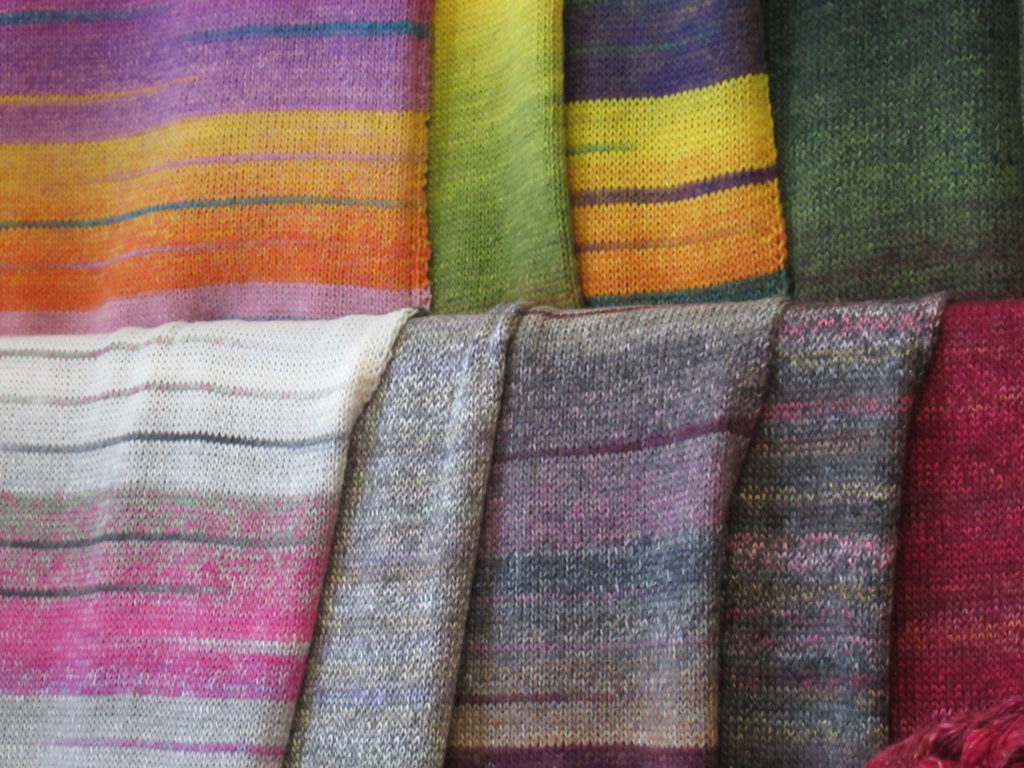
I must admit that I feel a bit iffy about writing about these yarn shops. So, to be absolutely clear about my intentions: I’m not sponsored by any of them. I just write about them because I hope that some of the things that make me happy, will make others happy, too. And also because the information may be useful to other knitters with some time on their hands in this lovely city. Besides, it isn’t as if these shops are huge multinationals. They are just small businesses that deserve all the support they can get.
And did I buy anything? Often, I am so overwhelmed by everything I see, that I think, ‘Oh well, I don’t really need anything’, and leave the shop empty-handed. But this time I was well prepared. At Julija’s I bought some beautiful Japanese fabric, in a blue-green colour that looks like wide brush strokes of watercolour paint. And at Lana I chose a few balls in a thick, soft, fluffy yarn in off-white for a cosy winter accessory.
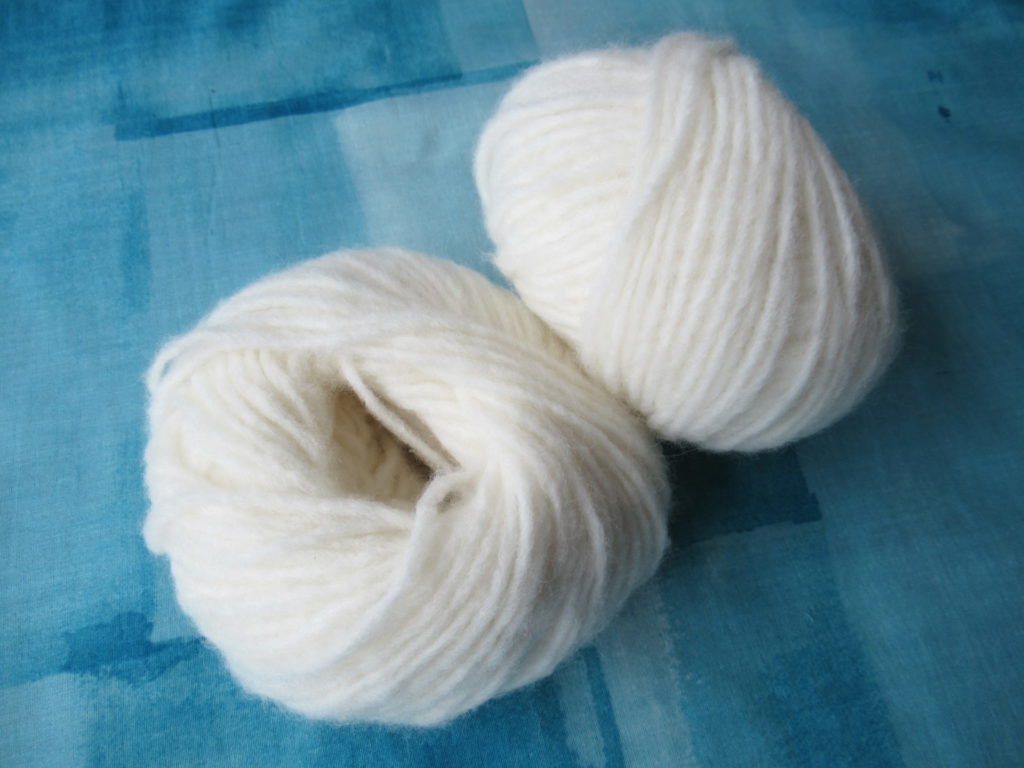
Well, time to head back. Instead of taking the ferry across the Scheldt again, I walked through St Anna’s Tunnel under it. I wasn’t entirely sure about this, but because there is no bridge, I didn’t have much choice. My fears were unfounded, though, as the tunnel is clean, well-lit and feels entirely safe. And it’s quite an experience! It’s a pedestrian tunnel dating back to the 1930s, with escalators made of wood and brass that make a fantastic rattling noise.
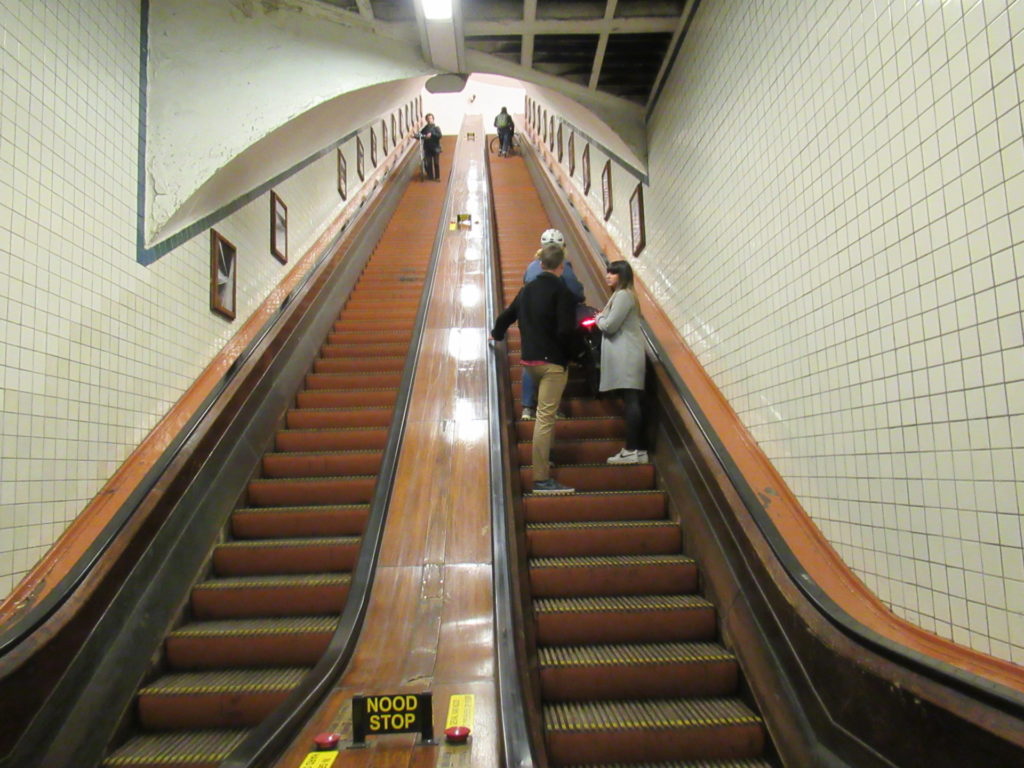
If you’d like to visit Antwerp too one day, I’d say take an entire day (at least) and rent a bicycle or use public transport. (I vastly underestimated the distances and walked miles and miles.)
At the end of a lovely afternoon, an even lovelier supper awaited us at our friends’ place. They prepared a special Belgian meal, with Flemish chips, spicy red cabbage and a stew made with one of Antwerp’s special beers. Thank you, dear friends!
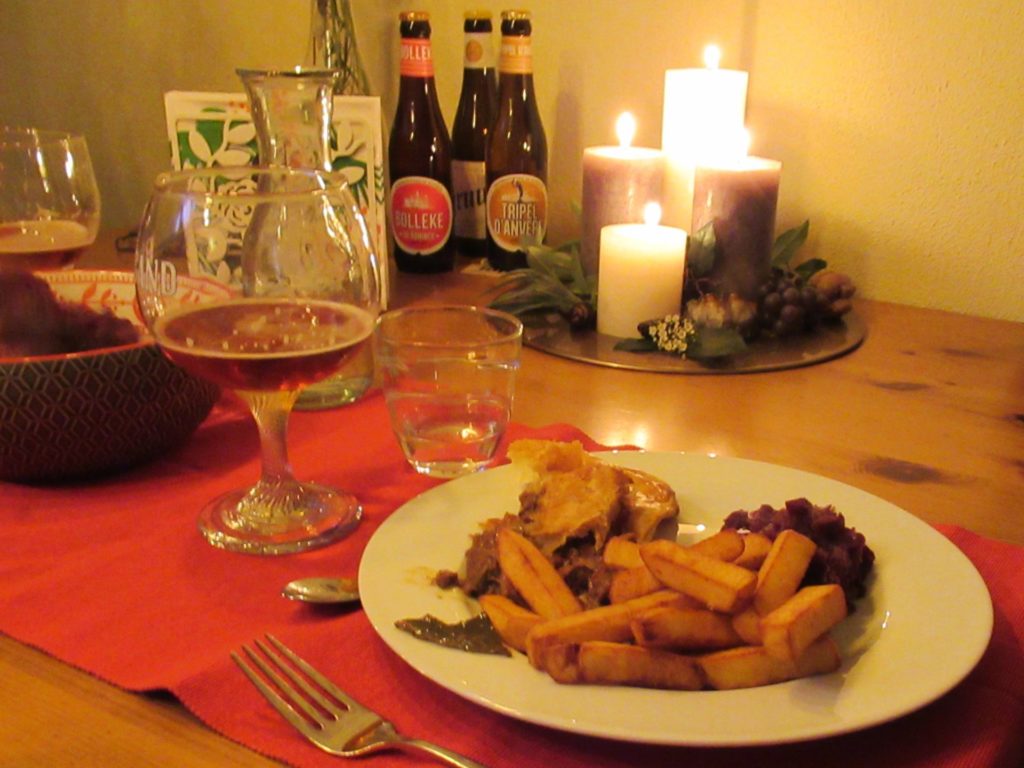
I won’t be here, on my blog, next week. After all this gallivanting, working in the garden and a terrible computer crash, I need some time to catch up with the rest of my life. And I want to finally finish the new design I’ve been working on for a long time. I hope to tell you more about that soon.
Thanks for reading and take care!
Knitting at the Sugar Factory
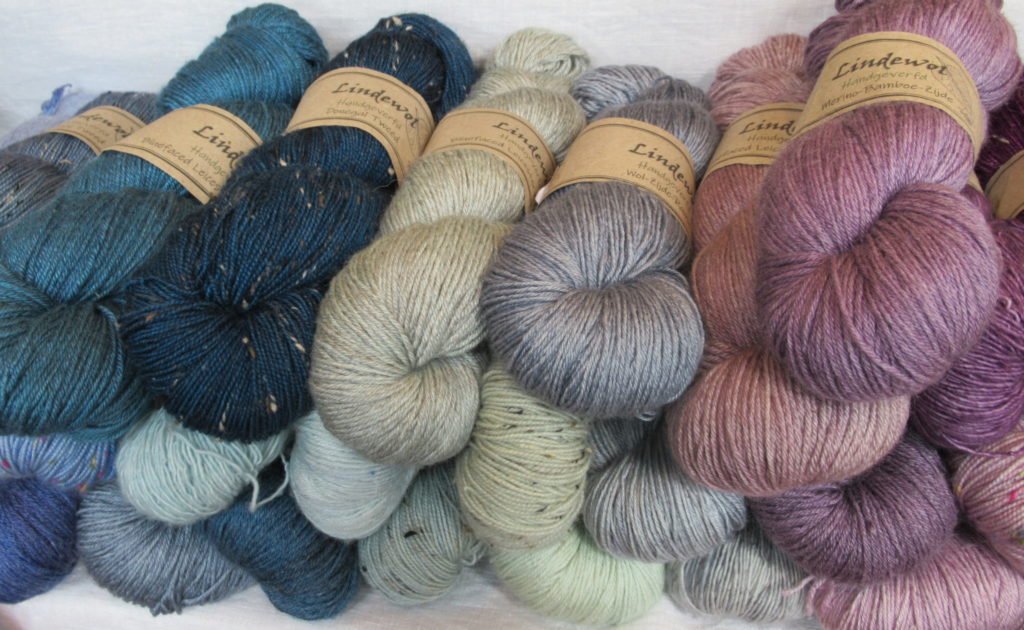
Last Friday I took the 8 o’clock train to Groningen, to visit the Northern edition of the Knitting and Crochet Days. I’d planned to add a few centimeters to my take-along project, a scarf in 4 shades of green, or perhaps even finish it. But after knitting less than a row, I discovered that I’d dropped a stitch quite a few rows down. I hadn’t brought a crochet needle to fix it, and as this particular yarn (Rowan’s ‘Kid Silk Haze’) is notoriously difficult to unravel, there was nothing for it but to stuff my knitting back into its bag.
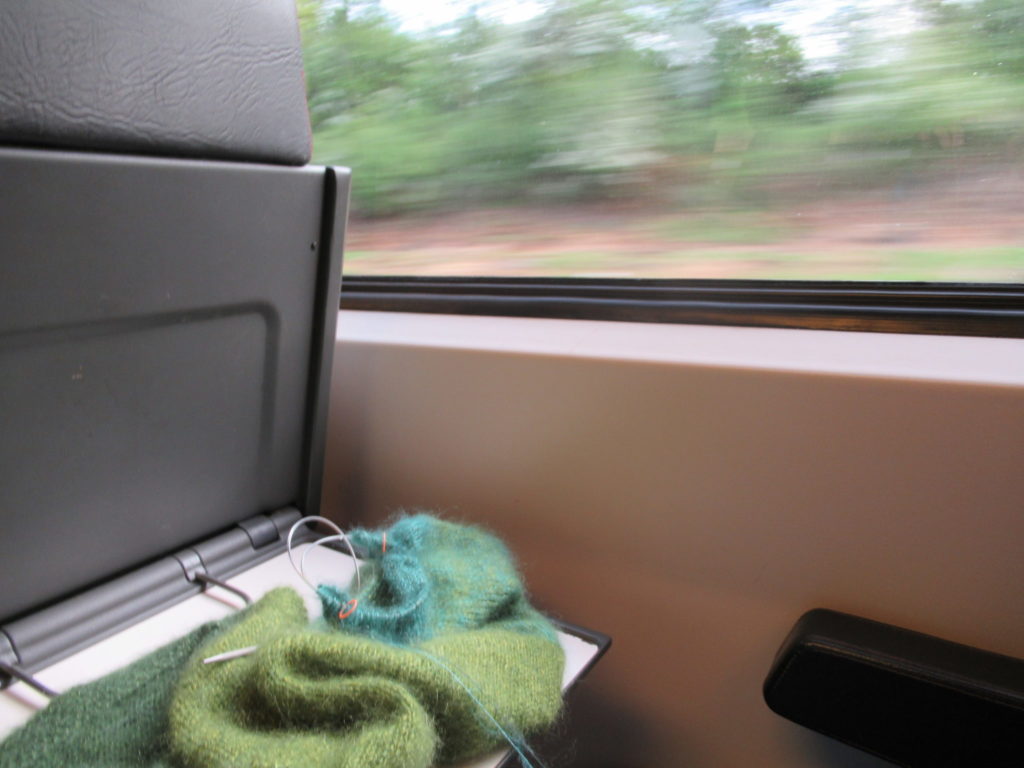
Oh well, just looking out the window at the familiar landscape rushing by was very nice too. Along the route I met up with a friend, and together we arrived at the Old Sugar Factory, where the fair was held.
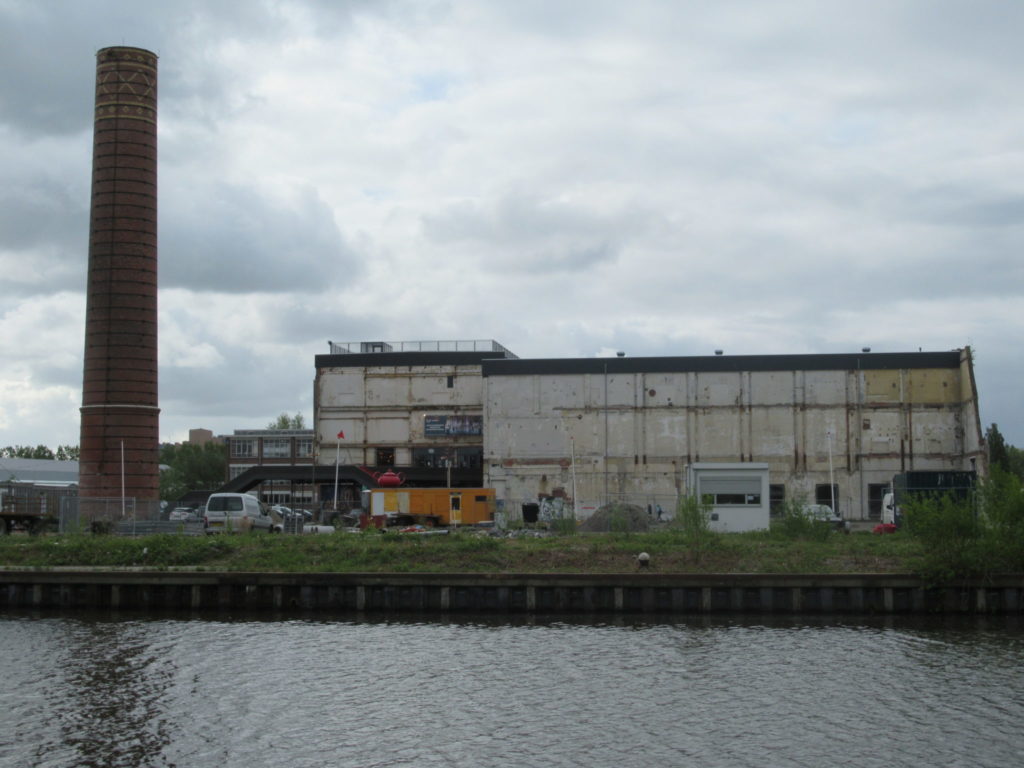
Sugar production is an important industry in Groningen, a city surrounded by large fields of sugar beets. I still remember the sweet and musty smell wafting through the air from September to January from the time I studied here. What you see on the photo above is only part of the original building – the rest of the factory has been demolished.
The rough edge of a partly demolished wall frames the window of the trendy in-house café, where my friend and I sat drinking endless mugs of tea.
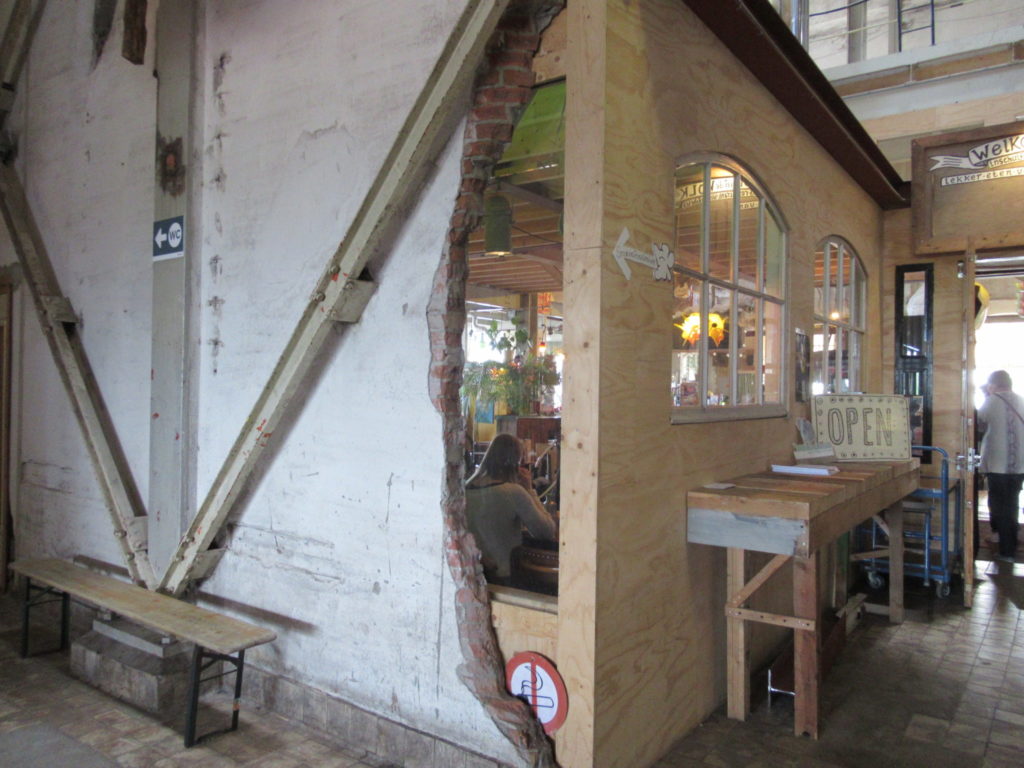
For me, this edition of the Knitting and Crochet Days was very much a social thing, with lots of familiar faces from the North of the Netherlands, the region where I grew up.
Queuing for our tickets, we hugged our first knitting friend. The next familiar face was the cousin I am forever grateful to for teaching me my very first knitting stitches. And then there was a knitter whose blog about her knitting, walks with her dog and life in general I’ve been following for over ten years. And after that…
No, that’s quite enough socialising. Let’s get back to what we’re here for – knitting materials and inspiration. The fair as a whole was rather underwhelming, to be frank. But, focusing on the positives, some stall holders had outdone themselves with beautiful displays of yarns and knitting projects.
Here’s an impression (click on images to enlarge):
My favourite of all was Atelier Lindelicht, with its rainbow of hand-dyed colours:
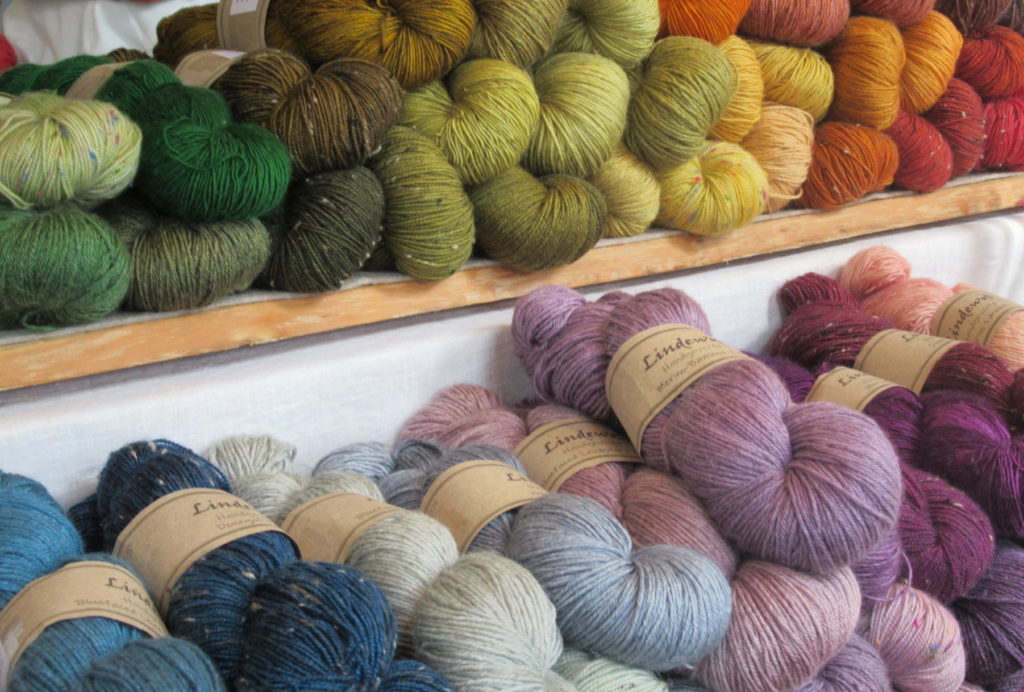
The owner, Marianne, lives in a neighbouring village. She started out as a designer of felt ornaments, but now also dyes yarns in very small batches. (Sadly for those of you living further away, she only sells her yarns at fairs and markets.) What I like about her yarns is the quality of the materials and the depth of her beautiful jewel-like colours.
My eyes are drawn especially to her blues, pinks and purples (see the picture at the top of this post, too).
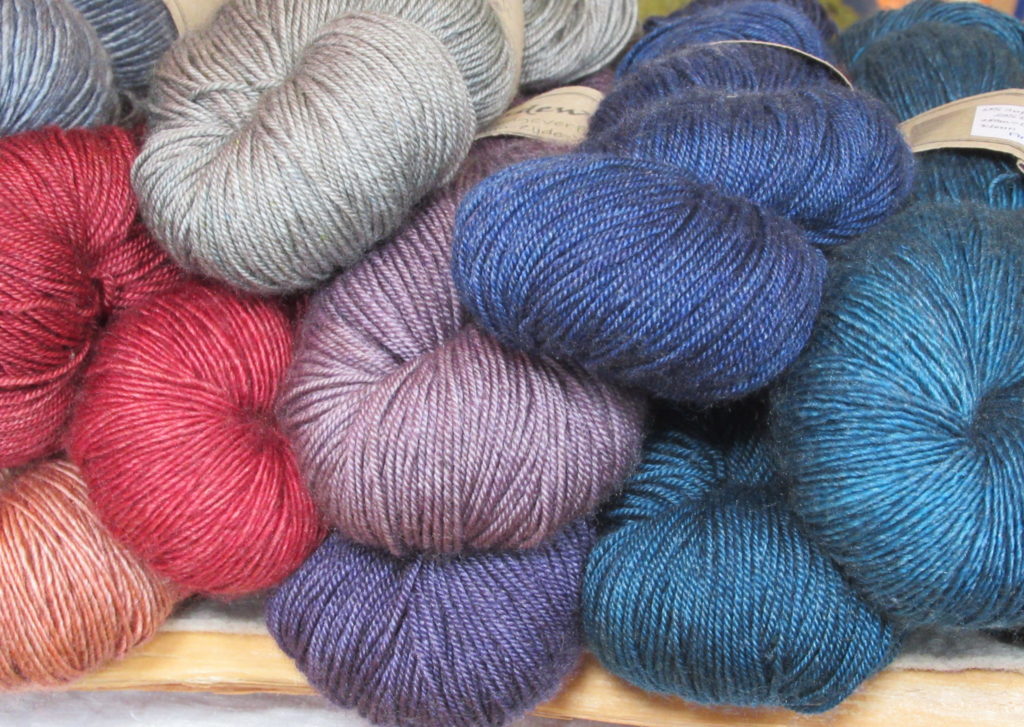
This time I didn’t buy any of her lovely skeins, though, as there are several in my stash waiting to be knit up. In fact I didn’t buy any yarn at all at this fair.
What I did buy was a set of interchangeable circular knitting needles:
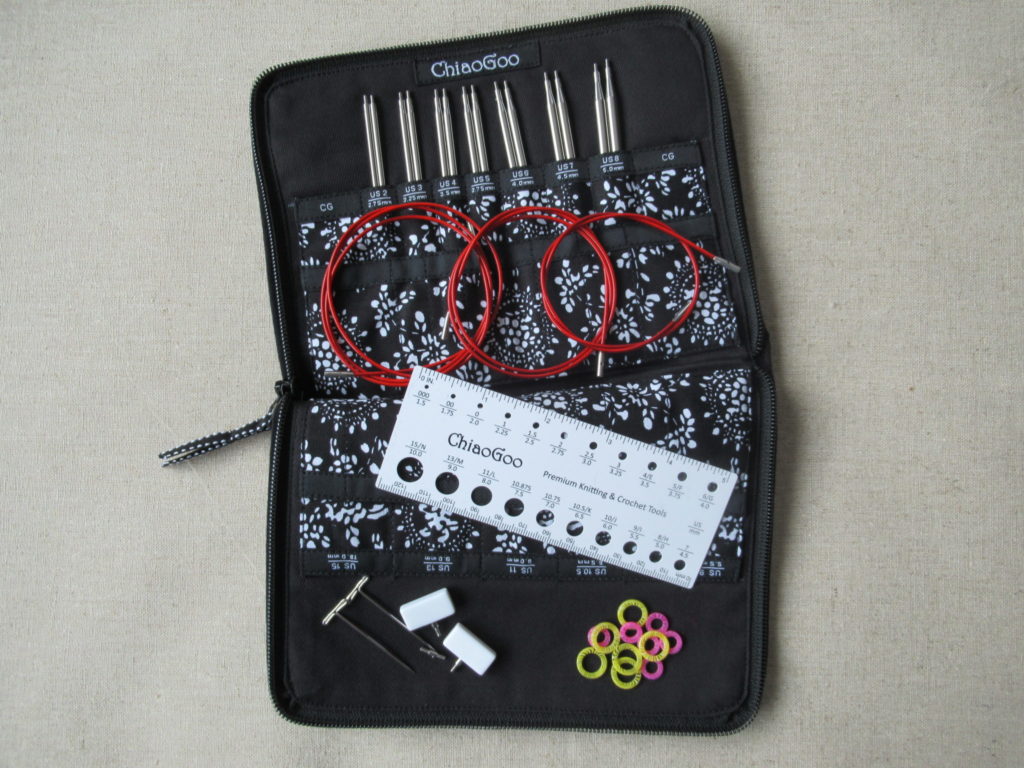
I already have one exactly like it at home, so why buy another one? Well, I use some of these needles almost every day, and sometimes need more than one of the same size at the same time.
The set (Twist Red Lace small) contains 7 pairs of 13 cm long needle tips ranging in size from 2.75 to 5.0 mm, as well as three cables in different lengths. There are also 2 end stoppers (the white rectangular things), 2 keys (for fastening the tips to the cables) and a cable connector, 12 stitch markers in 2 different sizes, and a needle gauge (the white ruler).
It’s quite an investment, but I know that I’ll enjoy using it for years to come.
Before we knew it, it was time to go home. One last picture of some of the inevitable graffiti on the factory building:
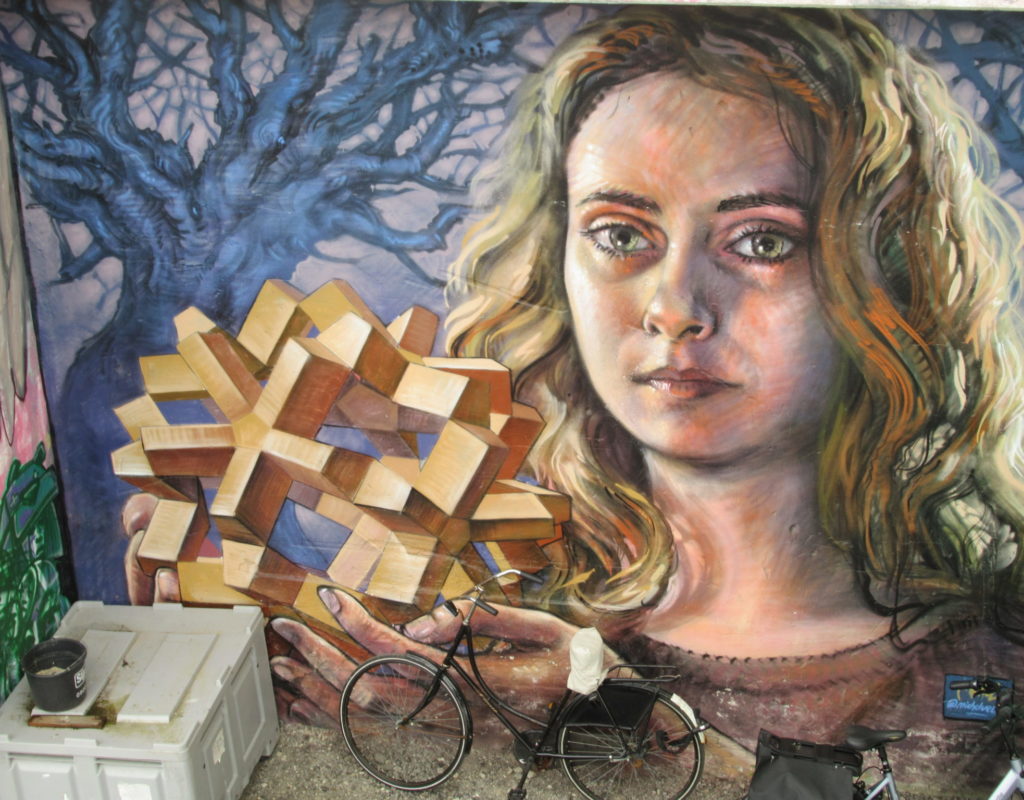
The bicycle parked against it, gives an idea of the size of this work of art.
To be honest, I felt slightly out of my comfort zone in this industrial setting. I didn’t name my website for the blackbird (Turdus merula in Latin) for nothing. We (the blackbird and I) are birds of woodlands, gardens and other green spaces. I tried very hard to approach this days’ urban surroundings with an open mind. And my mind could really appreciate the raw aesthetics, but my heart… not so much.
My heart said: Ah, so happy to be back in my natural habitat!
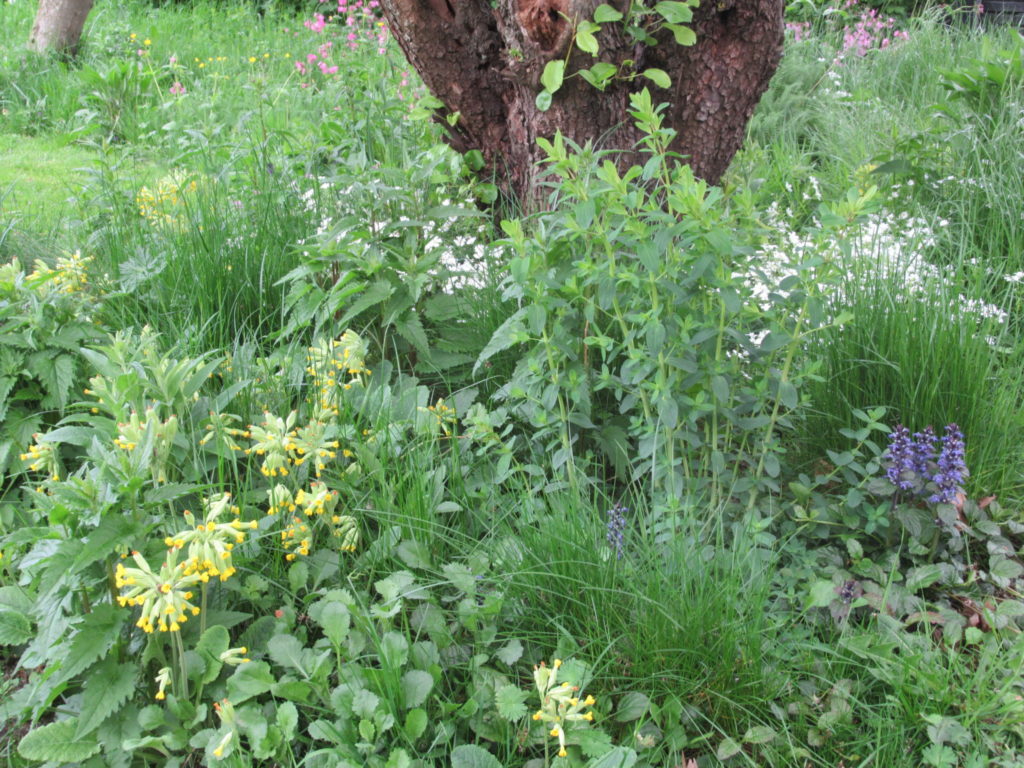
Note: This post isn’t sponsored in any way. I just write about things I like because I like them.
Yarn Review: Manos ‘Fino’

Do you know that feeling – you see a yarn and immediately fall in love?
Nowadays I try to be sensible and only buy yarn with a specific project in mind. But it still happens to me every now and then that I see a yarn that is so beautiful I just have to take it home with me, even though I have no idea what I’m going to do with it.
‘Fino’ from Manos del Uruguay is one of those yarns. The tiny ball in the yarn bowl in an earlier post already gave you a glimpse of it.
Mini-skeins
The yarn I’m showing you in this blog post is a set of mini-skeins in a colourway called ‘Flora’:
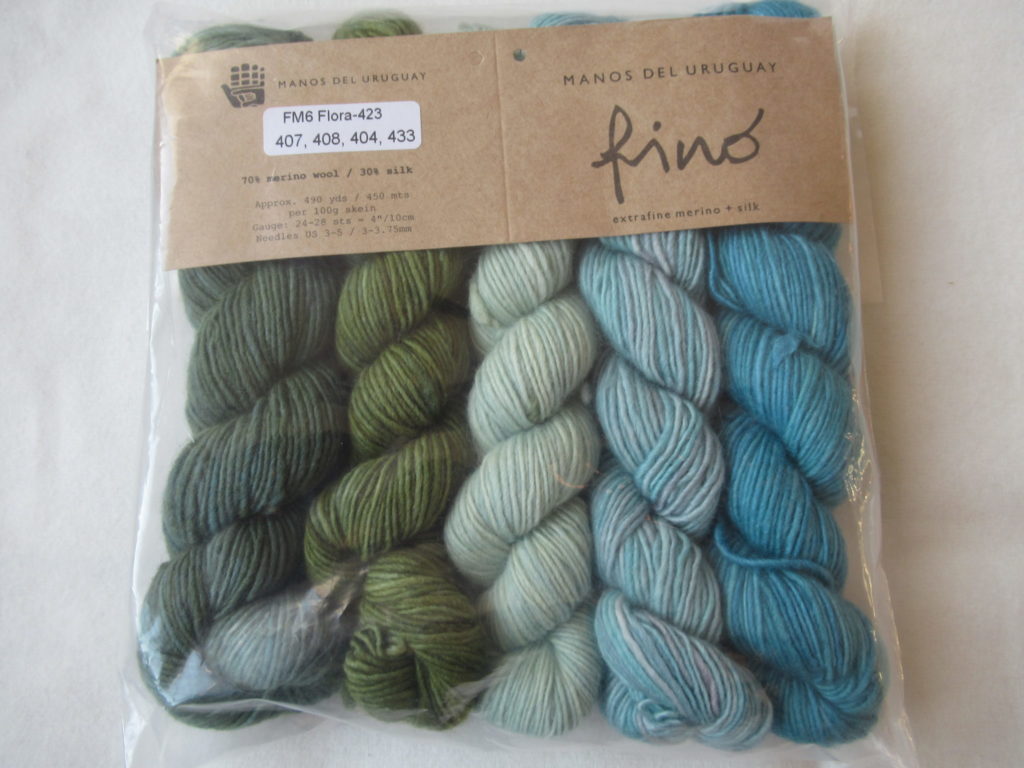
Before I start describing the yarn, I need to tell you that these mini-skeins are exactly the same yarn as the full skeins of Manos ‘Fino’. A set of five 20 gram mini-skeins has the same yardage and the same weight as one 100 gram skein. And all of the colours in the mini-skein sets are also available as full skeins.
The yarn
Some Manos yarns are still spun by hand. Fino isn’t, but it is hand-dyed, and that shows. I realize that may sound negative, but that’s not what I mean at all. On the contrary. The hand-dyeing process yields beautiful colours, as you can see below:
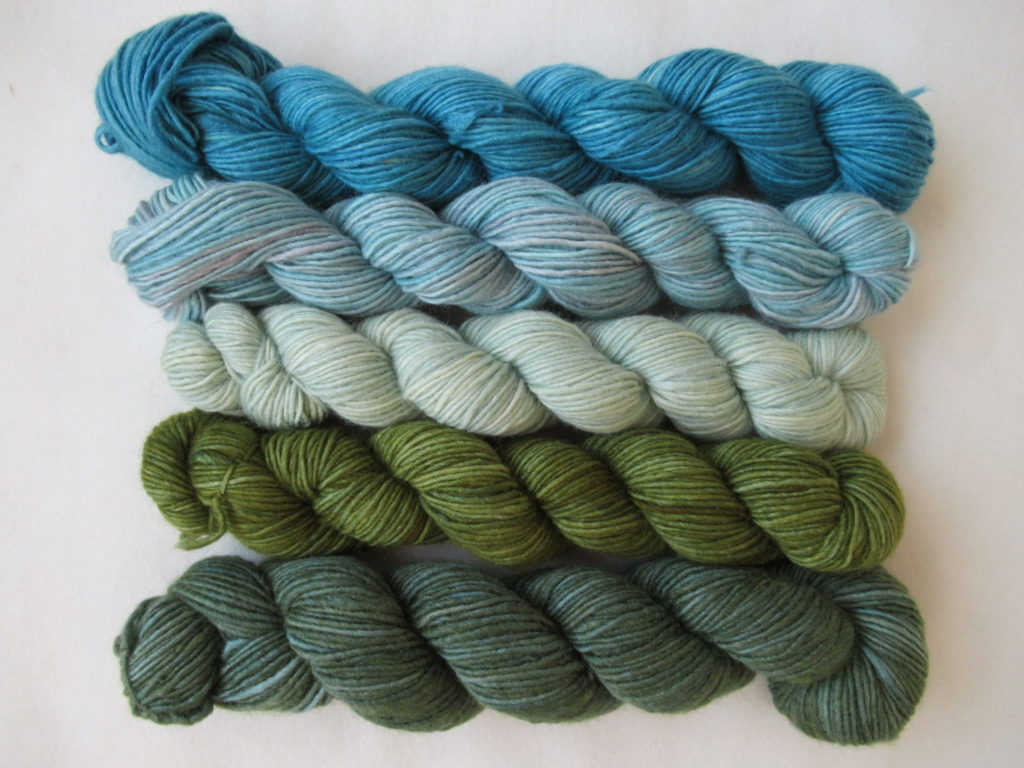
From top to bottom the colours are: 433 Folly, 404 Watered Silk, 408 Crystal Goblet, 407 Velvet Pincushion and 423 Tincture.
Folly, Watered Silk, Crystal Goblet… it looks like they’ve found their colour inspiration at some 18th or 19th century mansion, doesn’t it?
None of the colours are completely solid. Some of them are semi-solids, with lighter and darker shades of the same colour, like the darkest green (Tincture). Others are more variegated, with a combination of different hues. For instance, overall the second colour from the top (Watered Silk) looks pale turquoise. But looking more closely at the yarn knit up in a swatch…
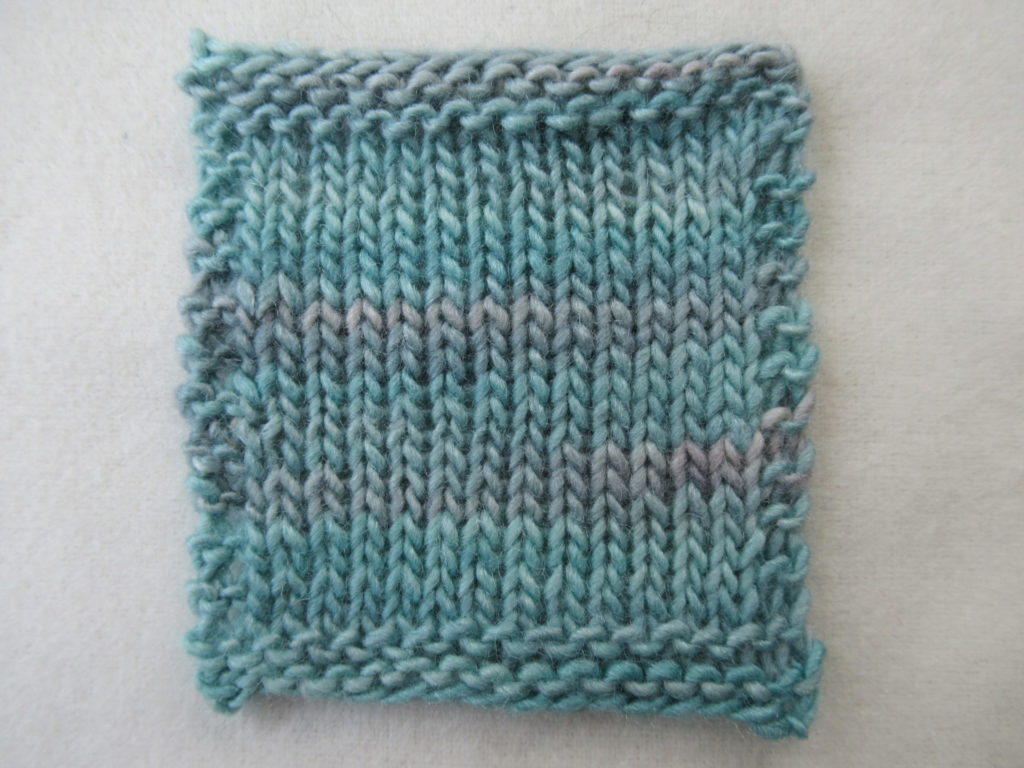
… you can see that there is pale turquoise and even paler turquoise in it, but also some purplish grey, steel blue and mauve. All in all, this gives a lively (but not too busy) effect.
Fino is a light fingering-weight blend of silk and wool with a subtle sheen. It is a single-ply yarn. This means that it consists of just one strand of yarn, unlike most yarns, which have several plies twisted together. I’ve taken a close-up, so that you can see what this looks like:
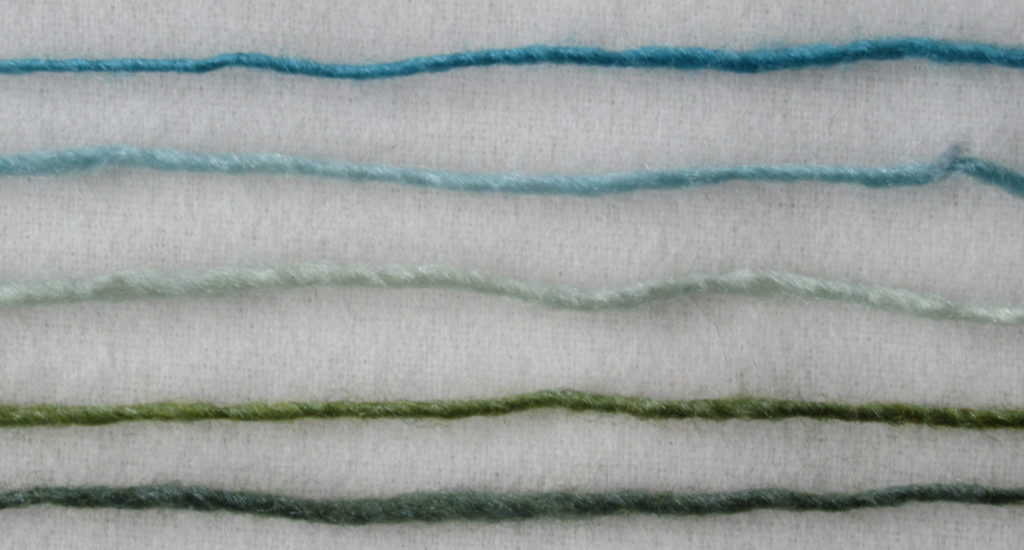
The yarn is not entirely even – it has slightly thicker and thinner bits. I think this adds to its charm on the whole. There were one or two blobs of silk in my yarn that were too thick to my taste, but I was able to remove them very carefully without damaging the thread.
I always like to know where a yarn I’m using comes from. What the story behind it is. So I did some research and discovered that Manos yarns have a very interesting story to tell.
Fair Trade
What I found out is that Manos del Uruguay (Hands of Uruguay) is a not-for-profit organization, comprising 12 individual cooperatives, owned by the women who work there. The cooperatives are all located in rural areas of the country and their products are certified by the World Fair Trade Organization.
There’s much more to tell, but the artisans can tell their own story much better than I ever could. In honour of their fiftieth anniversary they’ve made a 6-minute video that gives a great impression of their work. Don’t you just love those long, long lines with skeins of dyed yarn, drying on the air outside?
The knitting experience
So what is it like to knit with this yarn? Absolutely lovely, in my humble opinion. I’ve knit some small swatches, one in each colour:
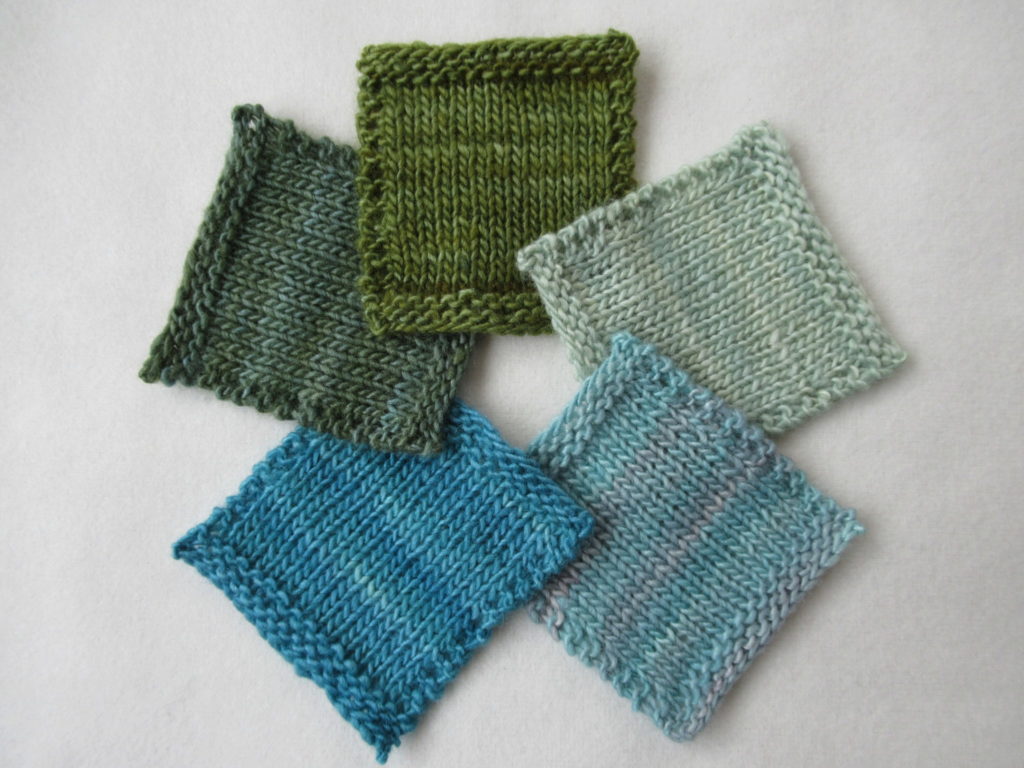
I have a little more experience knitting with this yarn than just these small swatches, as I’m also working on another project in Fino, an easy-to-knit accessory that I hope to tell you more about later this spring. I first used the blues and greens shown here, and I’m making another version in a totally different (but equally beautiful) colourway now.
The yarn knits up to a fairly even fabric. Very fine, or more open and drapey depending on the needle size used. The yarn is so beautiful that just plain stocking stitch would be a good choice, but I think it will work equally well in a cable or lace pattern. Because it is so soft, it is perfect for accessories worn close to the skin, like shawls, cowls or hats. I don’t think it will stand up to frequent (machine) washing, so I wouldn’t recommend it for baby knits.
Some bleeding is common in hand-dyed yarns. But when I soaked the items I knit in a non-rinse wool detergent these colours didn’t bleed at all.
Yarn facts
- Name: Fino
- Manufacturer: Manos del Uruguay
- Skein weight: 100 g (mini-skein sets 5×20 g)
- Length: 450 m (490 yds)
- Recommended needle size: 3-3.75 mm (US 3-5)
- Recommended tension/gauge: 24-28 sts to 10 cm (4 in)
- Composition: 70% wool; 30% silk
- Made in: Uruguay
- Available in: 40 shades
- I used: Mini-skein set ‘Flora’
- I paid: € 29.70 for a set (February 2019)
Yarn shop
In fact, I didn’t buy this yarn in a shop, but at a big annual needle crafts fair, where I spent a wonderful day with a friend who loves knitting just as much as I do. The yarn seller does have a shop – De Roopoorte, near Ghent in Belgium – but I haven’t been there, so I can’t tell you about it. What I can tell you is that Evelyne, the owner, has a good eye for beautiful yarns and interesting pattern books. And she stayed calm and friendly all day long, patiently giving people advice about yarns and patterns, no matter how big the crowds milling around her stand got.
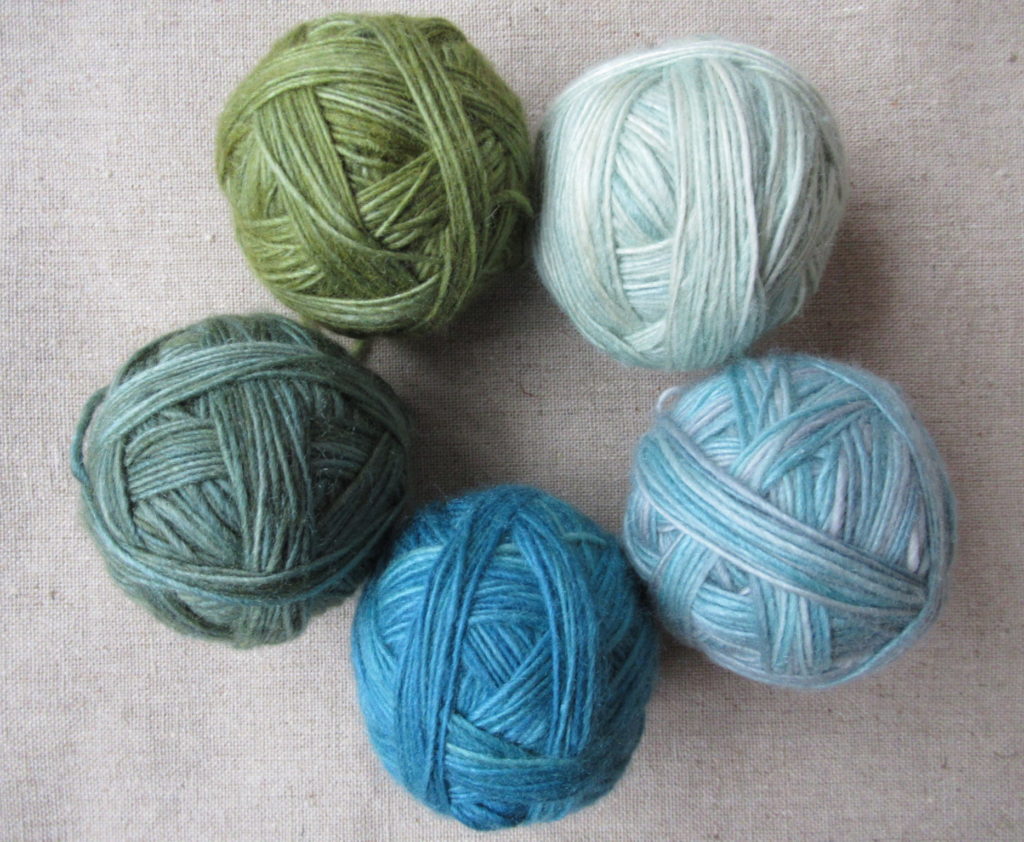
Silly but honest
You may (or may not) have noticed that I sometimes add notes to my blog posts saying something like ‘This post is not sponsored in any way’. I feel a bit silly adding these notes. I mean, who’d want to sponsor me?
The reason I’m adding these notes is that I want to make it clear that nobody is paying me to say nice things about their yarn, shop, designs, books etcetera. When I say nice things about something or somebody, it’s because I really mean them. This also applies to this post. Honesty and integrity are important values to me. So even though it feels rather silly, I’ll keep adding these notes from time to time.
Fun
I’ve had such fun playing with this yarn – winding the small skeins into balls, knitting those tiny swatches, taking lots of photos. I hope it’s been fun to look at and read, too. Thank you for spending some time here.

A Visit to a Norwegian Spinning Mill
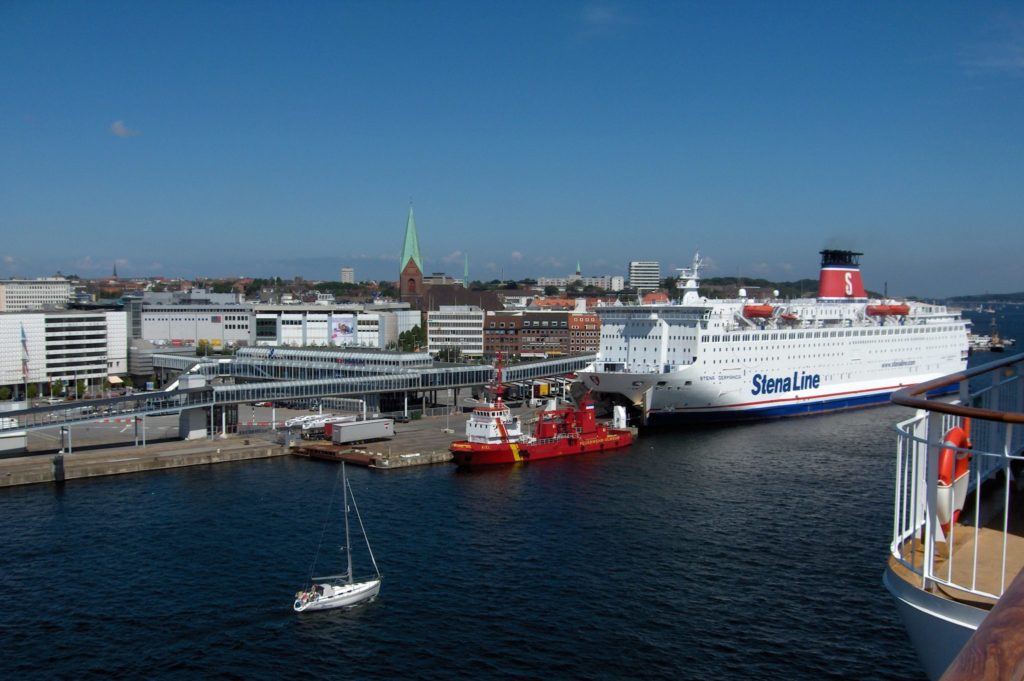
Hello! Welcome on board the ferry from Kiel, Germany, to Oslo, the capital of Norway.
Today we’re travelling back in time to 2006. The year our family of three spent a Summer Holiday in Norway. One of our destinations is a spinning mill on the west coast, a little north of Bergen.
But before we get there, we’ll be seeing some sights along the way. I won’t bore you with our complete family photo album, but I do want to show you a bit of this beautiful, rugged country that has such a great knitting tradition.
Our accommodation for most of this holiday is a tent. It isn’t big, but it’s comfortable. And we’ve even brought some chairs.
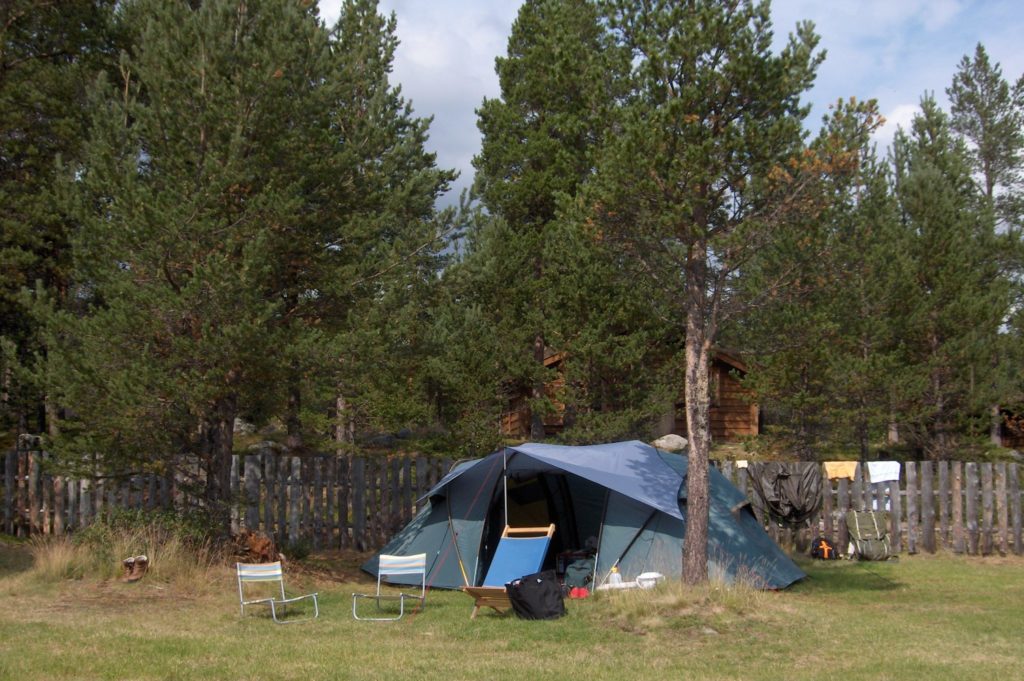
From Oslo we are first travelling north, to Jotunheimen National Park. This mountainous area is ideal for hiking. There are miles upon miles of hiking trails, the main routes clearly marked with big red T’s on rocks.
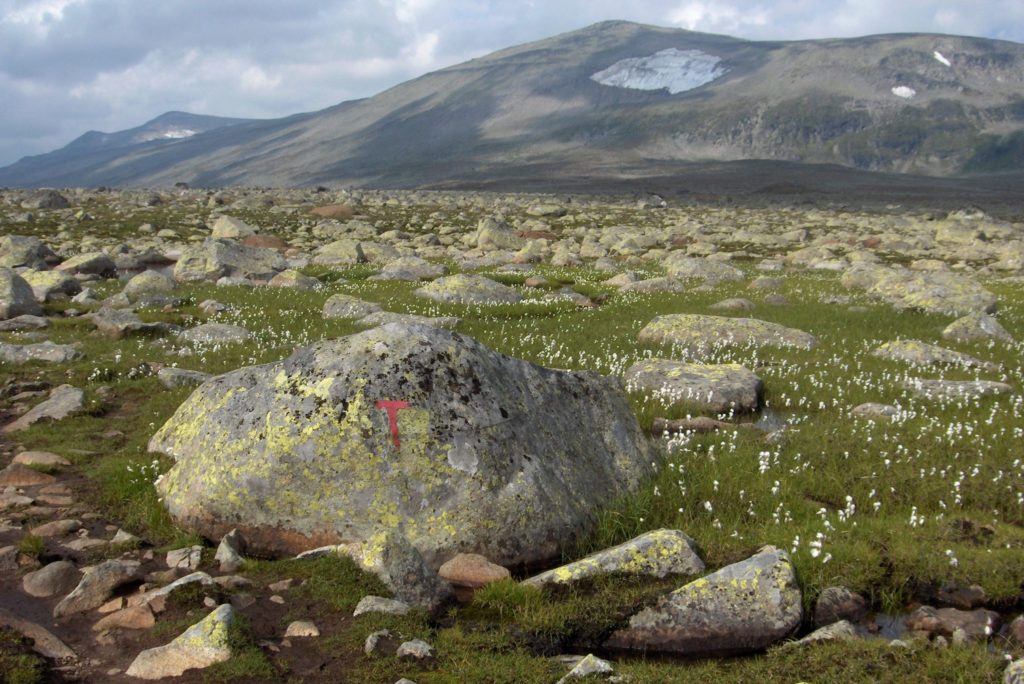
The scenery is breathtaking, the air is clean and fresh, and – apart from the sound of wind, water and birds – silence reigns. (Click on pictures to enlarge.)
I hope you’ve enjoyed these walks and are not too stiff and sore from the unaccustomed climbing. Leaving Jotunheimen, we’re now travelling in a southwesterly direction.
At Borgund we visit a stave church from around 1200 AD. The roof of this wooden building is decorated with both dragon’s heads and crosses, and there are intricate wood carvings around the entrance. Inside it is rather dark, as the windows are small. The wood is charred and tarred for preservation, which gives off a very special smell.
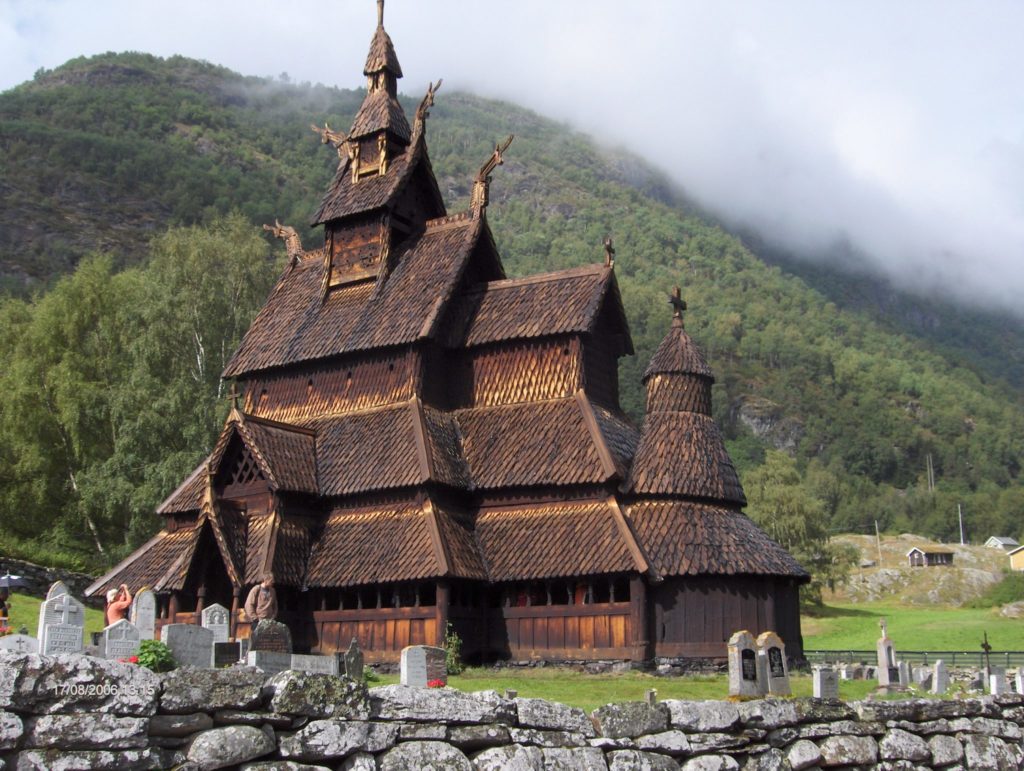
Our next stop is Bergen, the second largest city of Norway (280.000 inhabitants). These are the wooden buildings at Bryggen, the colourful historic harbour front:
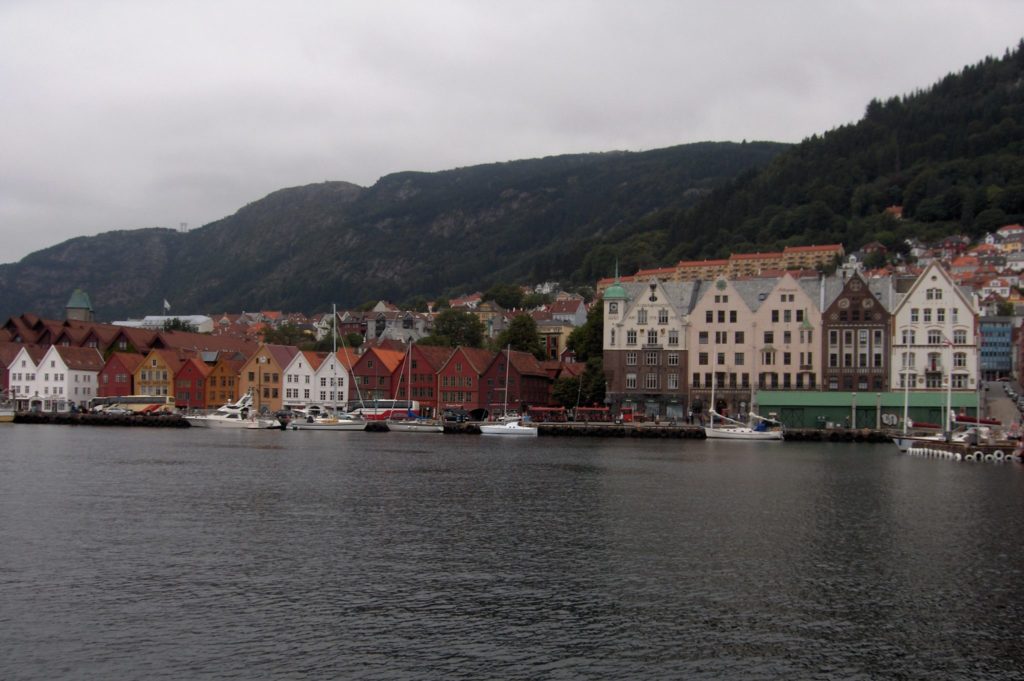
Bergen is notorious for its rainfall. There’s a well-known joke about it that goes like this:
A foreign tourist visiting Bergen in a downpour addresses a local boy, ‘Boy, please tell me, is it always raining in Bergen?’ The boy answers, ‘I wouldn’t know, Sir. I’m only six.’
We’d heard the joke and decided to rent a cottage in the area instead of putting up our tent again.
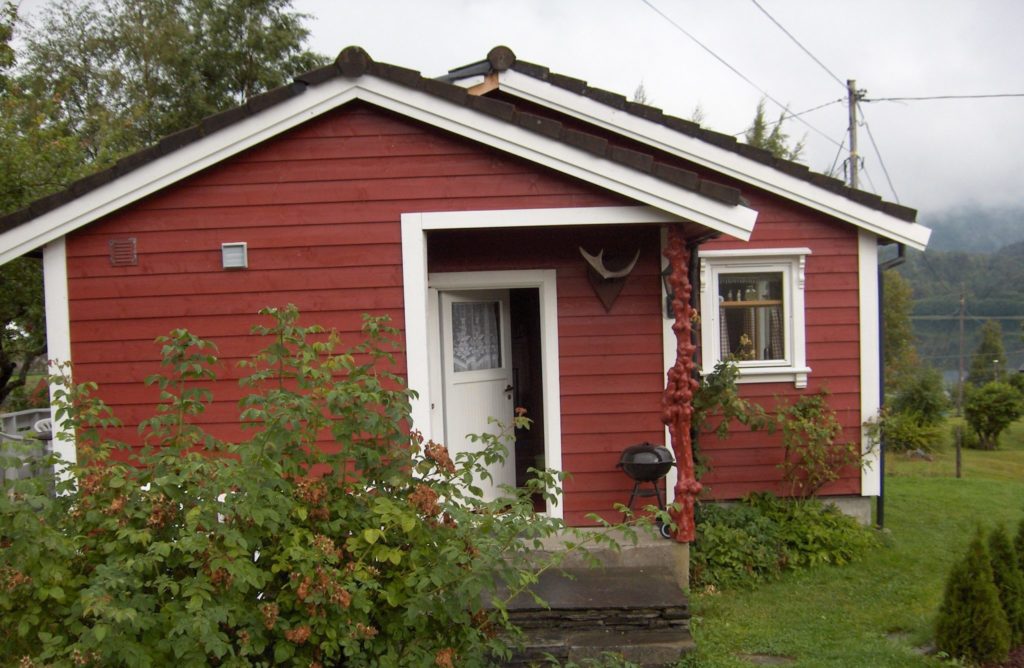
It is painted in Scandinavian red and one corner of the roof is supported by a knobbly tree trunk. Inside everything is made of unpainted wood – the walls, the floor, the furniture. On our menu is a lot of salmon, as well as Pytt i Panne, a traditional one-pot dish with potatoes, leeks and ham.
From the cottage it is only a short drive north to Hjelmås, where we are going to visit a spinning mill, called Hillesvåg Ullvarefabrikk.
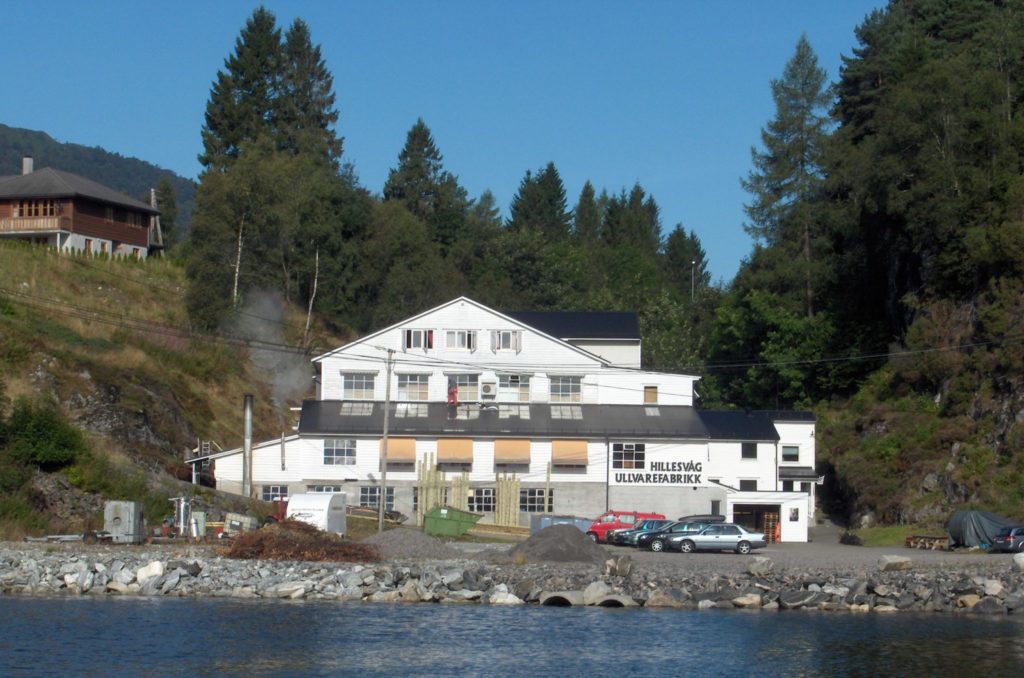
Hillesvåg Ullvarefabrikk was founded in 1898. Some of the machinery from the early days is still in use. The front door of the building opens right into a small shop brimful with yarn and ready-knit socks, woollen underwear and sweaters.
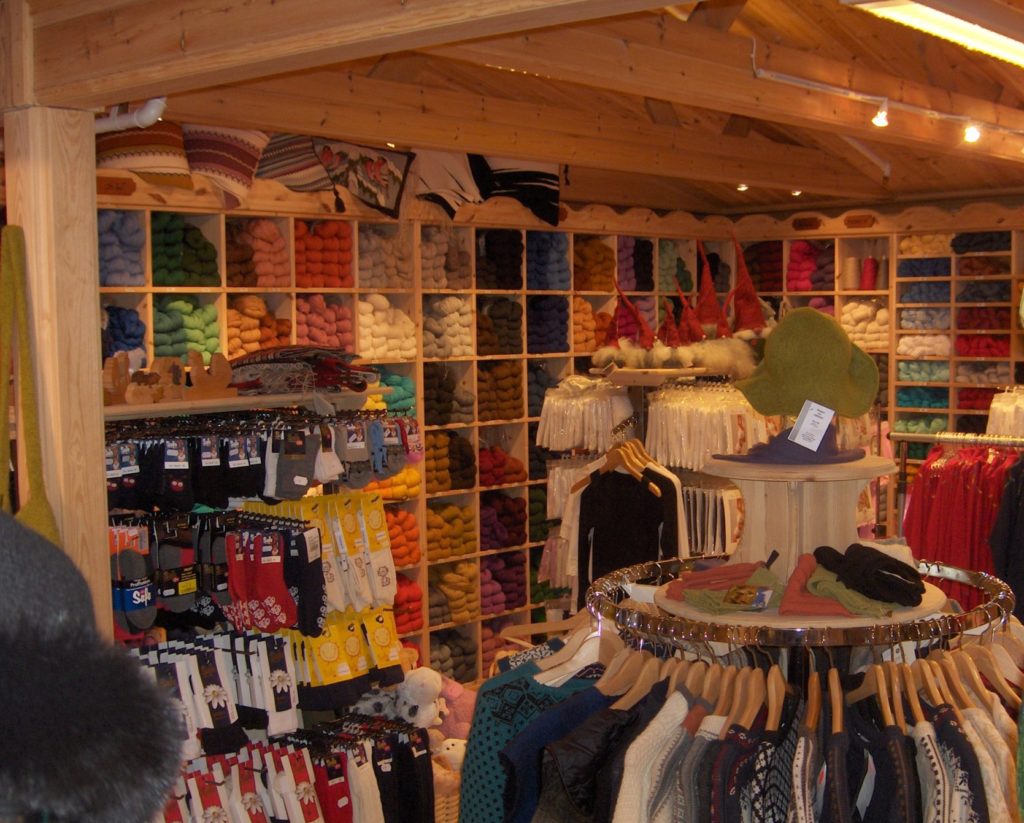
We ask the lady behind the counter if we could, perhaps, take a look around the actual mill to see the yarn being spun. ‘Of course,’ she says, and she calls the general manager, who kindly gives us a tour of the premises. He tells us that all of the wool they process is from Norwegian sheep.
First he shows us how the wool is fed into the carding machine…
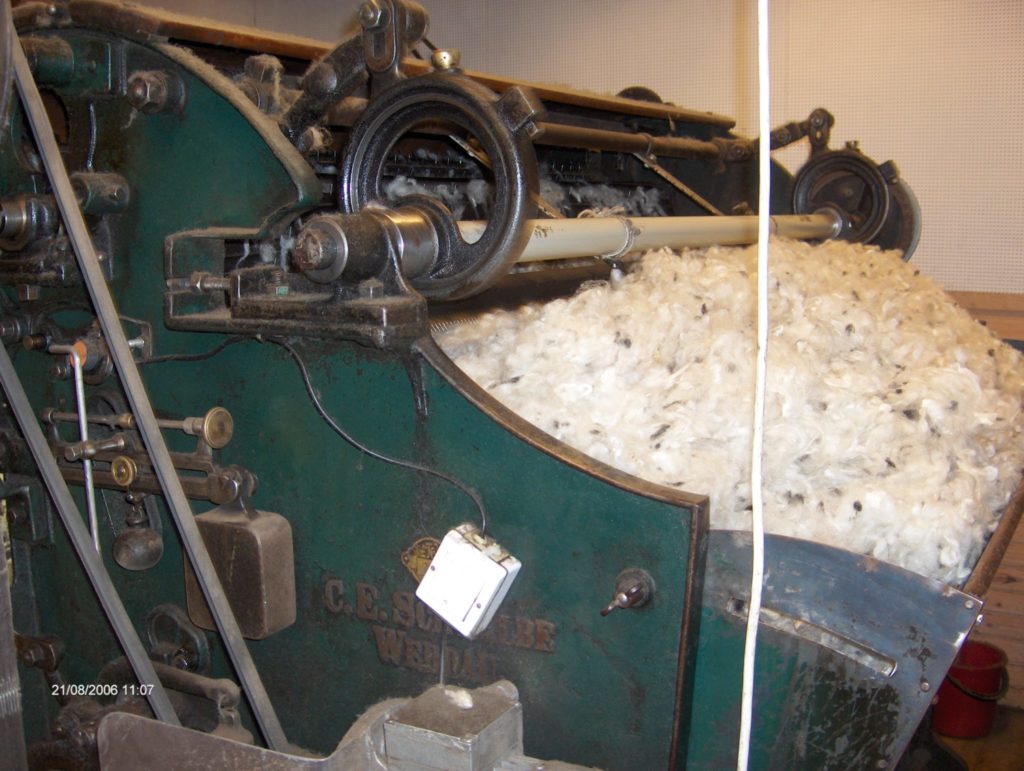
… and is carded by roll upon spiky roll to align the fibers, and produce a sliver ready for spinning.
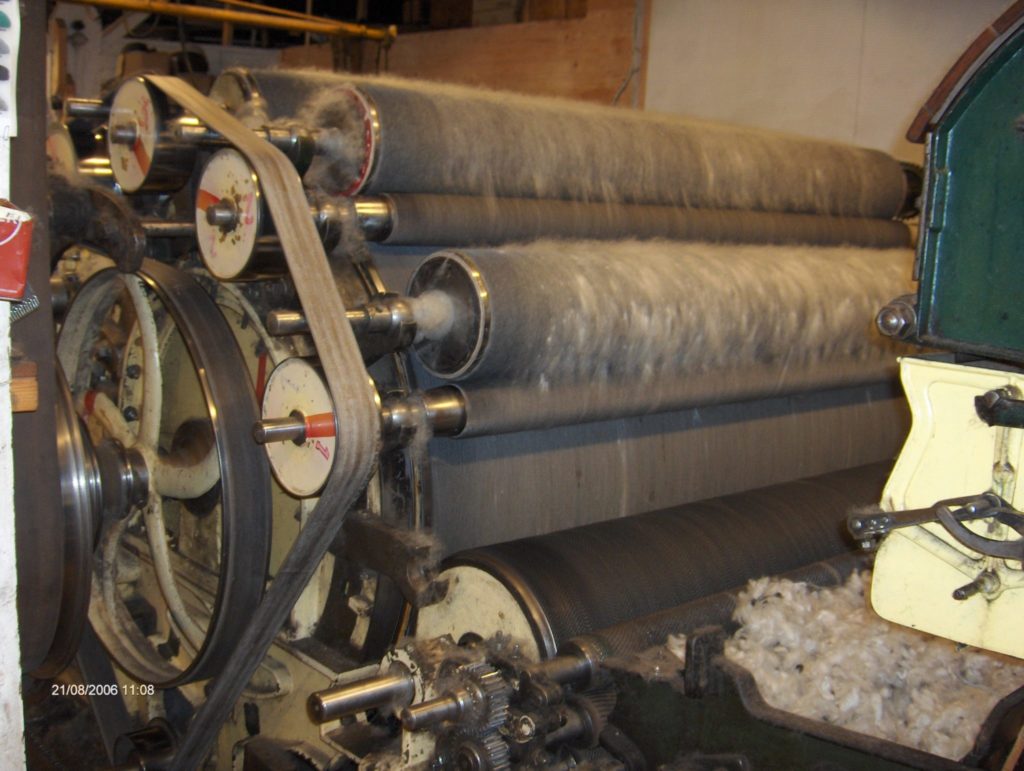
Then we see how the carded wool is spun onto yarn spools.
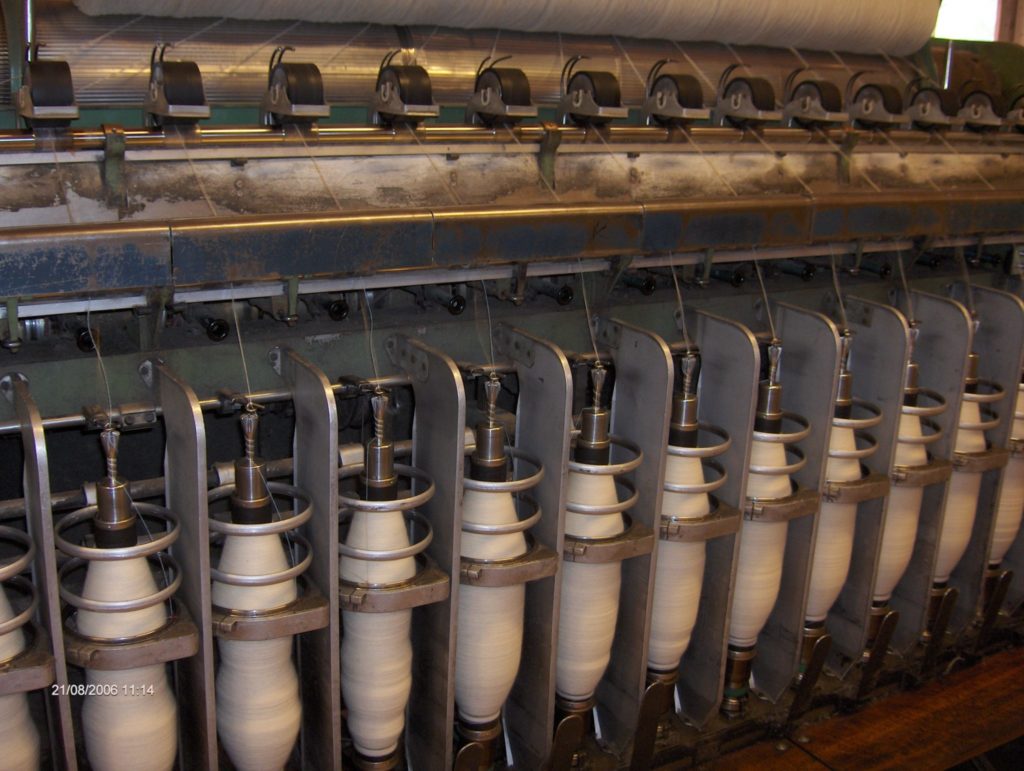
The yarn is dyed in big vats, in over a hundred different colours. (Unfortunately we didn’t take any photos of those. At the time I had no idea that I’d ever be publishing this on a blog. Had I even heard of blogs in 2006?)
Back in the shop it’s time for another look at the colourful yarn display. After much deliberation, I finally decide to buy the kit for the ‘challenging’ cardigan I mentioned in my previous post.
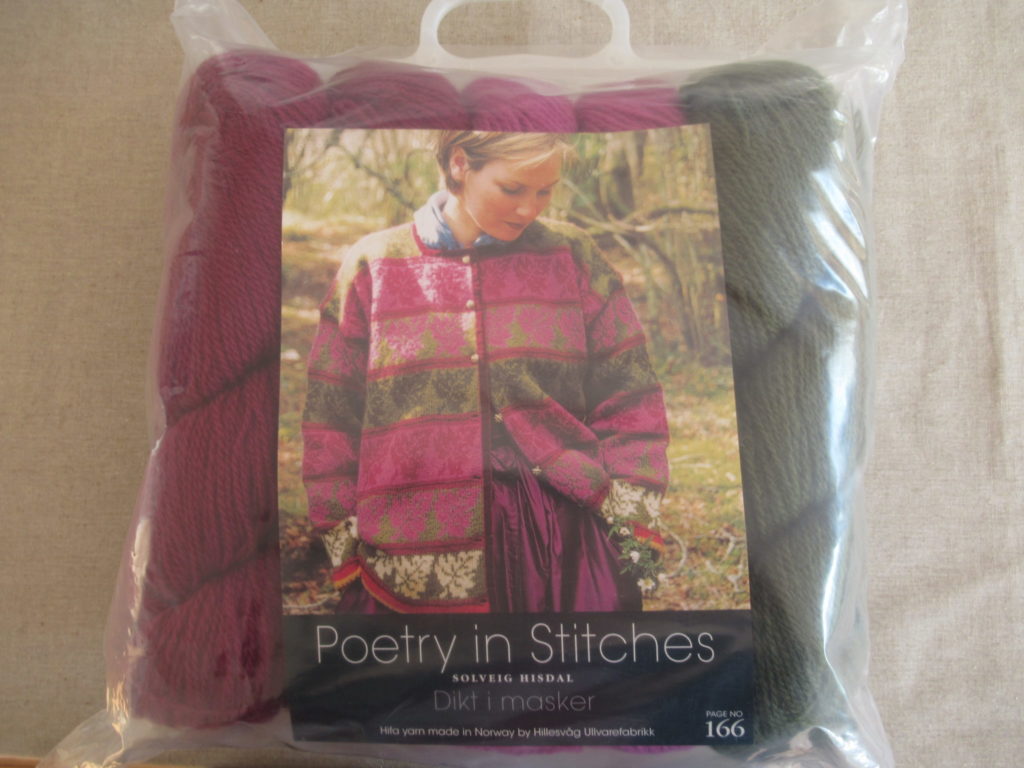
Nowadays, Hillesvåg Ullvarefabrikk is an Economusée, which means that they are still a working mill, but now officially give guided tours.
Well, it’s high time to get back on the ferry for the return journey. I hope you’ve enjoyed your mini-holiday in Norway. Thank you for travelling with Merula Designs and I hope to see you again soon.
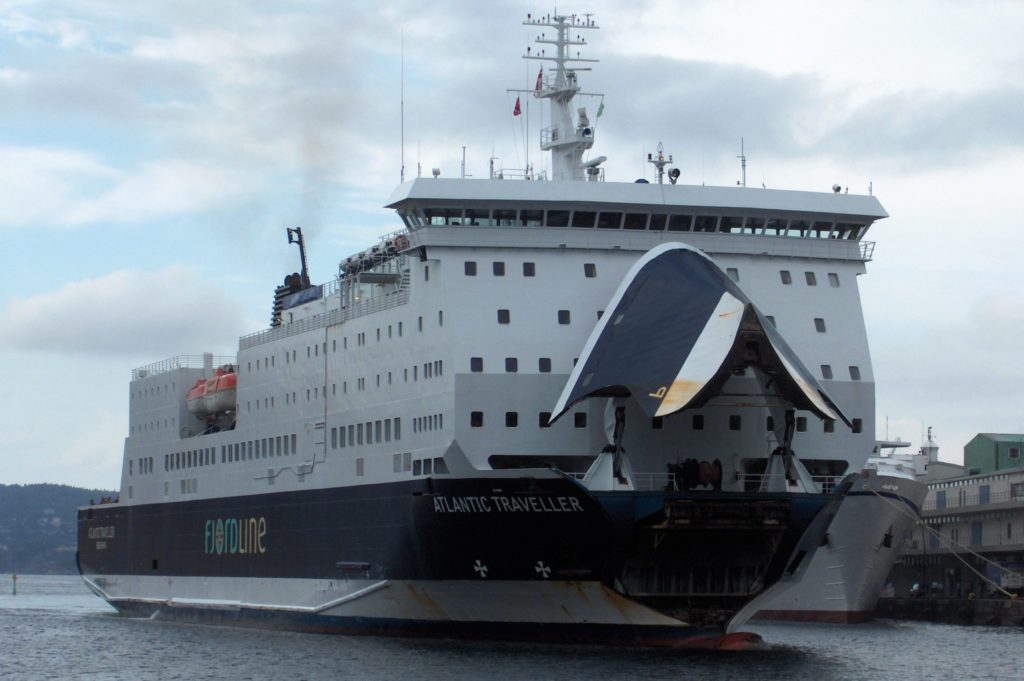
Note: This post is not sponsored in any way. I just like talking about knitting materials and where they come from. (Not that I would mind being sponsored by the Norwegian Tourist Board but, alas, they haven’t discovered my blog yet.)
